
- View history
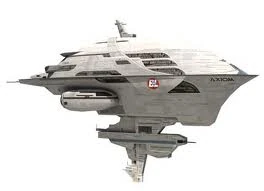
The Axiom is one of the locations seen in WALL•E .
- 1 Description
- 5 References

Description [ ]
The Axiom is one of the countless Starliner spacecrafts built by the Buy n Large Corporation (BNL) to evacuate humanity to space while the Earth (that was overwhelmed by trash due to mass consumerism) was cleaned by the BNLs machines, trash compactor robots called WALL-Es and huge mobile incinerators . It was described as “the jewel of the BNL fleet” and was most likely its flagship.
Designed as a massive luxury cruise ship, the Axiom kept everyone aboard fed and entertained as it cruised through space. The ship was crewed almost entirely by robots, though there was a human captain . The majority of the ship's functions were handled by its computer, as well as an autopilot called AUTO . The ship has all the trappings of a typical cruise liner, such as shops, restaurants and swimming pools, as well as robotic stewards to keep order and an escape pod bay in case of an emergency.
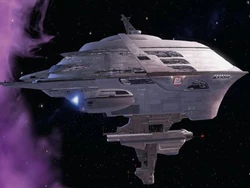
The Axiom orbiting the Horsehead Nebula.
WALL•E hitched a ride on one of the EVE probe transport ships that was returning to the Axiom .
At the time when he arrives at the Axiom , it as well as the other Starliners have been in space for hundreds of years because the cleaning operation had failed. The BNL CEO Shelby Forthright had ordered all Autopilots to follow Directive A-113 which was to stay in space and not return to Earth, regardless of any proof of life sustainability.
When the ship has docked in the Axiom , WALL•E sees how the bots begin to unload the five EVE units that the ship has transported. Because he loves the EVE probe one he wants to follow her, and he places himself on the third EVE so the Unloader arm bot believes that he is the third probe and places him at the place where the cleaner bots led by a small robot called M-O are cleaning the EVEs.
Then GO-4 , the ship's second-in-command, and two SECUR-T steward bots arrive there. GO-4 inspects EVEs, and he realizes that the probe one has found a plant. He summons a cart-like transport robot called MVR-A to take her away. GO-4 hops on the transport bot and a robotic arm loads EVE on it. WALL•E immediately starts to chase the MVR-A.
MVR-A takes EVE and GO-4 (and WALL•E who has grabbed a handle at the back of the transport bot) to the bridge of the Axiom . AUTO inspects EVE and awakes Captain McCrea. AUTO and GO-4 make the captain think that EVE has actually not found anything and that she is just defective. Whilst EVE is being taken care of at the repair ward, WALL•E misunderstood that she is being tortured and intervenes, causing the rejects to be free and identifying him and EVE as "rogue robots". Later, as EVE tries to send WALL-E back to Earth in a life-pod, they see that GO-4 tries to destroy the plant he has stolen from EVE. WALL•E manages to save the plant and EVE takes it to the captain.
After that, the captain orders AUTO to return back to Earth, but he disobeys because he must follow Directive A-113 . As McCrea tries to argue whether or not earth is habitable, AUTO and GO-4 stage a mutiny, locking McCrea in his quarters, overpowering EVE and WALL-E and sending them both down the garbage chute. Determined to return to Earth and restore it to its former glory, Captain McCrea fights AUTO for control of the ship, destroying GO-4 in the process when he attempts to intervene. EVE, WALL•E and the plant were almost sucked out into space, but EVE managed to free them both with M-O and the WALL•As helping to stop the airlock doors. When convinced to repair him on Earth, EVE helps WALL•E bring the plant to the Lido-Deck whilst the reject bots pursuit. AUTO temporarily rids himself of the captain by spinning himself; since he serves as the ship's wheel, this causes the Axiom to tip onto her starboard side, dislodging the passengers from their hover chairs. Though WALL • E is nearly destroyed trying to impede AUTO's efforts to prevent the ship from returning to Earth, Captain McCrea deactivates AUTO and the plant is placed in the scanner, triggering a hyper-jump which returns the Starliner to Earth and allows EVE to repair WALL•E back to life and it's passengers to begin restoring their home world. In the end credits sequence, it was shown still docked next to a lake with vegetation growing over parts of its hull.
- The literal meaning of the word "Axiom" is something that is taken for granted, reflecting on the Axiom population's over-indulgent lifestyle.
- According to "Captaining the Axiom" —a command orientation video shown to captains on their first day—the Axiom operates on a 25-hour day, and was located in the Kuiper Belt . [1]
- When WALL•E first sees the Axiom , it is located behind the Horsehead Nebula .

- Captain Reardon : 2105 - 2248 (first generation)
- Captain Fee : 2248 - 2379 (second generation)
- Captain Thompson : 2380 - 2520 (third generation)
- Captain Brace : 2521 - 2645
- Captain O'Brien : 2646 - 2774
- Captain B. McCrea : 2775 - 2805
- Using the years of service of the captains as a guide (around 140 years), assuming a captain could attain the rank at the age of 20, suggests the average lifespan of humans was, at the very least, around 160 years (this may easily be explained by microgravity conditions aboard, which led to much-lessened stress on muscles & hearts). Captain McCrea's two previous predecessors, Brace and O'Brien, however, served for around 130 years, suggesting that the starliner lifestyle was taking its toll on humanity. (Worth noting is that rather than an advanced life expectancy, these expanded dates may be due to time dilation. The Axiom, likely traveling between 90 to 95% the speed of light, would experience a fraction of the time (around 1/3) that actually passed on earth. The Axiom may be keeping track of time using Earth years while keeping time dilation in mind. If you divide the years of service for each of the captains by 3, they become far more reasonable lengths of time)

- The Axiom is seen in the background of the Hall of Everything in Soul
Gallery [ ]

References [ ]
- ↑ "Captaining the Axiom " WALL•E (Blu-ray, disc-two). ( also on YouTube )
- ↑ "Captain's Log: The Evolution Of Humans" WALL•E (Blu-ray, disc-two).
- 1 Lightning McQueen
- 2 Inside Out 2
- 3 Johnny Worthington III
- Cast & crew
- User reviews

In the distant future, a small waste-collecting robot inadvertently embarks on a space journey that will ultimately decide the fate of mankind. In the distant future, a small waste-collecting robot inadvertently embarks on a space journey that will ultimately decide the fate of mankind. In the distant future, a small waste-collecting robot inadvertently embarks on a space journey that will ultimately decide the fate of mankind.
- Andrew Stanton
- Pete Docter
- Jim Reardon
- Elissa Knight
- Jeff Garlin
- 1.5K User reviews
- 240 Critic reviews
- 95 Metascore
- 96 wins & 95 nominations total

- Shelby Forthright - BNL CEO

- Ship's Computer

- Axiom Passenger
- (uncredited)

- Hoverchair Mother

- Pool Mother

- Blond Boy in Commercial
- Young Girlfriend
- Brunette Boy in Commercial
- Commercial Human
- All cast & crew
- Production, box office & more at IMDbPro
More like this

Did you know
- Trivia WALL·E stands for: Waste Allocation Load Lifter: Earth Class. EVE stands for: Extra-terrestrial Vegetation Evaluator.
- Goofs (at around 1h 19 mins) When the Axiom goes into a roll, the passengers and a considerable amount of heavy equipment are thrown off balance, rolling and piling up against one side of the common area. This should not happen as the gravity originates within the ship, not from an exterior source "beneath" it. Its artificial gravity should hold everyone and everything right side up no matter what position it assumes. It is possible that AUTO intentionally or inadvertently shifted the angle of the artificial gravity during the "roll" maneuver, but it was still presented as being directly caused by the roll, and there is no reason for such an effect to have been designed into the ship originally.
EVE : Name?
WALL.E : WALL-E.
EVE : WALL-E?
WALL.E : [attempting to pronounce it] Eeee...
WALL.E : Eeeee... aah.
EVE : "EVE"! "EVE"!
WALL.E : Eeeee... va?
[EVE giggles]
- Crazy credits The Pixar logo at the end has the lamp Luxo Jr's light bulb burn out, so WALL-E enters and replaces the light bulb. But as he leaves he accidentally knocks down the "R" in the logo, and he tries to cover it up by posing like an "R".
- Alternate versions End credits for international versions feature additional dubbing credits footage. It contains animation of WALL·E in the same 8-bit video game graphics style as the original end credits compacting two vertical rows of different objects into cubes of garbage only to have two WALL·A robots collide in the front of the screen, closing the credits.
- Connections Edited into Burn-E (2008)
- Soundtracks Down to Earth Music by Peter Gabriel and Thomas Newman Lyrics by Peter Gabriel Performed by Peter Gabriel , featuring The Soweto Gospel Choir Produced by Peter Gabriel L.A. Sessions Produced by Thomas Newman Recorded by Richard Chappell Mixed by Tchad Blake
User reviews 1.5K
- TheLittleSongbird
- Dec 1, 2009
- What is 'WALL·E' about?
- Is 'WALL-E' based on a book?
- In what year does the movie take place?
- June 27, 2008 (United States)
- United States
- Disney (United States)
- Official Facebook
- Walt Disney Animation Studios - 2100 Riverside Drive, Burbank, California, USA
- FortyFour Studios
- Pixar Animation Studios
- Walt Disney Pictures
- See more company credits at IMDbPro
- $180,000,000 (estimated)
- $223,808,164
- $63,087,526
- Jun 29, 2008
- $521,320,168
Technical specs
- Runtime 1 hour 38 minutes
- Dolby Digital
- Dolby Atmos
Related news
Contribute to this page.
- IMDb Answers: Help fill gaps in our data
- Learn more about contributing
More to explore

Recently viewed
- Account Settings
- The Disney Bundle
- Parks & Travel
- Walt Disney World
- Disney Cruise Line
- All Parks & Travel
- Movies Anywhere
- Disney Movie Insiders
- 20th Century Studios
- Accessories
- Disney News
- Disney on Broadway
- Disney on Ice
- Disney Live!
- Walt Disney World Resort
- Disneyland Resort
- Aulani - A Disney Resort and Spa
- Adventures by Disney
- Disney Vacation Club
- D23: The Official Disney Fan Club

June 27, 2008
Animation, Science Fiction
After hundreds of lonely years of doing what he was built for, the curious and lovable WALL-E discovers a new purpose in life when he meets a sleek search robot named EVE.
Rated: G Release Date: June 27, 2008
Directed By

- motionpictures.org
- filmratings.com
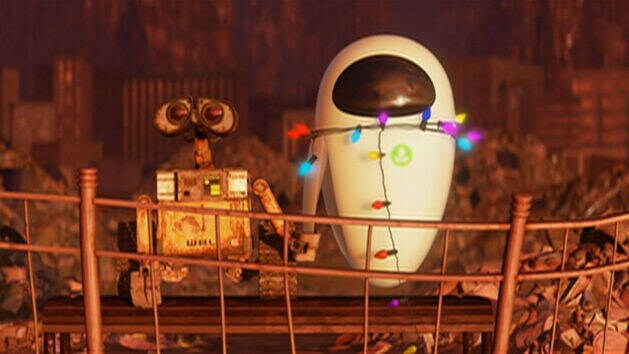
WALL-E Trailer
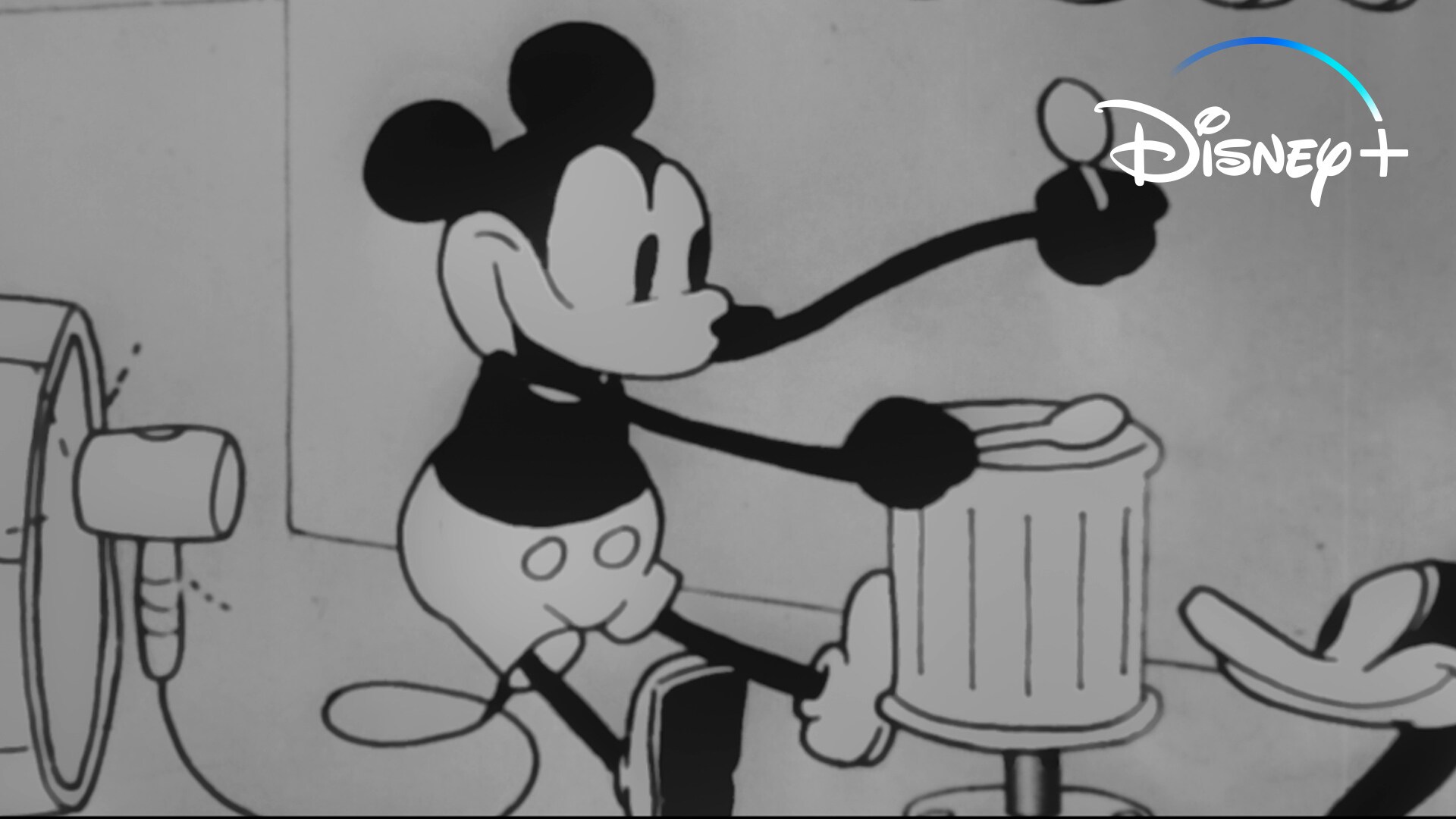
A Place of Wonder | Disney100 | Disney+
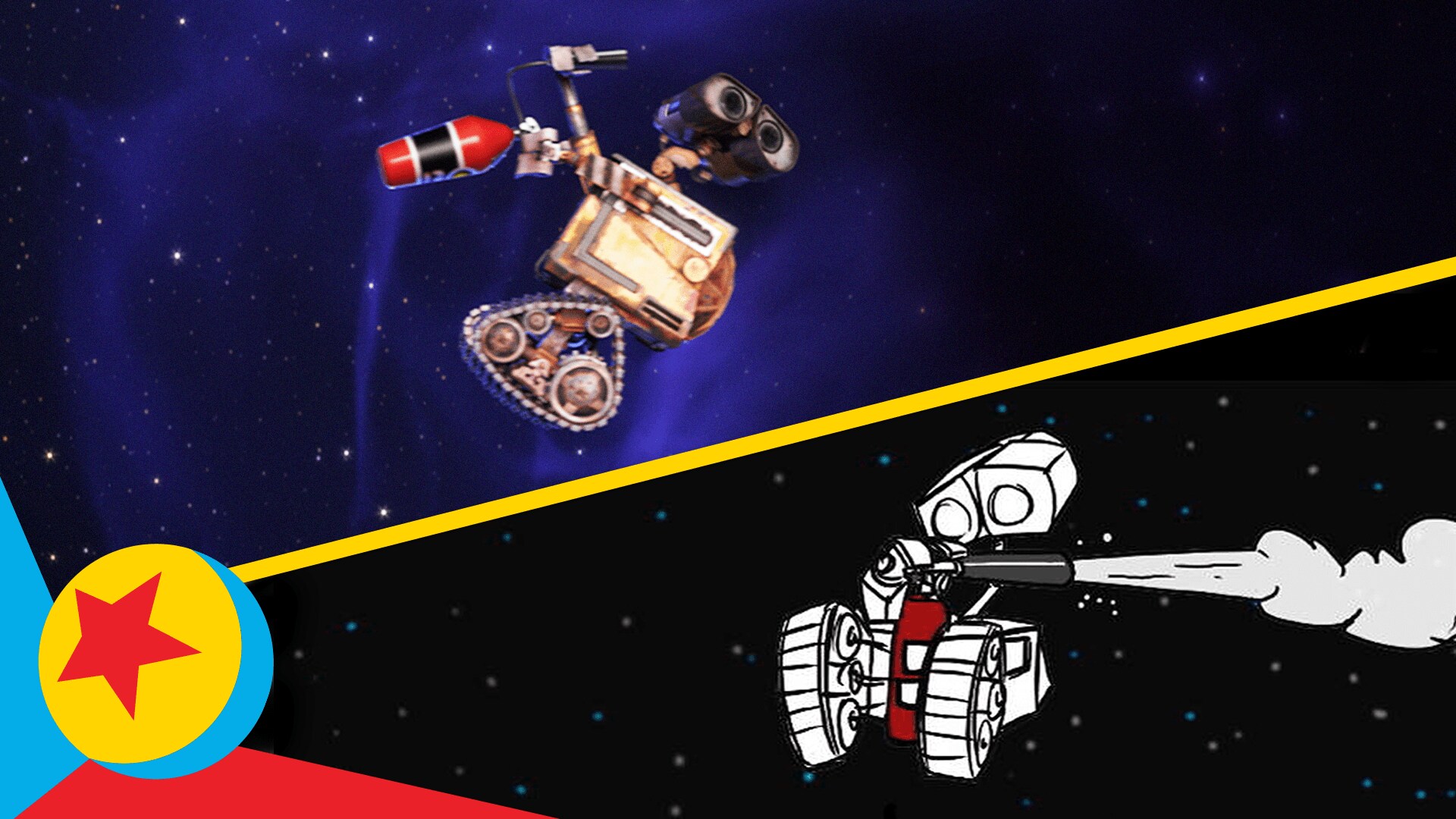
WALL·E and EVE Soar Through Space | Pixar Side by Side

Disney+ Date Night, The Book of Boba Fett, The World According to Jeff Goldblum | What's Up, Disney+

Disney+ At Work | Disney+
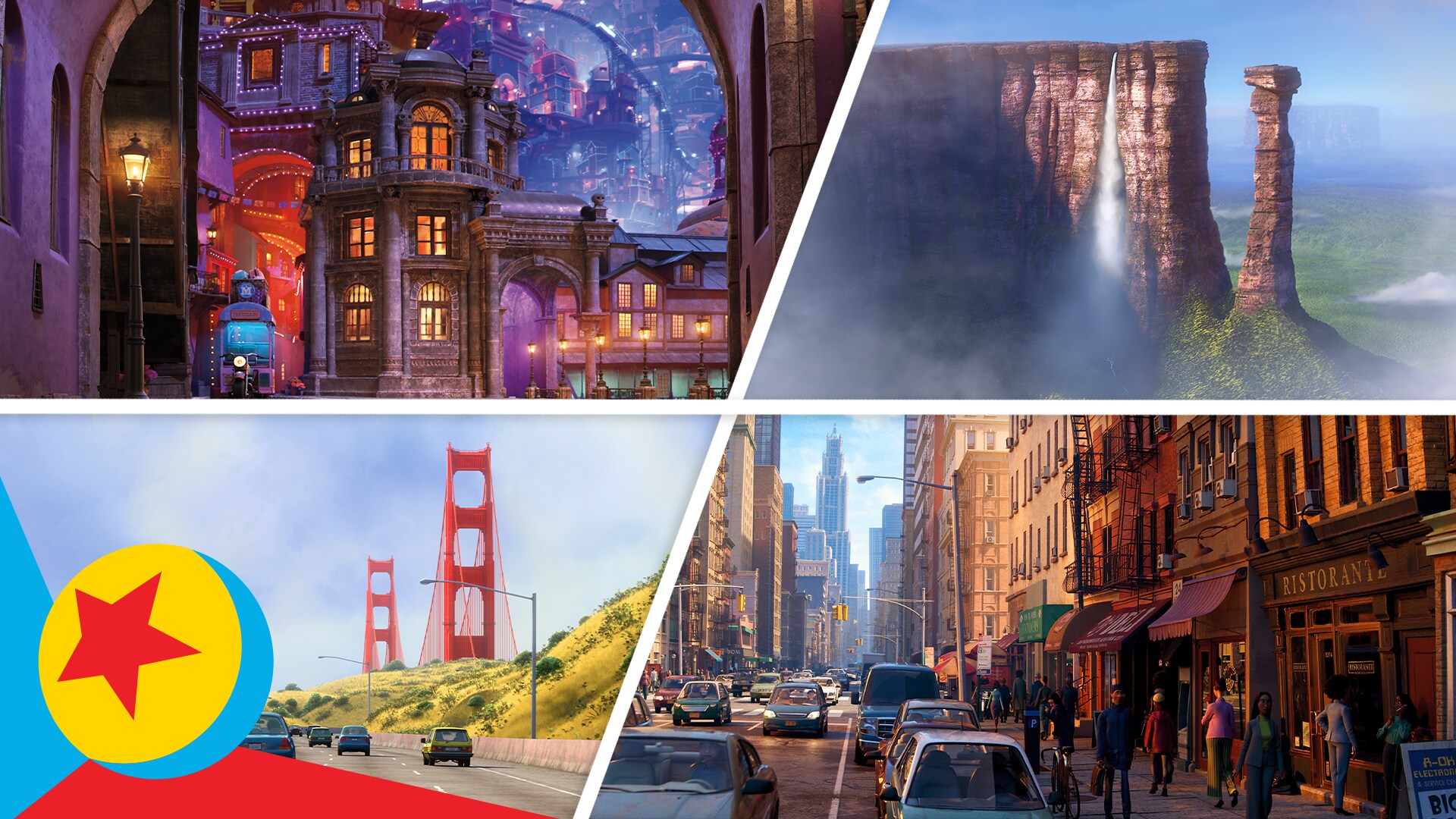
Around the Worlds of Pixar | Pixar
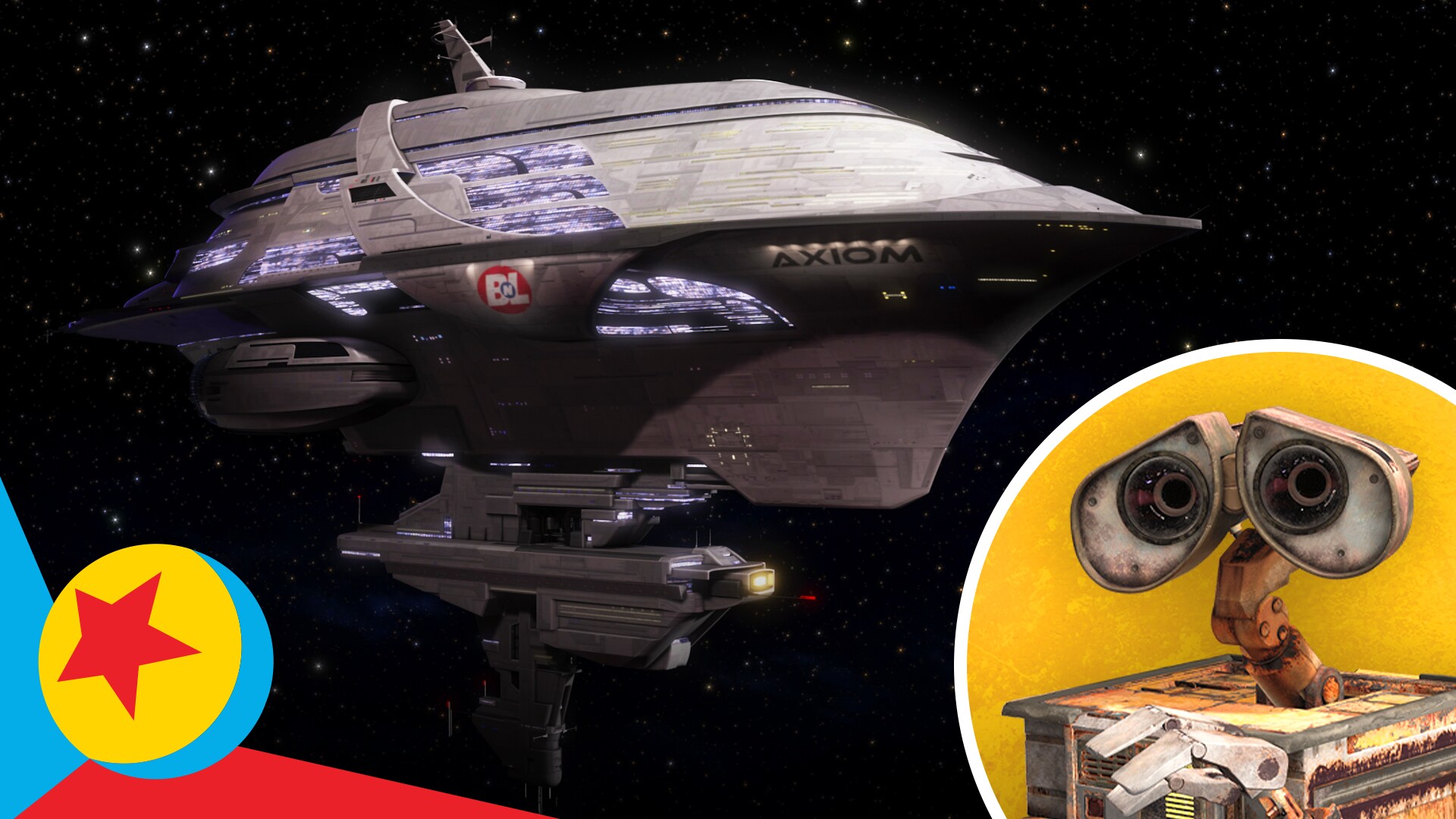
Go On a Tour of the Axiom from WALL•E! | Pixar
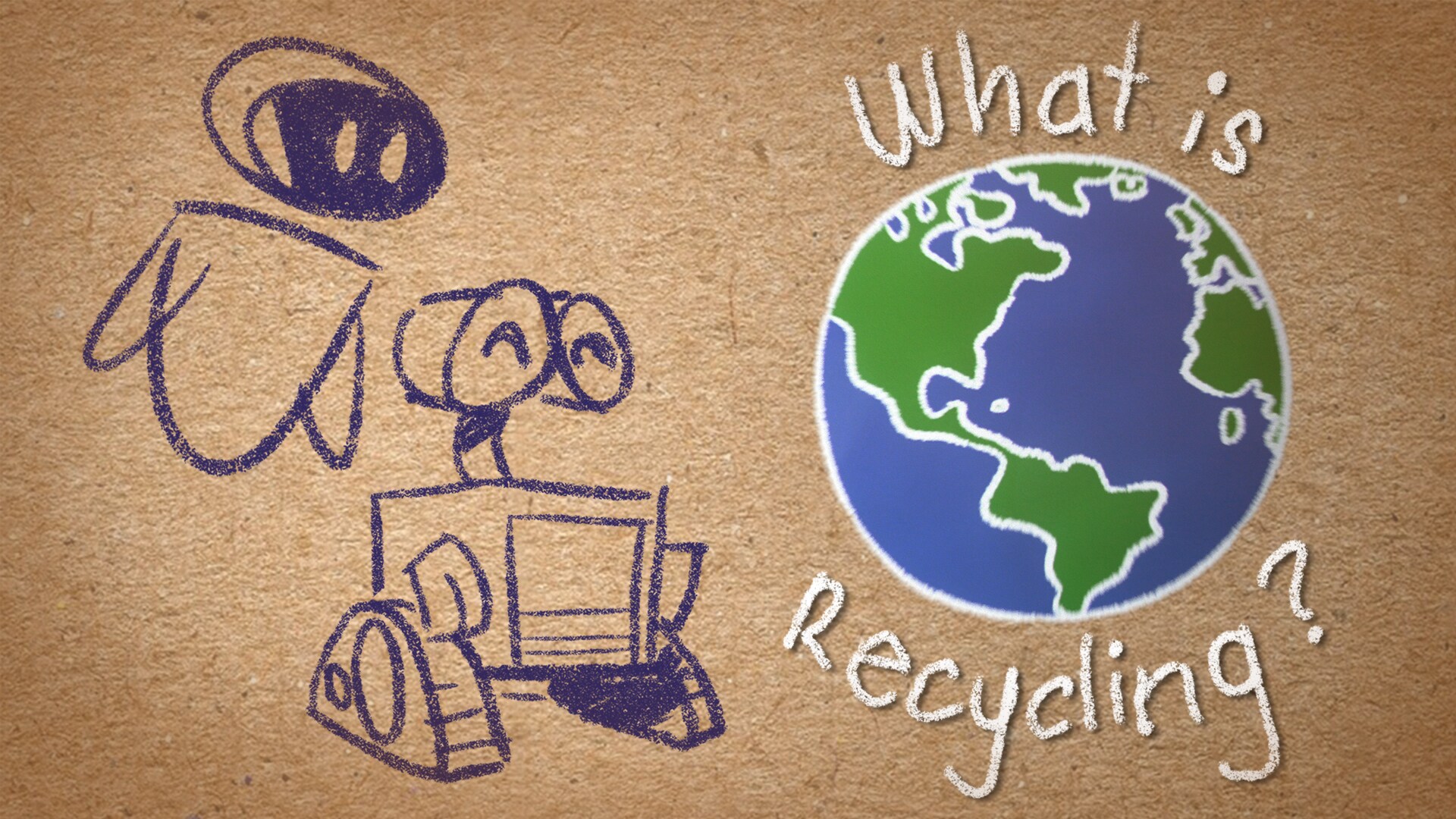
How to Recycle with WALL-E and Eve | Disney Family

Celebrate Valentine's Day With Some of the Most Romantic Disney Moments | Oh My Disney

Valentine's Day with Your Favorite Pixar Couples | Pixar

Pixar Couples | Pixar By the Numbers
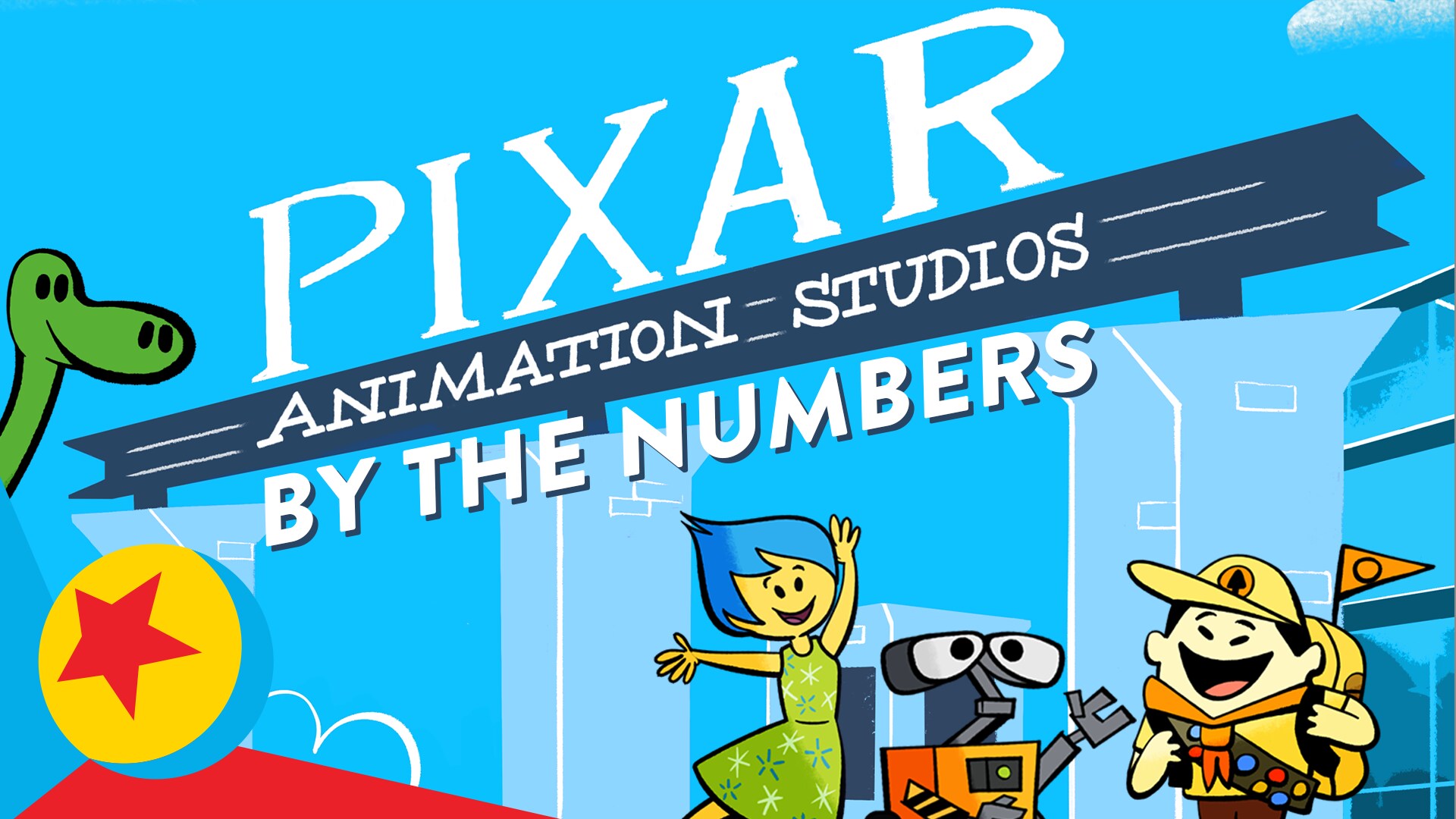
Count Down Some Fun Facts About the Pixar Campus | Pixar By The Numbers
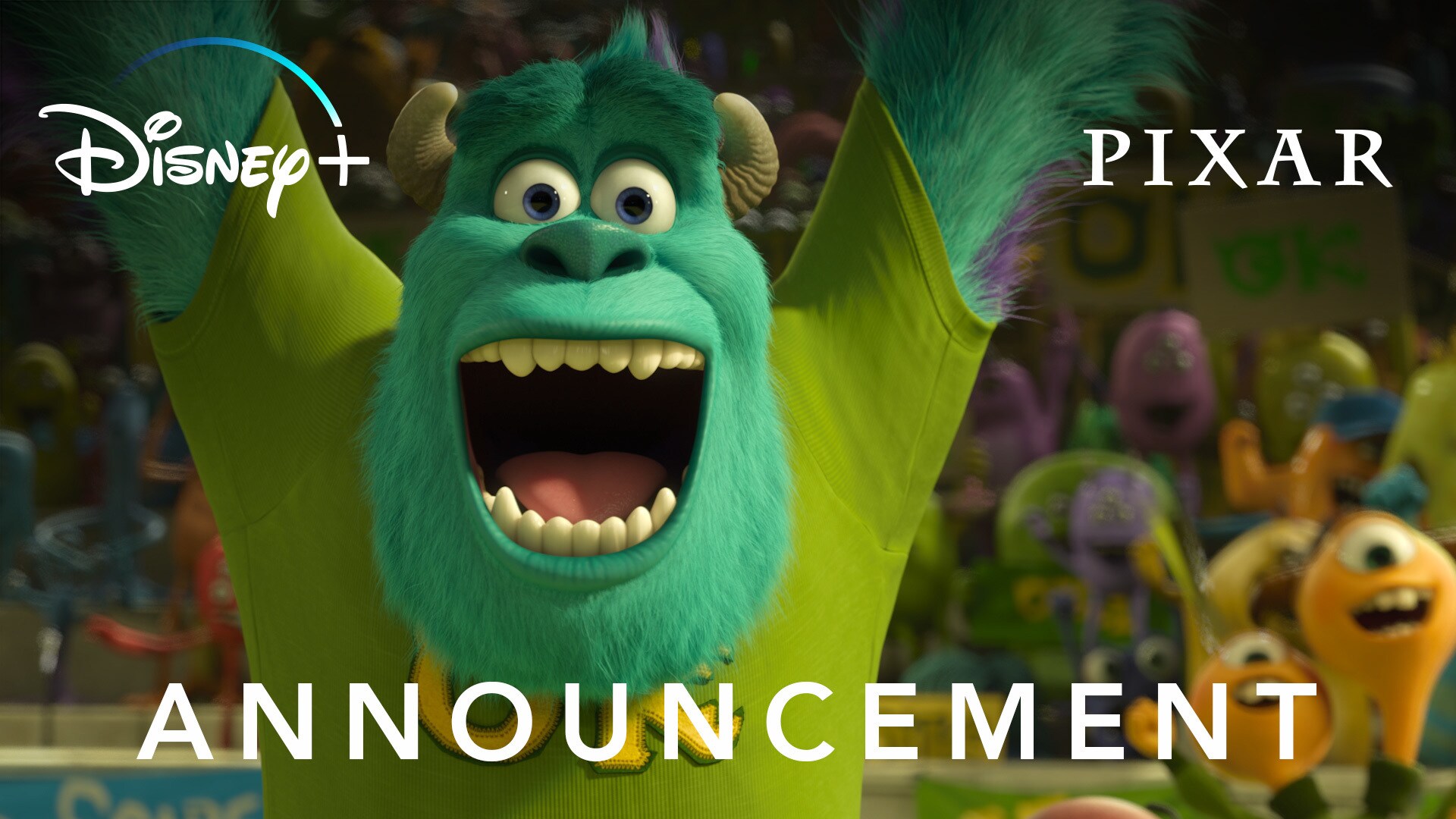
All Your Old & New Pixar Favorites, Coming To Disney+ | Streaming Now
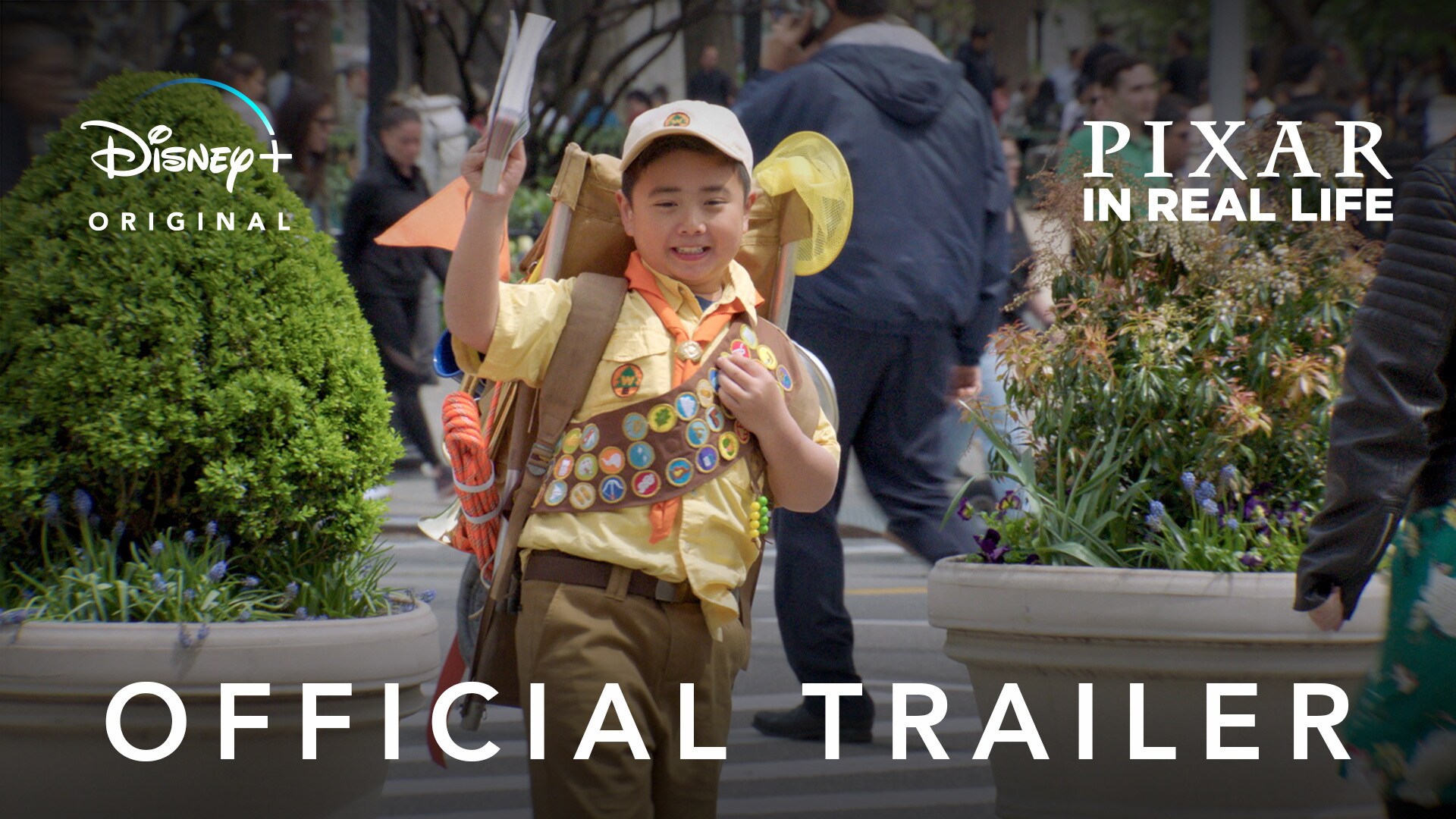
Pixar IRL – Official Trailer | Disney+ | Streaming Now

Basically Everything Coming to Disney+ in the U.S. | Start Streaming November 12
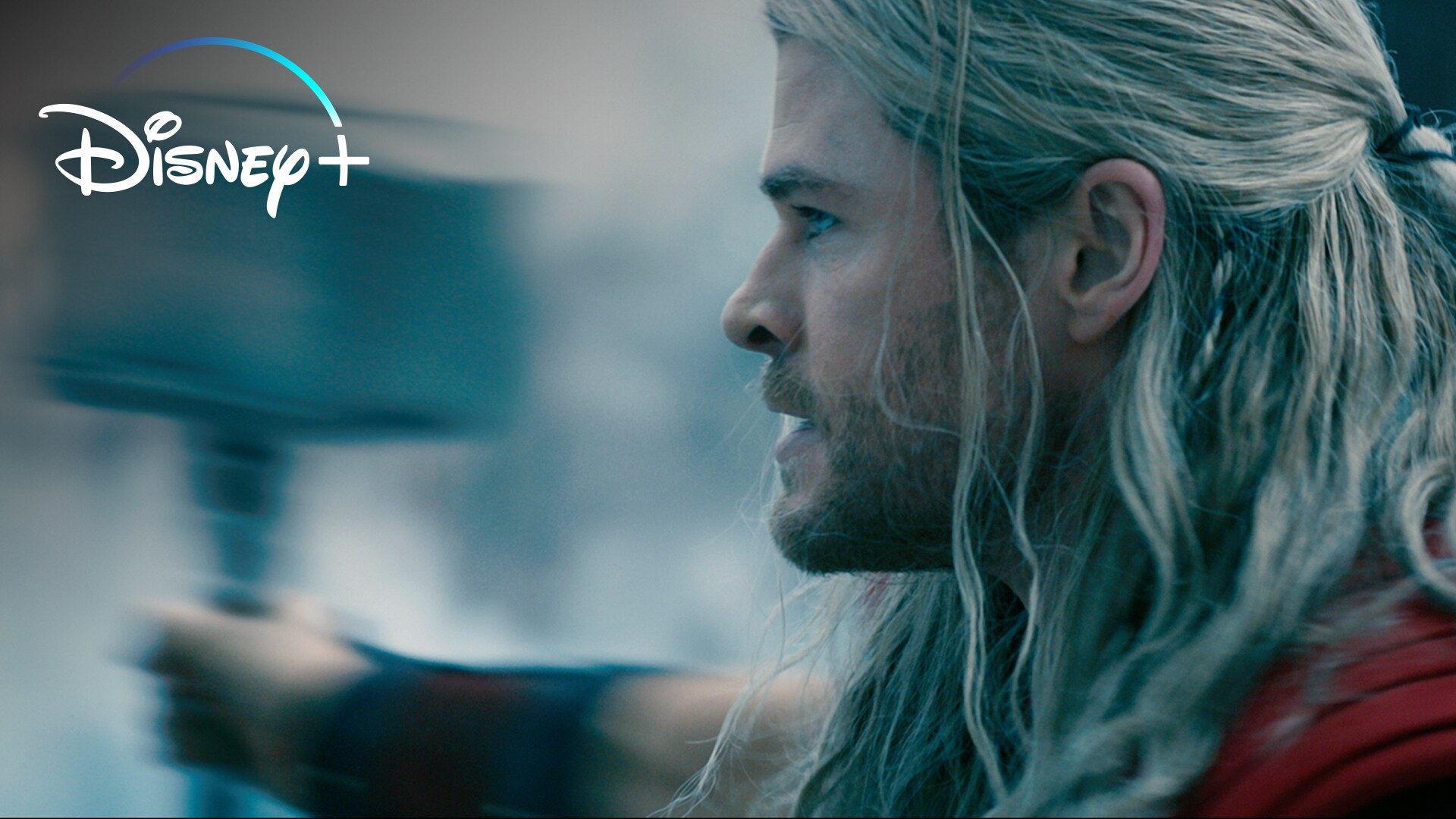
Disney+ | “We’re All Connected” Teaser | Start Streaming November 12

DIY WALL•E Succulent Garden | DIY by Disney Style
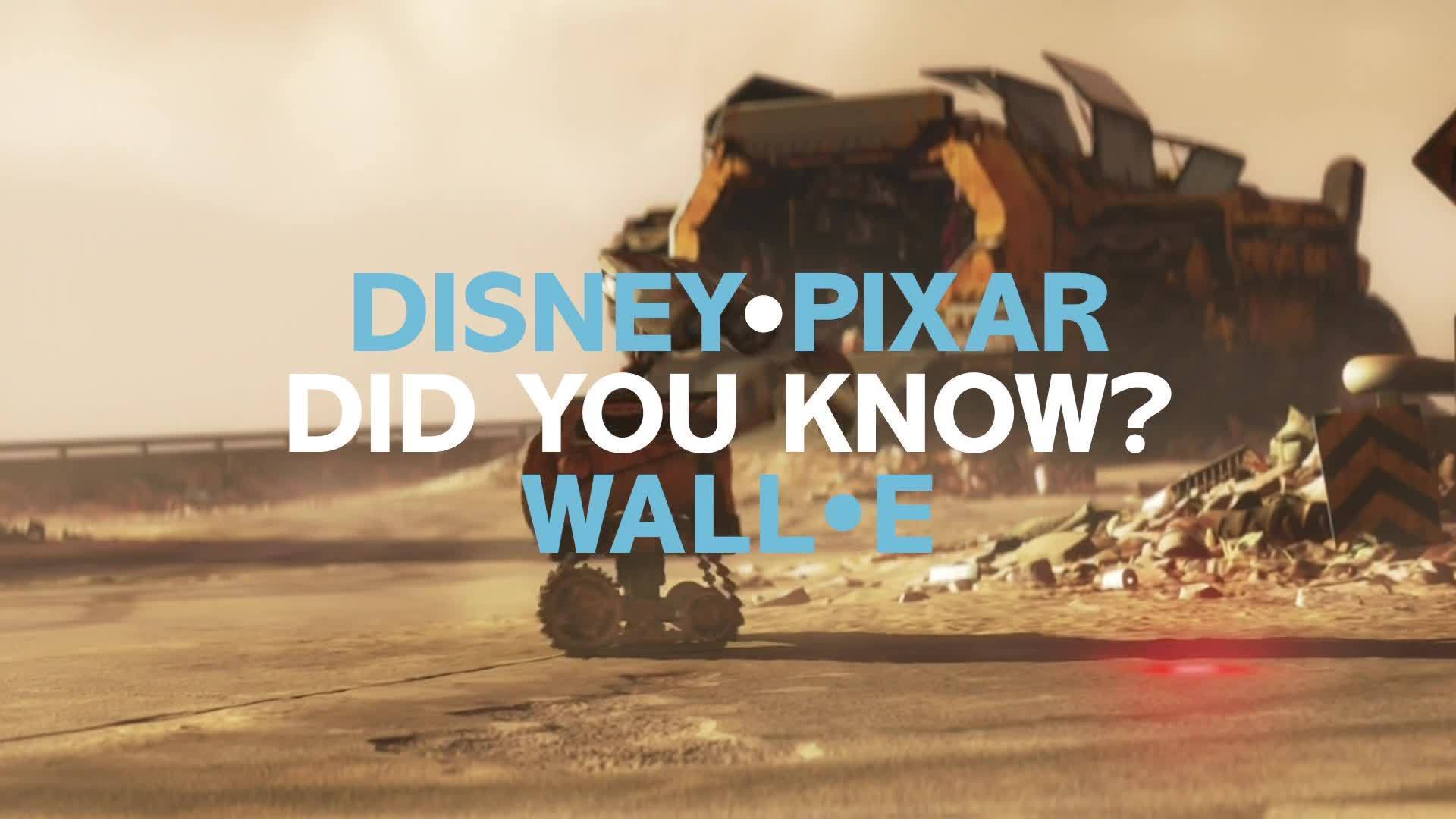
WALL•E Easter Eggs & Fun Facts | Pixar Did You Know? by Disney•Pixar

WALL•E | Script to Screen | Disney•Pixar

WALL•E Galaxy Cake | Disney Eats

Pixar Did You Know? | Scrapped Film Ideas

Pixar Did You Know? | Companies in Disney• Pixar Movies

“Every Pixar World” Spot - Disney•Pixar’s Coco

Healthier Ever After / UK Sizzle
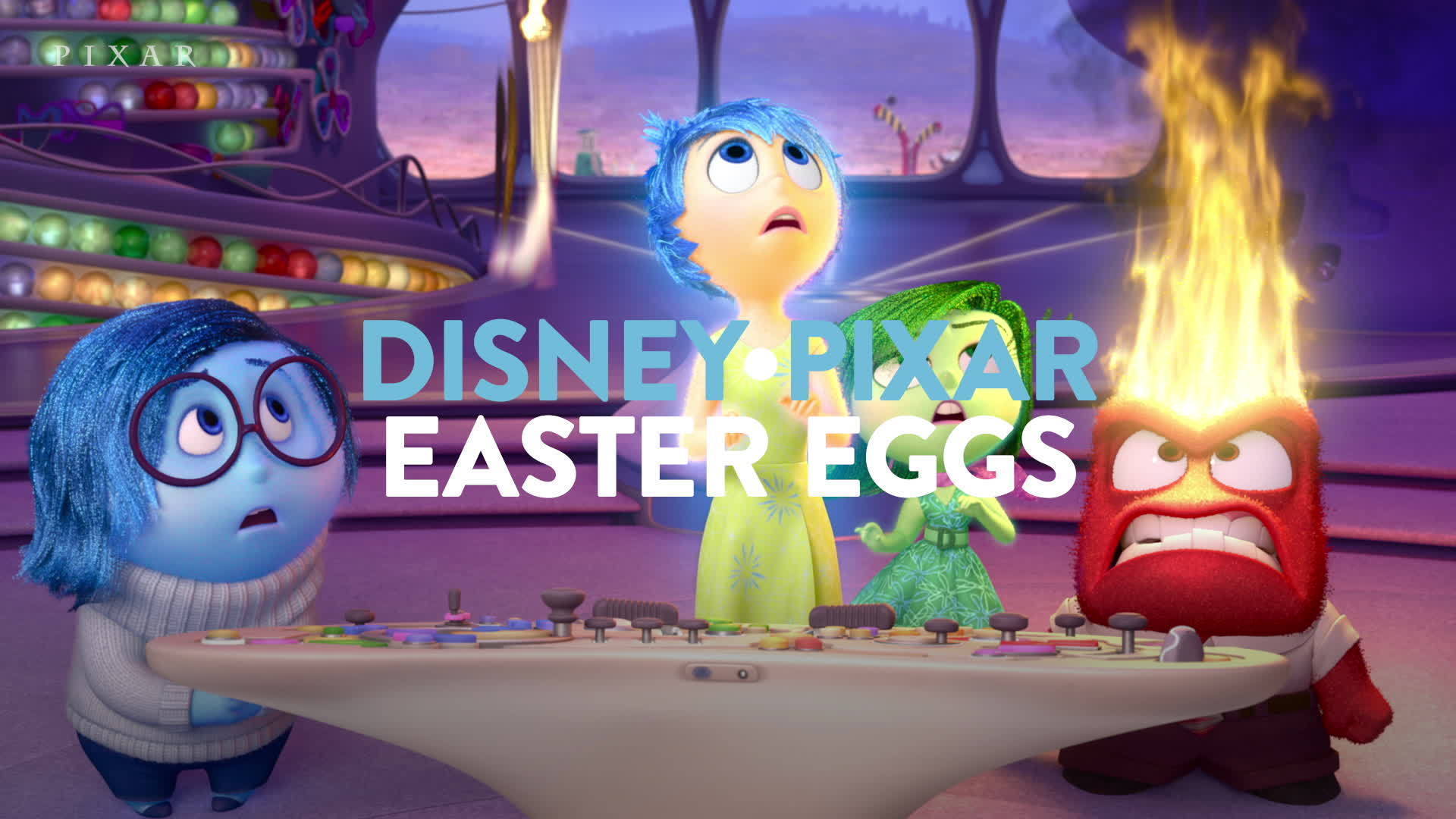
Our Favorite Pixar Hidden Easter Eggs & Secrets Part 1 | Pixar
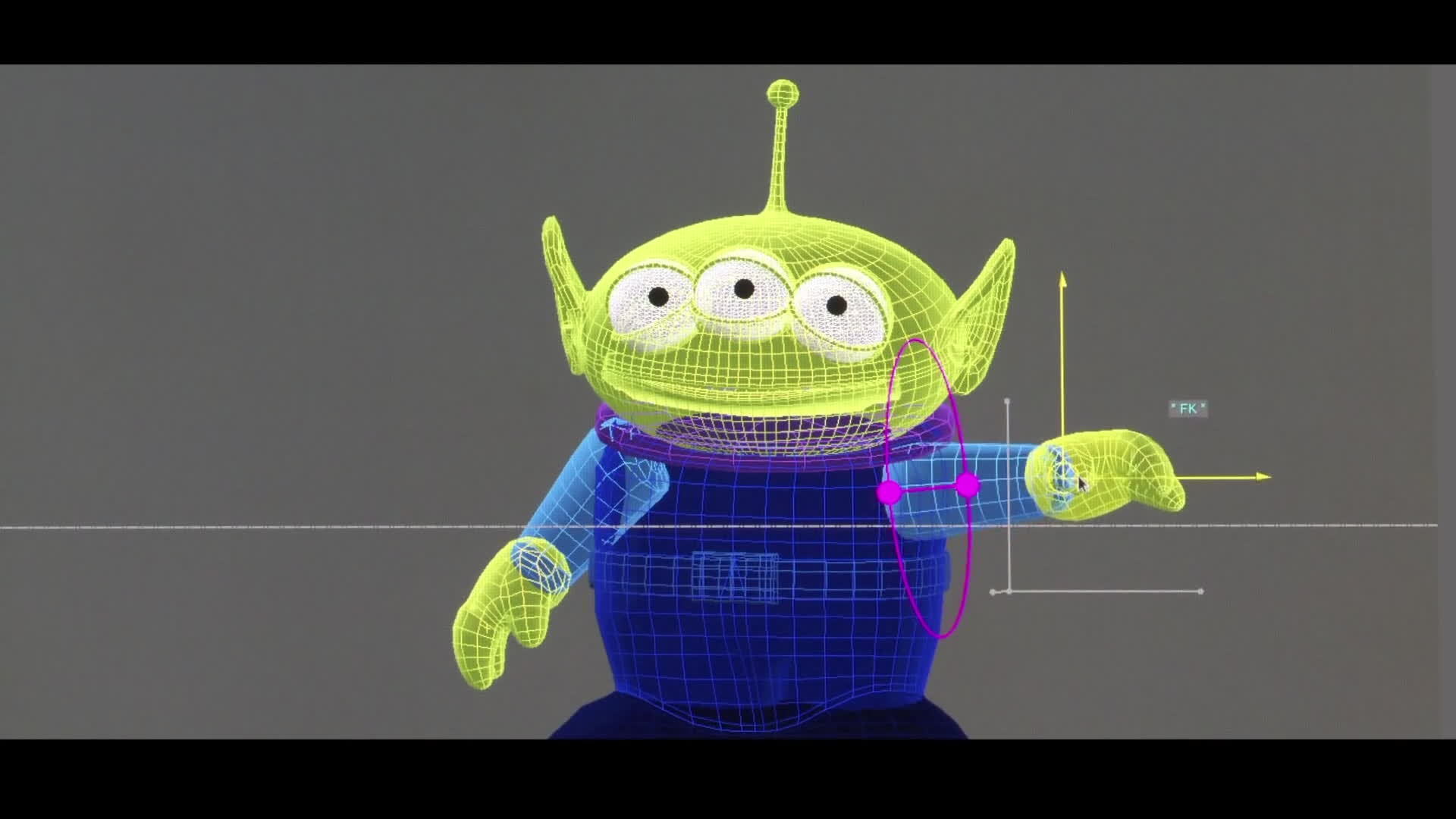
Pixar in a Box
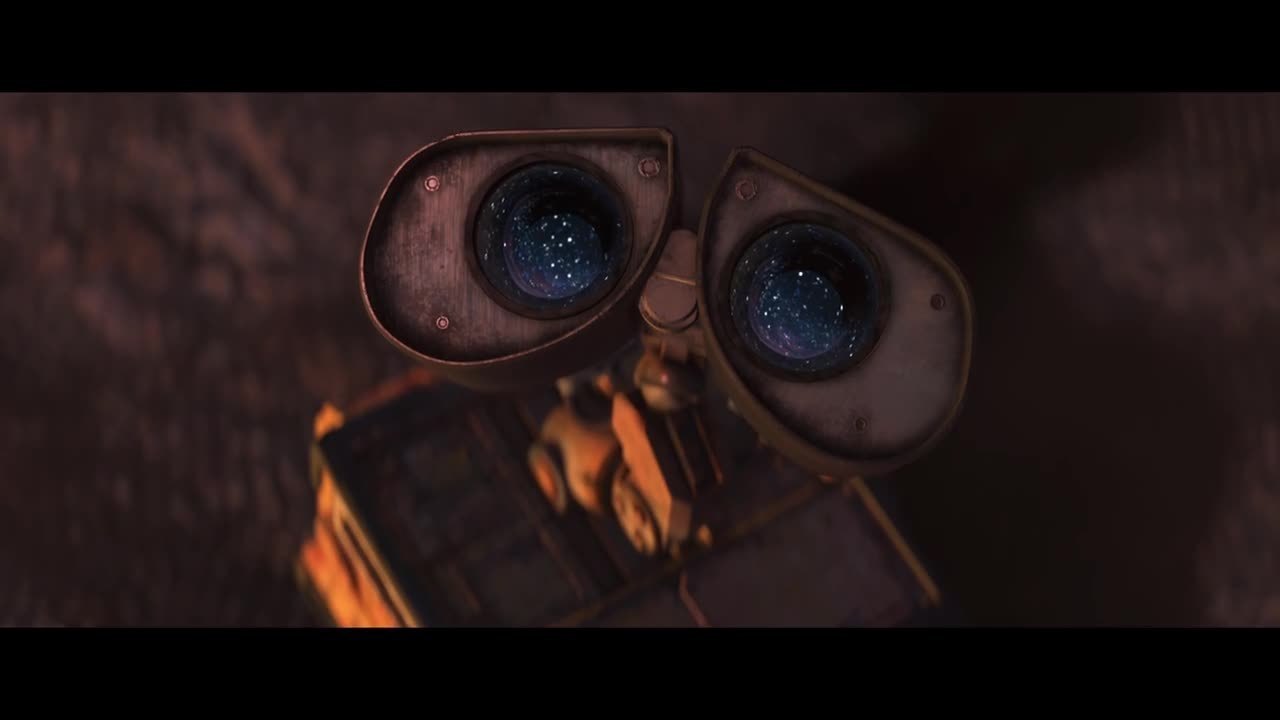
WALL•E Trailer
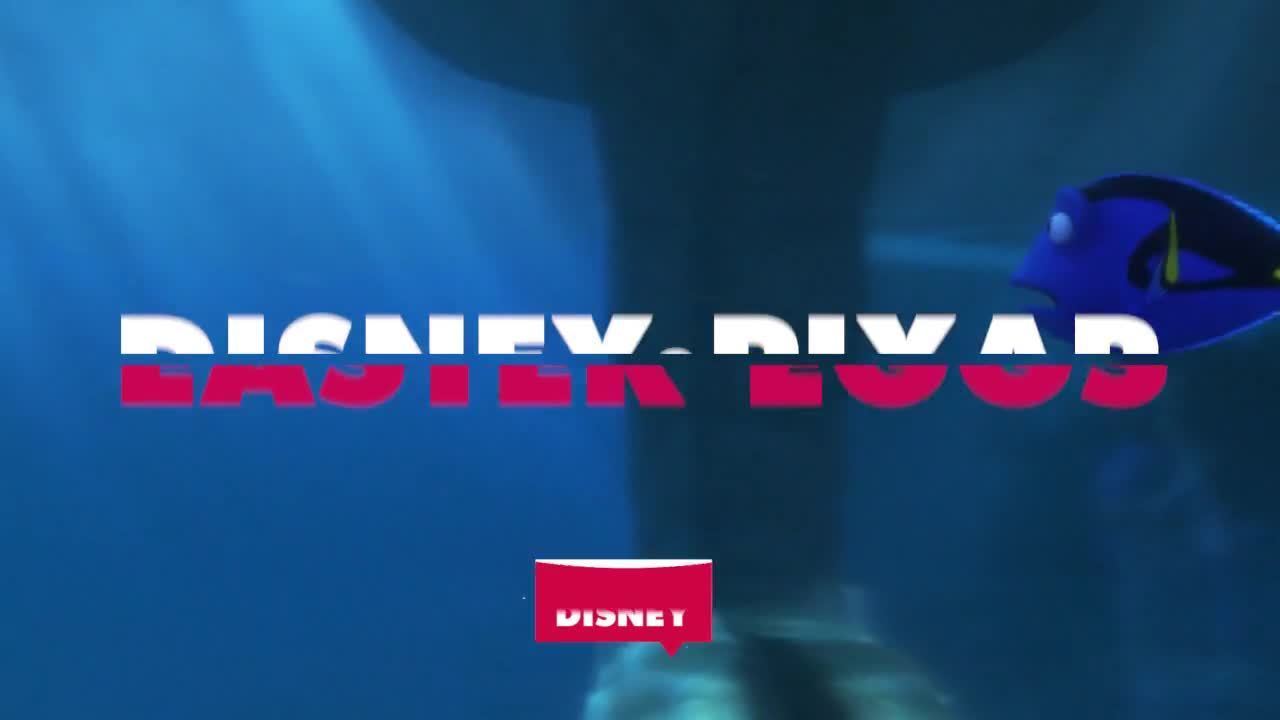
More of the Best Pixar Easter Eggs - Oh My Disney

Disney Ways to Tell If You're the Organized Friend | Oh My Disney
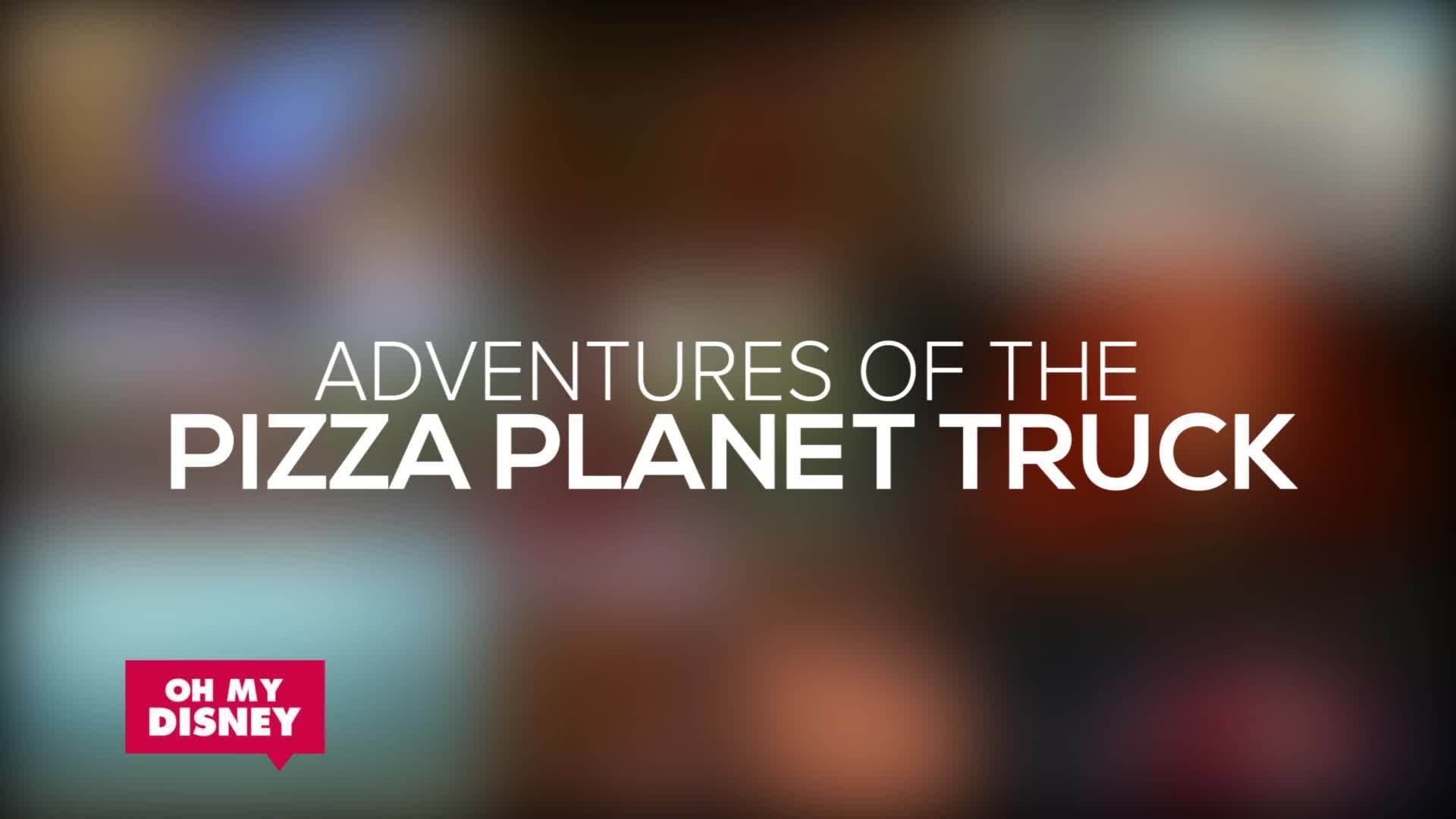
Adventures of Pizza Planet

5 Ways You're Using Kitchen Utensils Wrong | ListVids by Oh My Disney
The characters.
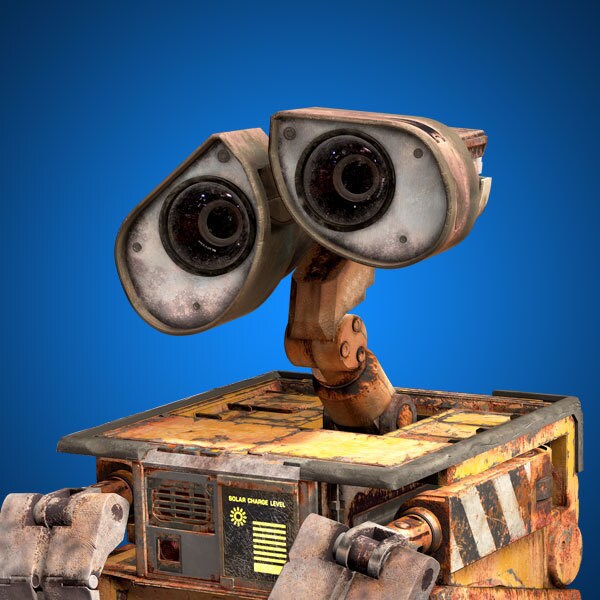
WALL·E (Waste Allocation Load Lifter Earth-Class) is programmed to clean up the planet, one trash cube at a time. However, after 700 years he's developed one little glitch, a personality. He is extremely curious, high inquisitive and a little lonely.
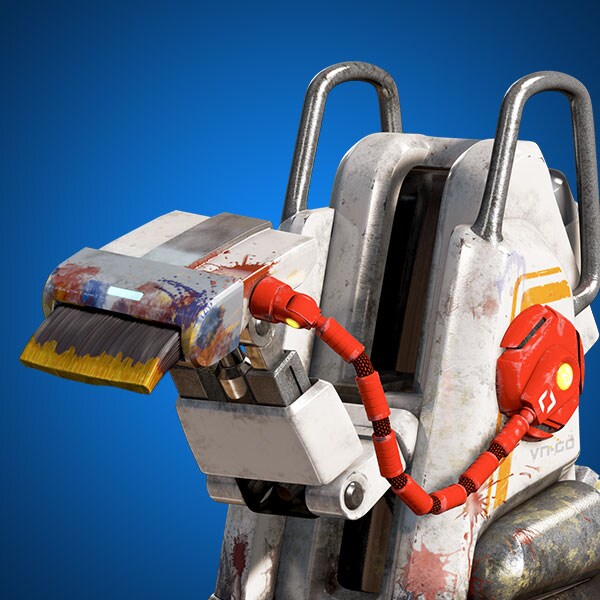
A painting bot complete with a multi-color fibrous pigment distribution system for all of the Axiom’s painting needs.
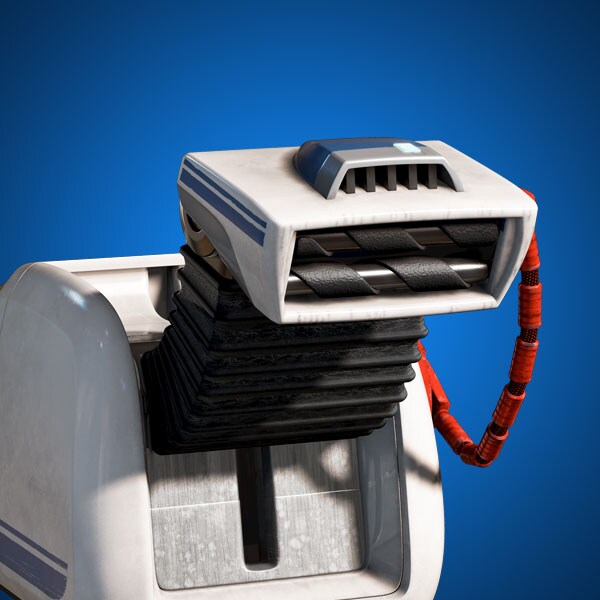
An accordion-necked vacuum-bot aboard the axiom. Programmed to clean and scrub, but prone to sneezing fits.
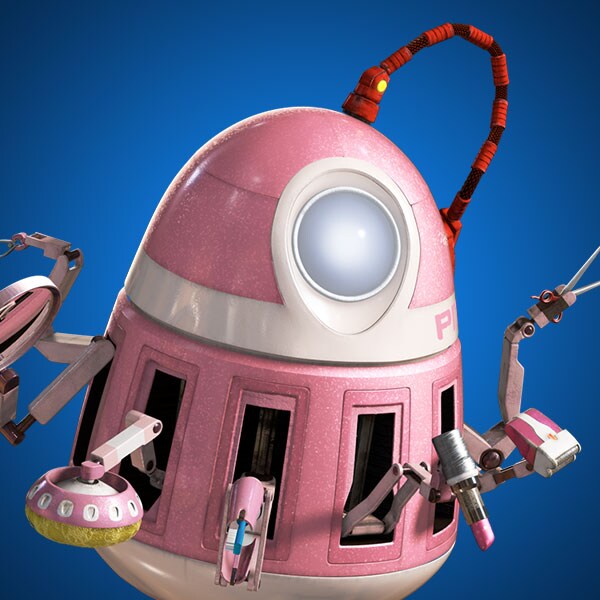
A robotic hairdresser aboard the Axiom, programmed to make small-talk as she styles hair with her cutting edge styling technology.

Microbe Obliterator M-O is a cleaner-bot who loves to clean away all foreign contaminants that find their way onto the Axiom.
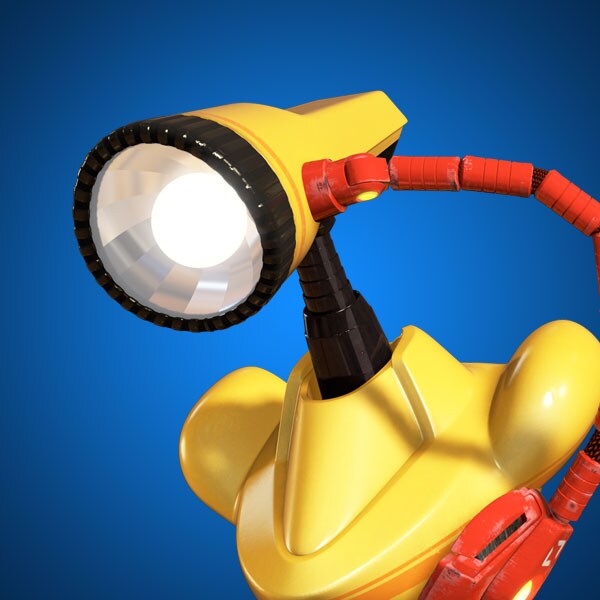
A light-bot aboard the Axiom. L-T requires a 120 watt dual-setting halogen bulb, and boasts an anti-gravity magnetic airframe.
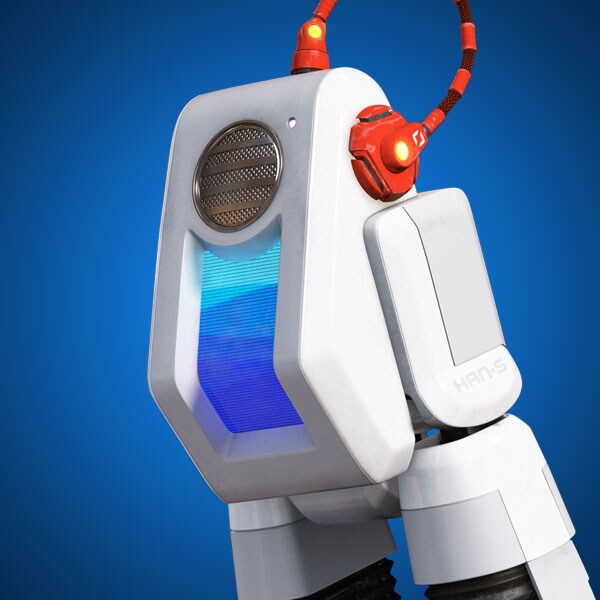
One of the Axiom’s many massage-bots, complete with soothing visual display and an even-tempered behavioral mod chip.
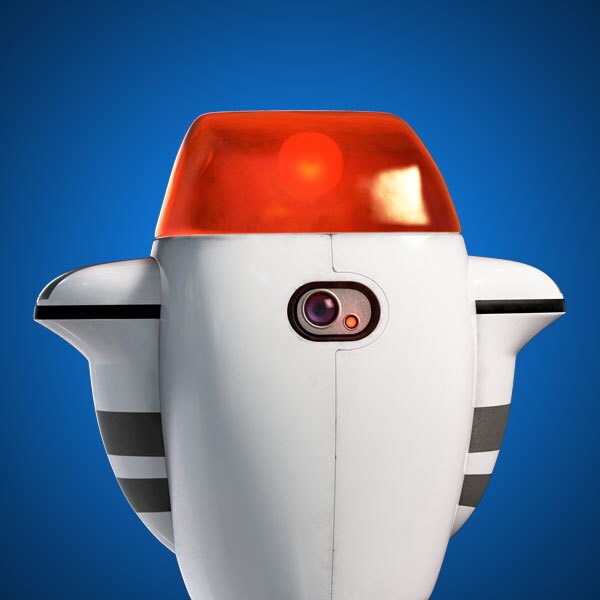
Small but easily identifiable with their red lights, GO-4 units are charged with overseeing security on the Axiom.

EVE (Extraterrestrial Vegetation Evaluator) is an advanced probe droid. Called "Probe One" by the Captain of the Axiom, EVE is one of several robots who are sent to Earth on a scanning mission.
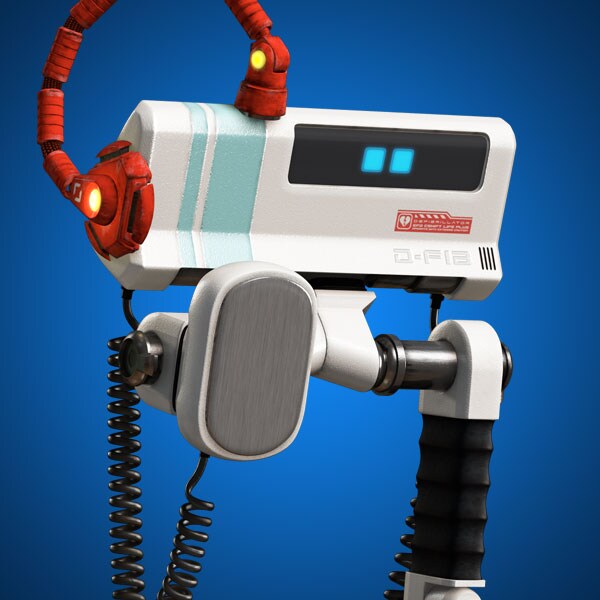
The Axiom’s defib-bot, sometimes prone to delivering a bit too much charge through their paddles. Often heard saying “clear!”

An extremely resistant and loyal cockroach who survives on dessert snack, Hal is WALL-E’s pet and best pal on Earth.
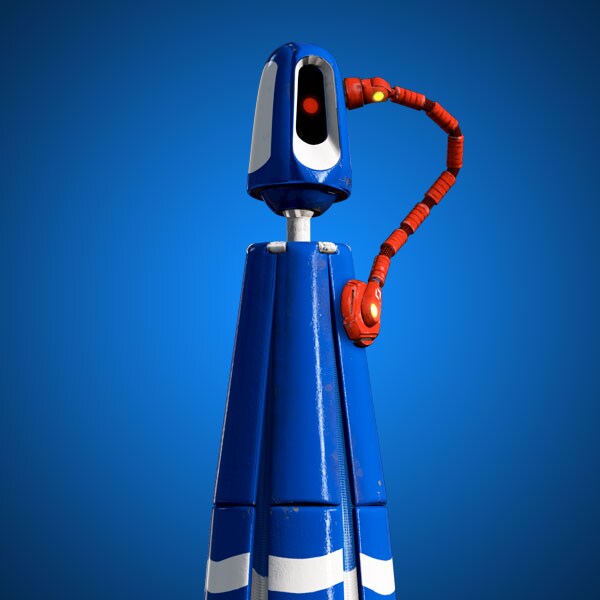
An umbrella-bot, used to provide shade while on the Axiom more often than to protect passengers from rain.
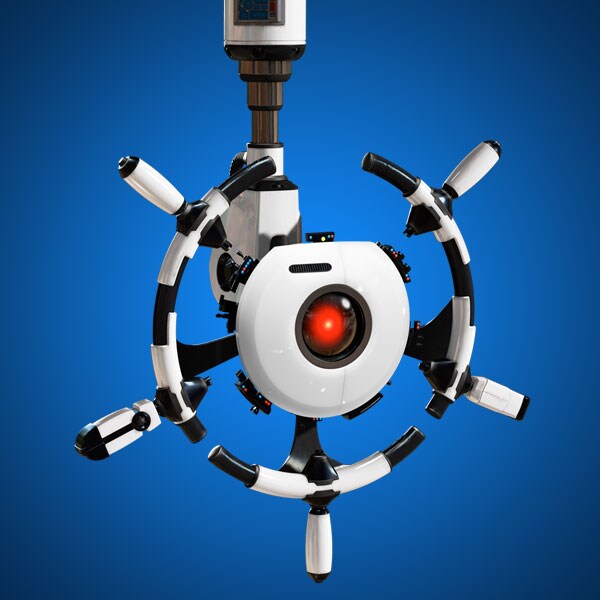
The Axiom’s autopilot for all of its 700 years in space, Auto is cold, mechanical, and a bit controlling of the Captain.
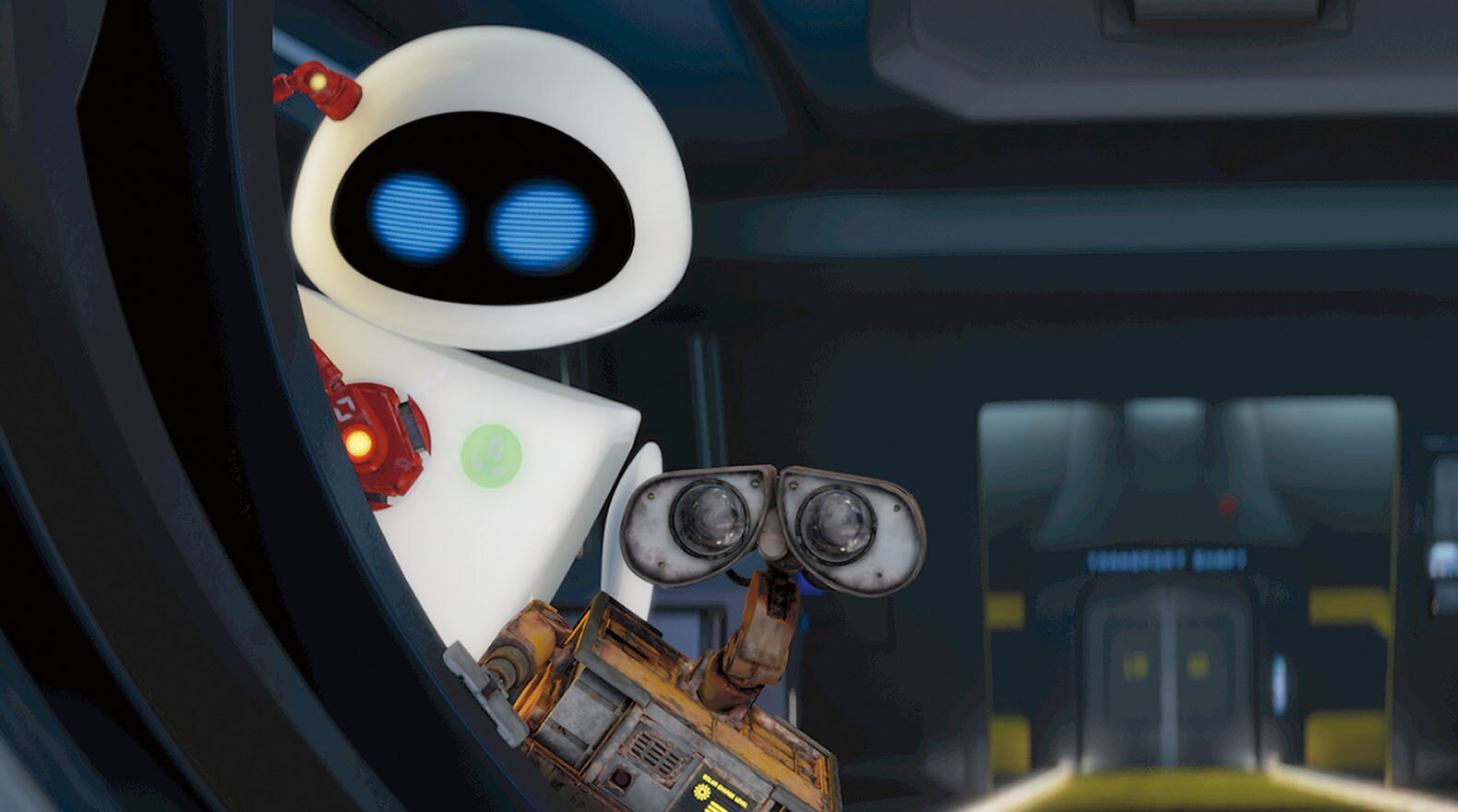
WALL•E and EVE: on a mission.

EVE is laser-focused on her job.

WALL•E is in a prime spot to catch some solar rays.
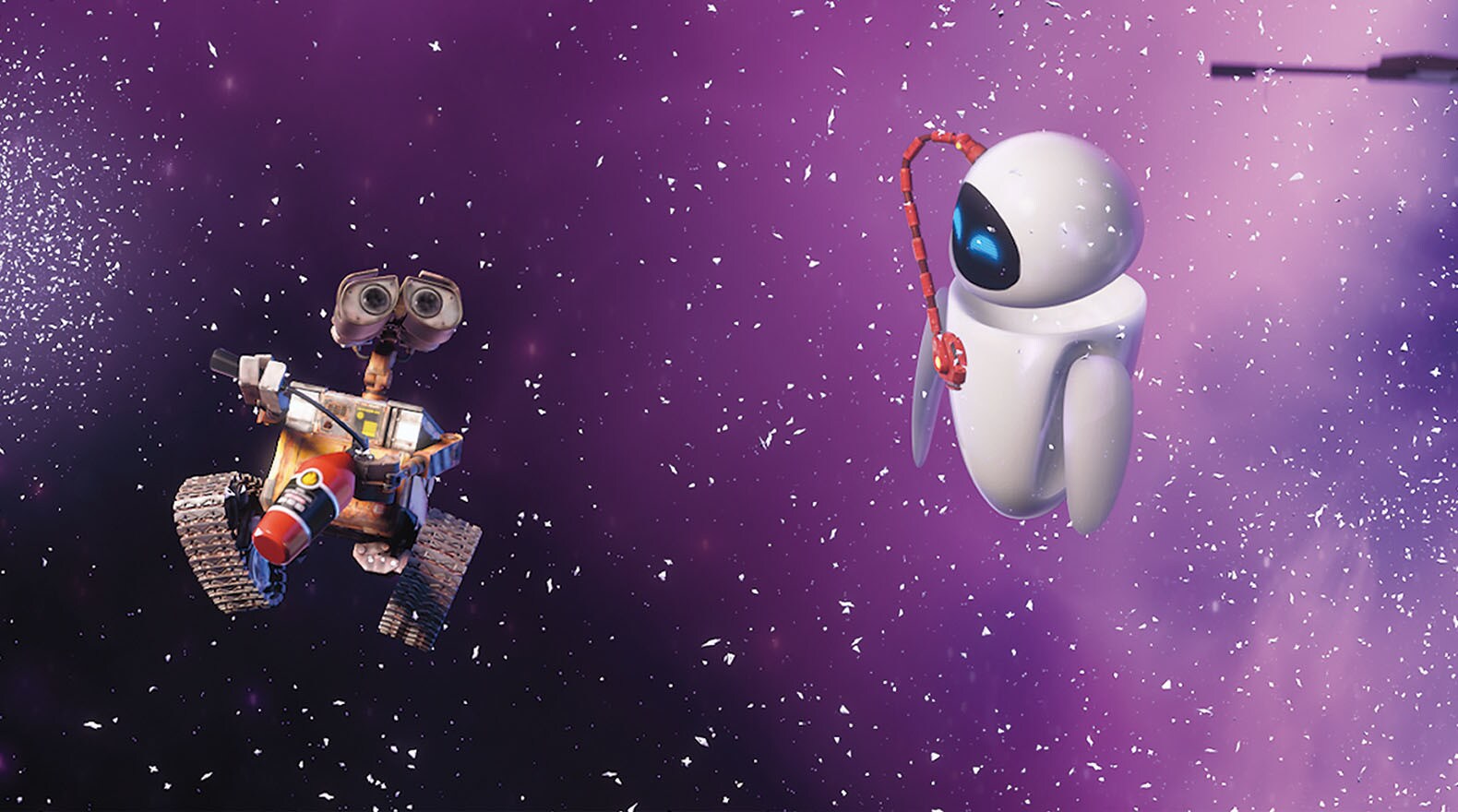
WALL•E figures out an ingenious way to navigate space.
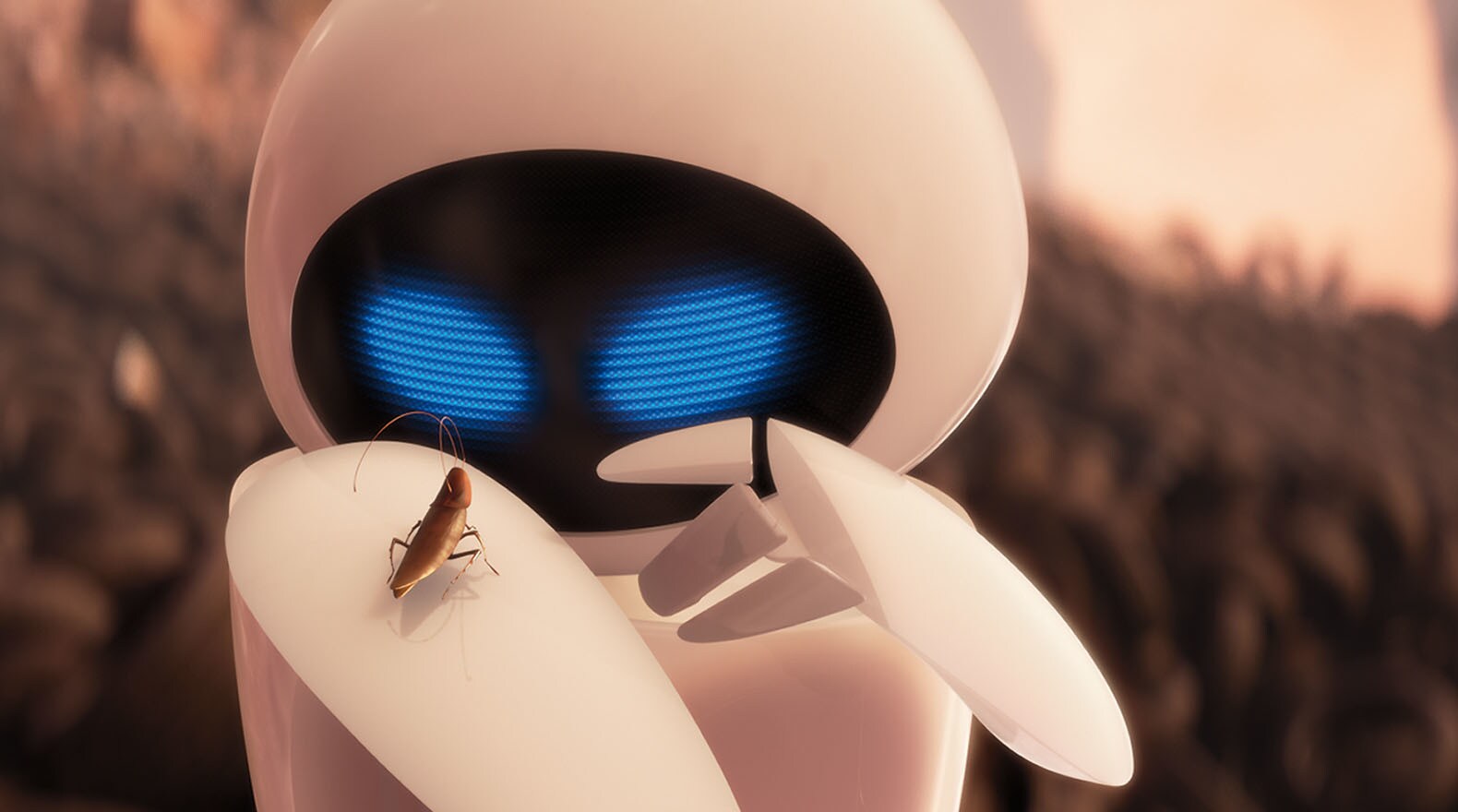
WALL•E can always trust Hal to stick by his side.
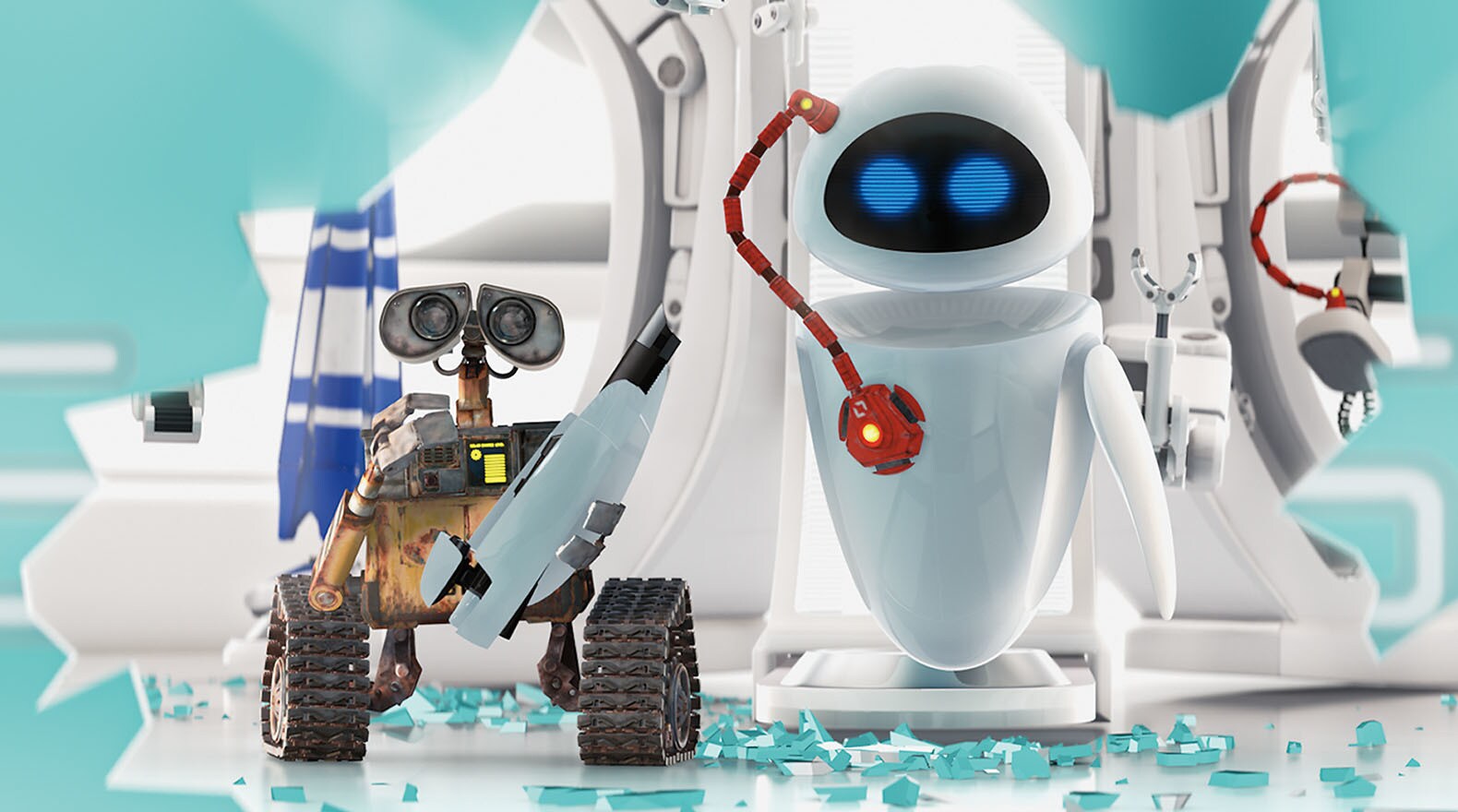
WALL•E and EVE make a great team, most of the time.
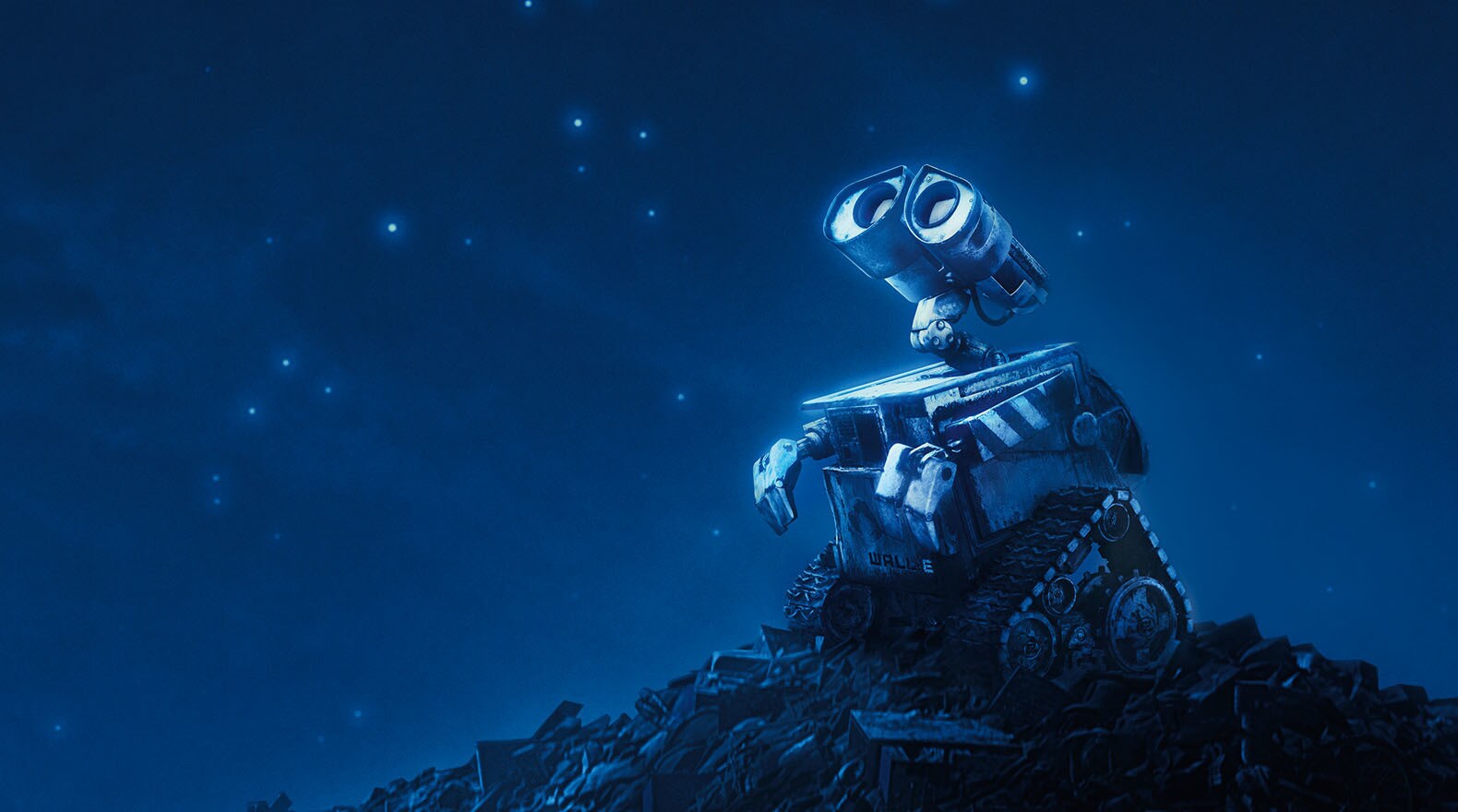
WALL•E is one of those robots who has a hard time keeping his head out of the clouds.
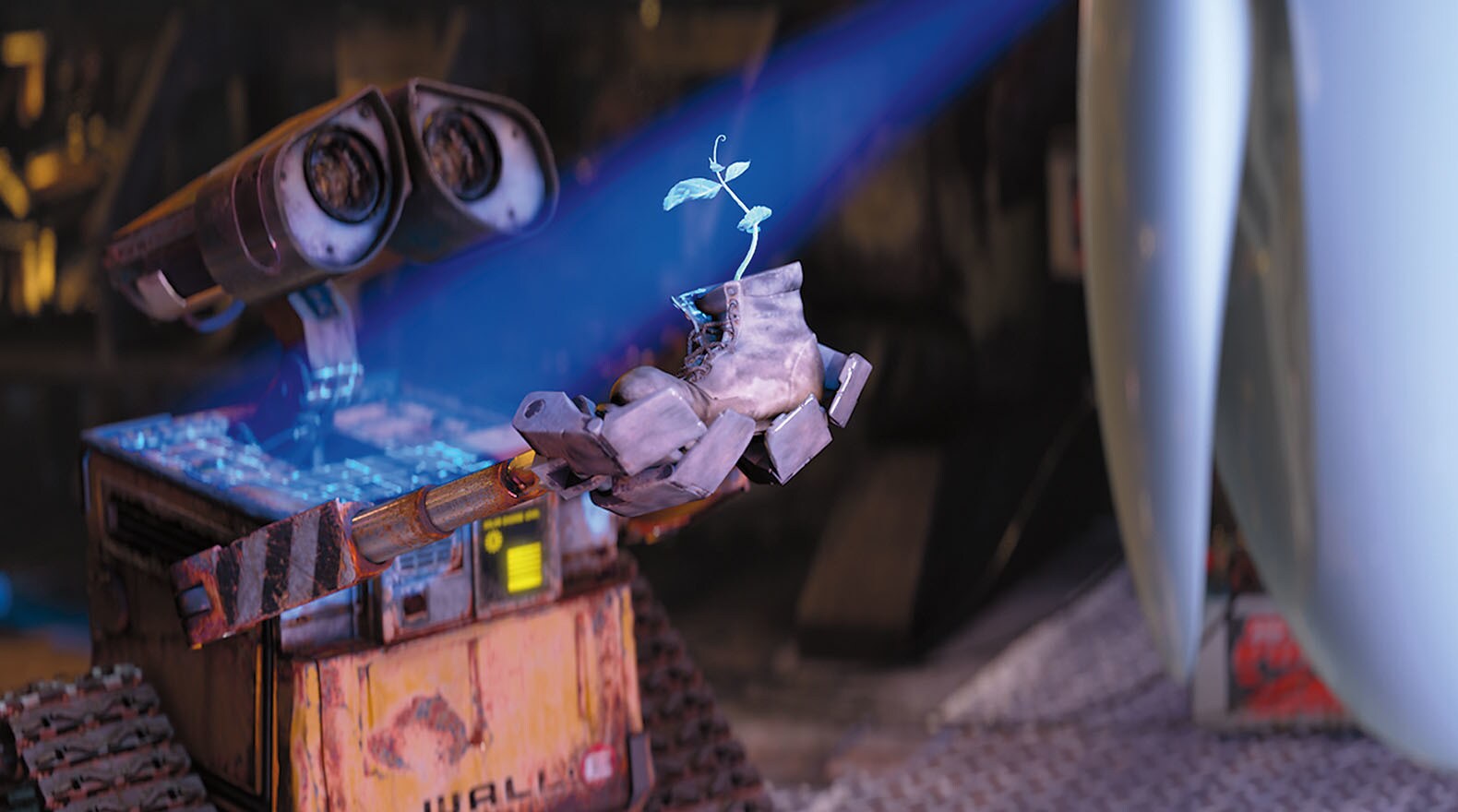
WALL•E stumbled upon something truly unique to give to EVE.
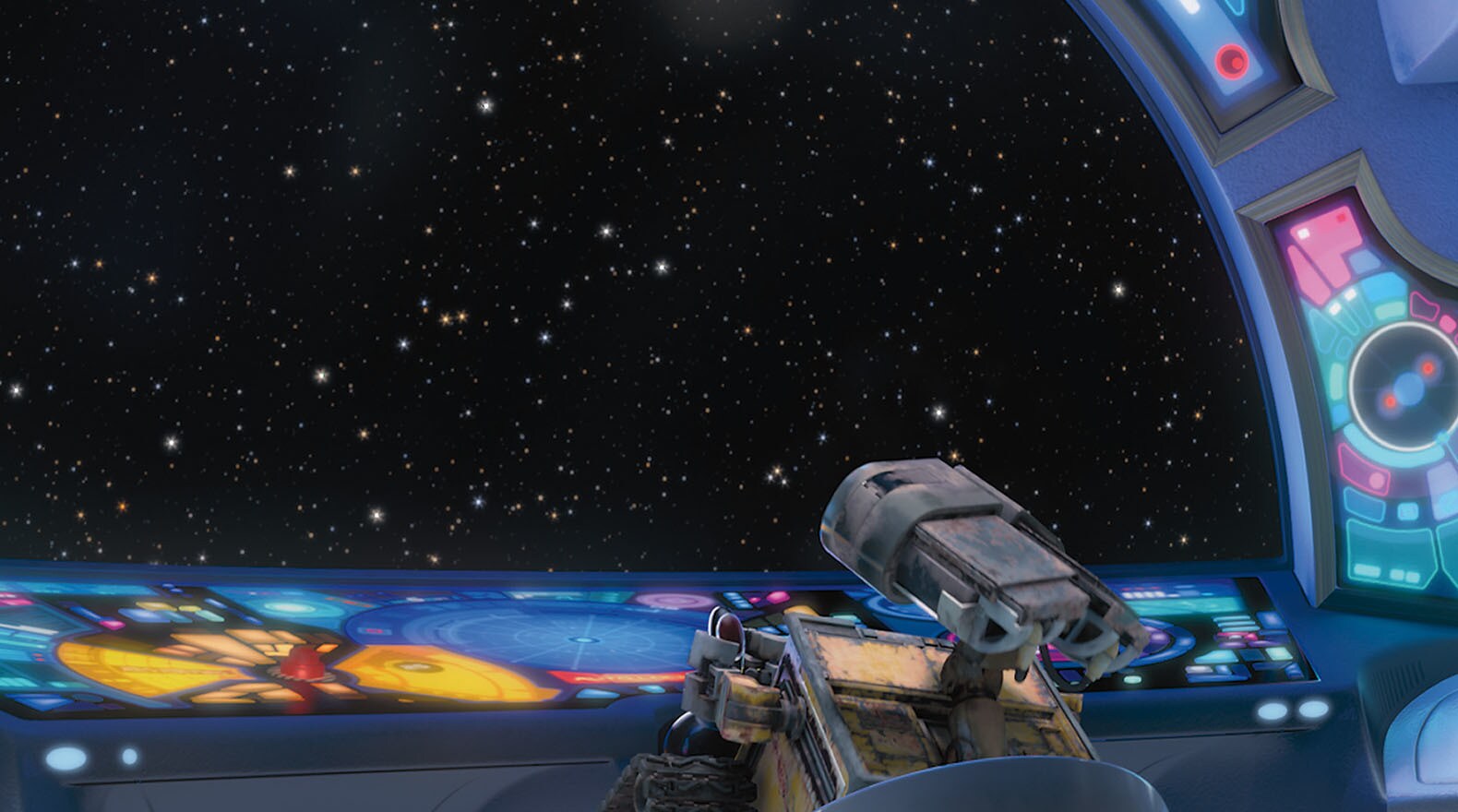
WALL•E likes the view from the great beyond.
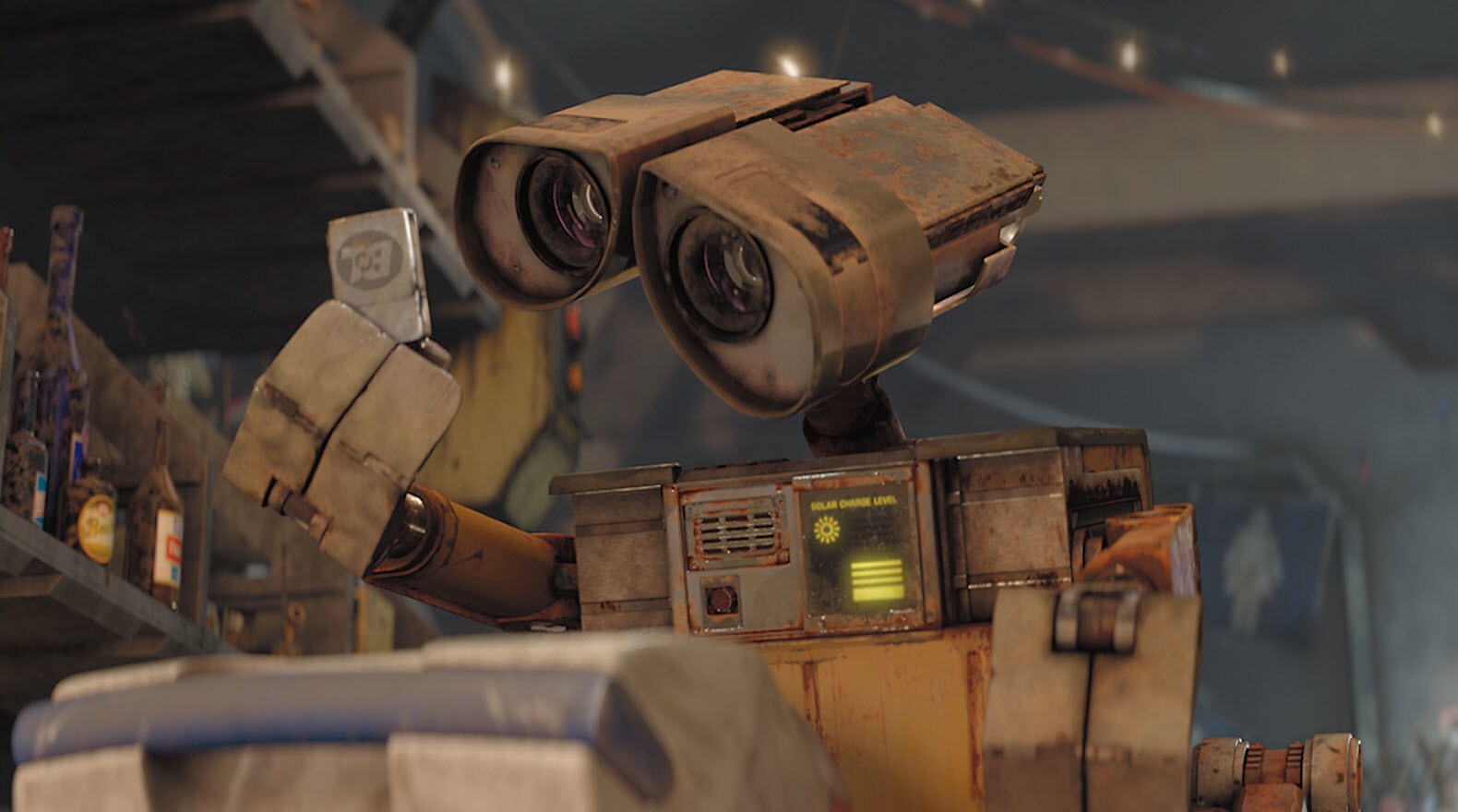
WALL•E tries to understand what the world was like long ago.
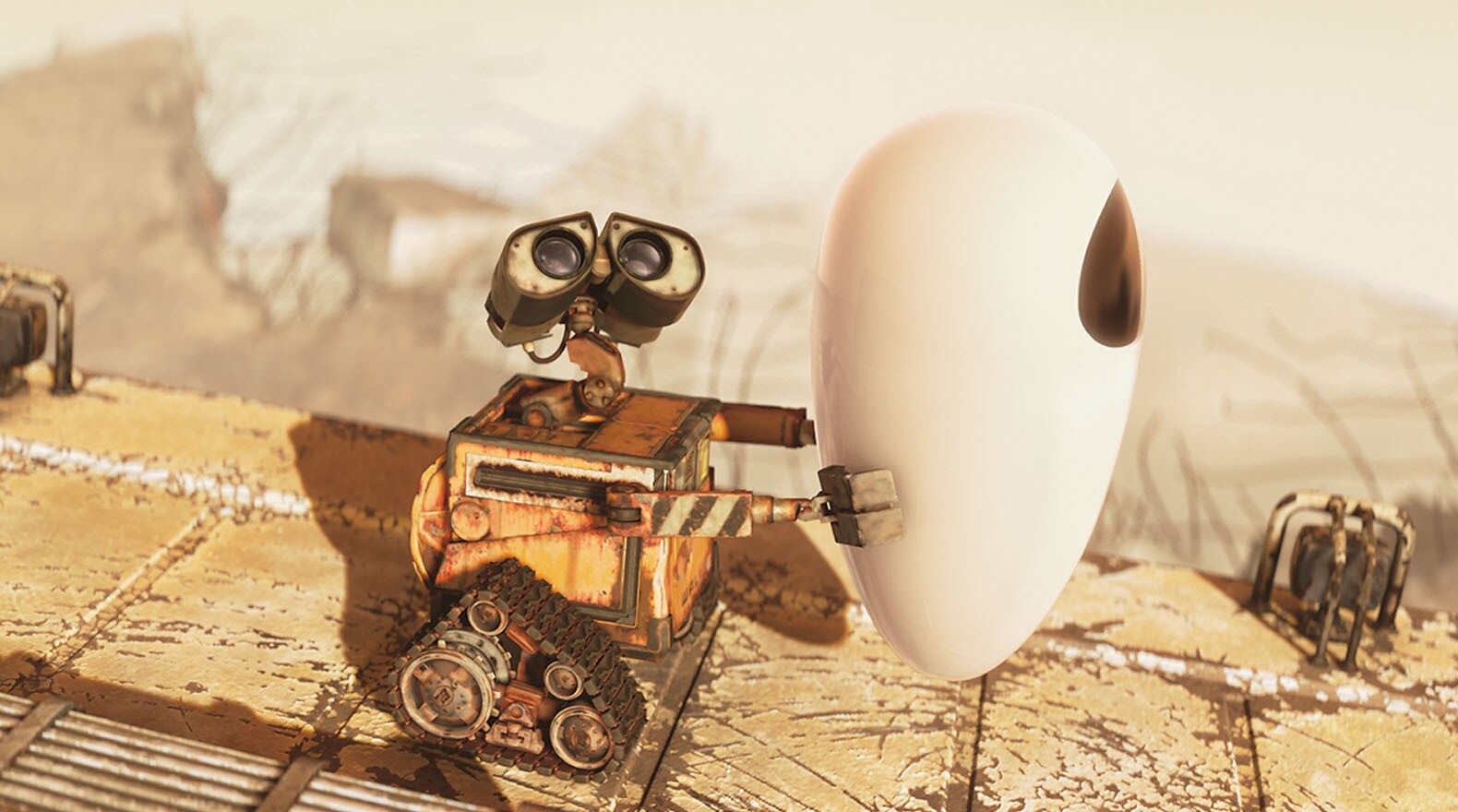
WALL•E holds on to the things he loves.

Robots: more romantic than anticipated.
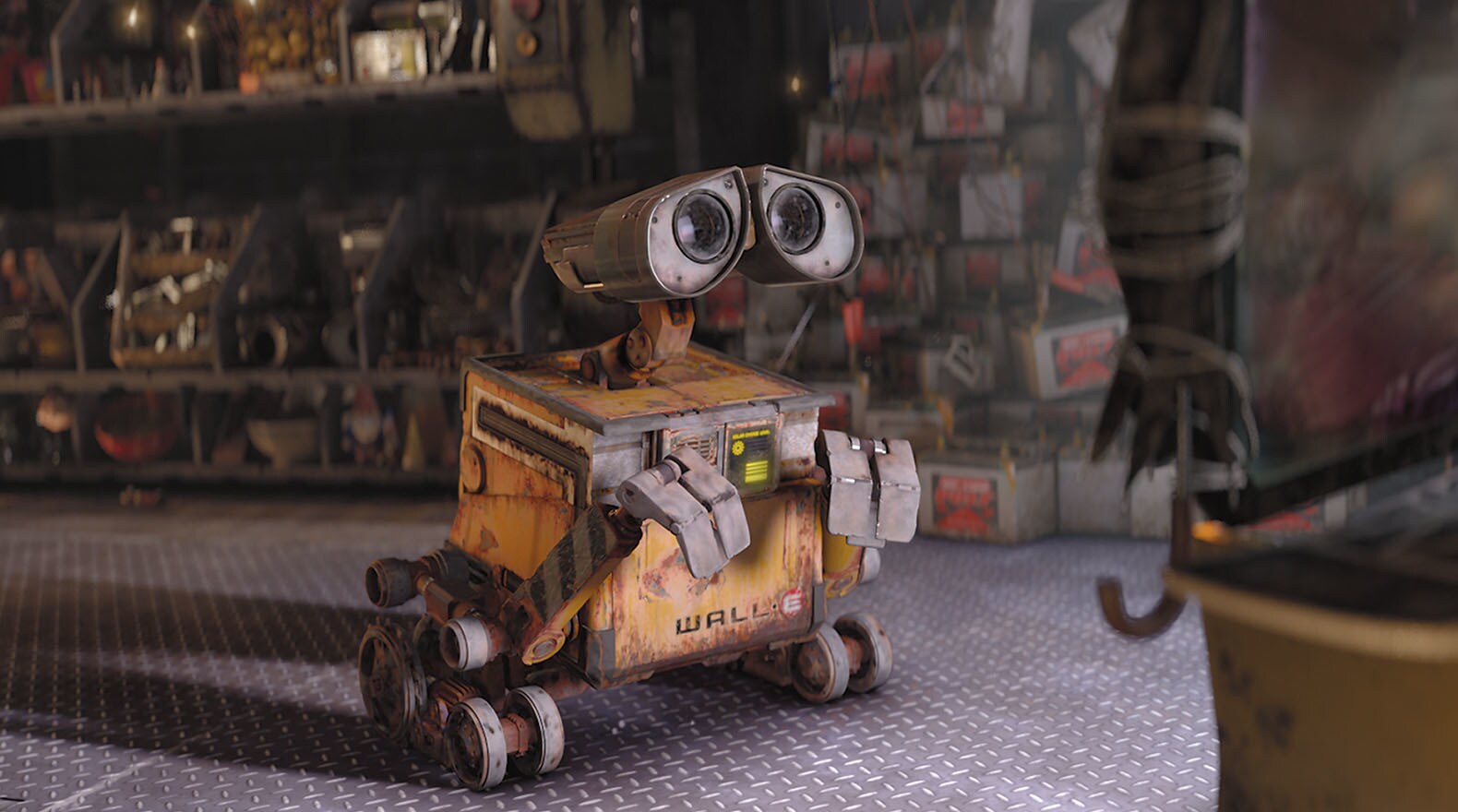
WALL•E learns about humans and emotions by watching an old film.

Being the last “Waste Allocation Load Lifter – Earth-Class” can be a bit lonely.
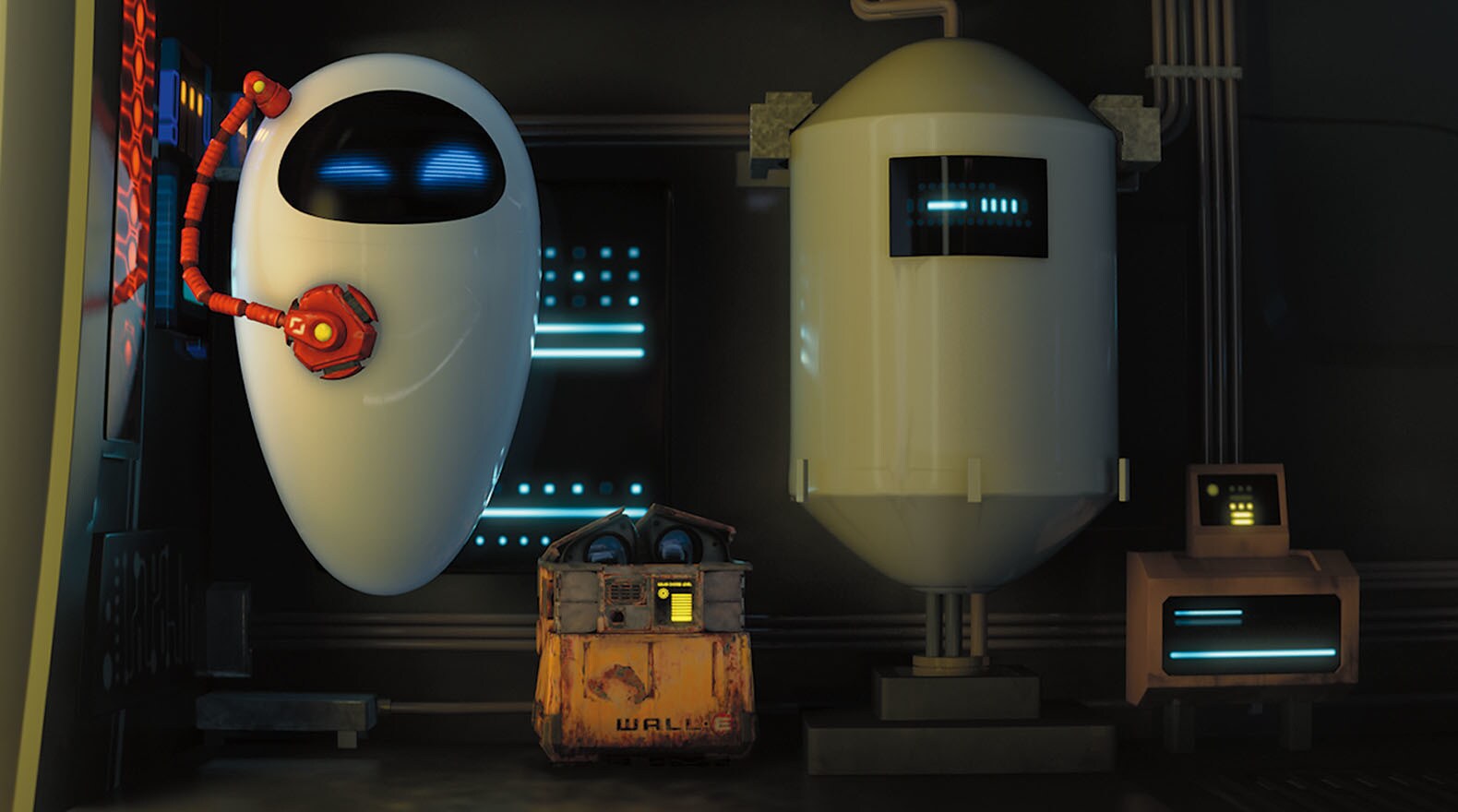
One of these robots is not like the others.
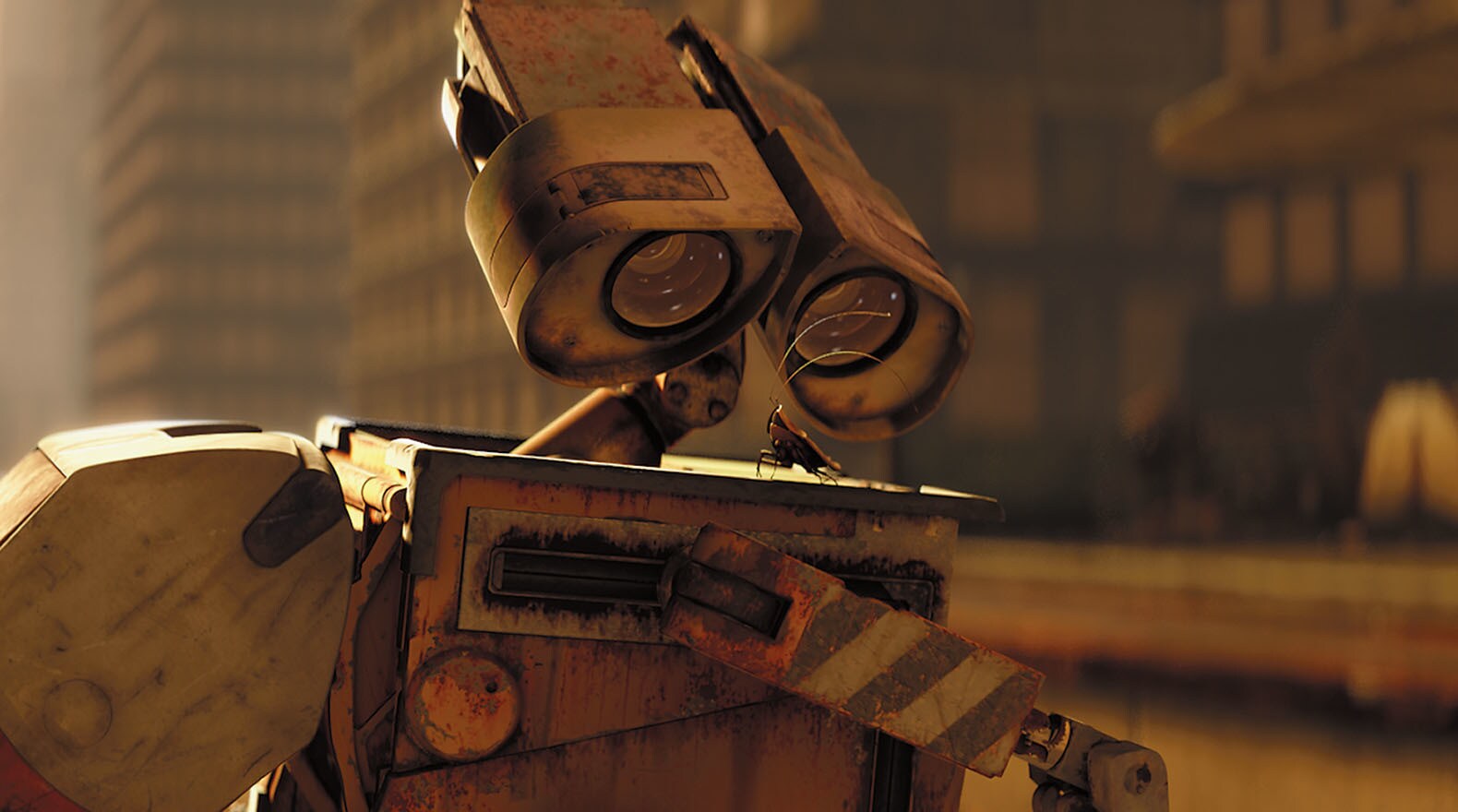
Waste allocation and load lifting is a tough job, but someone has to do it.
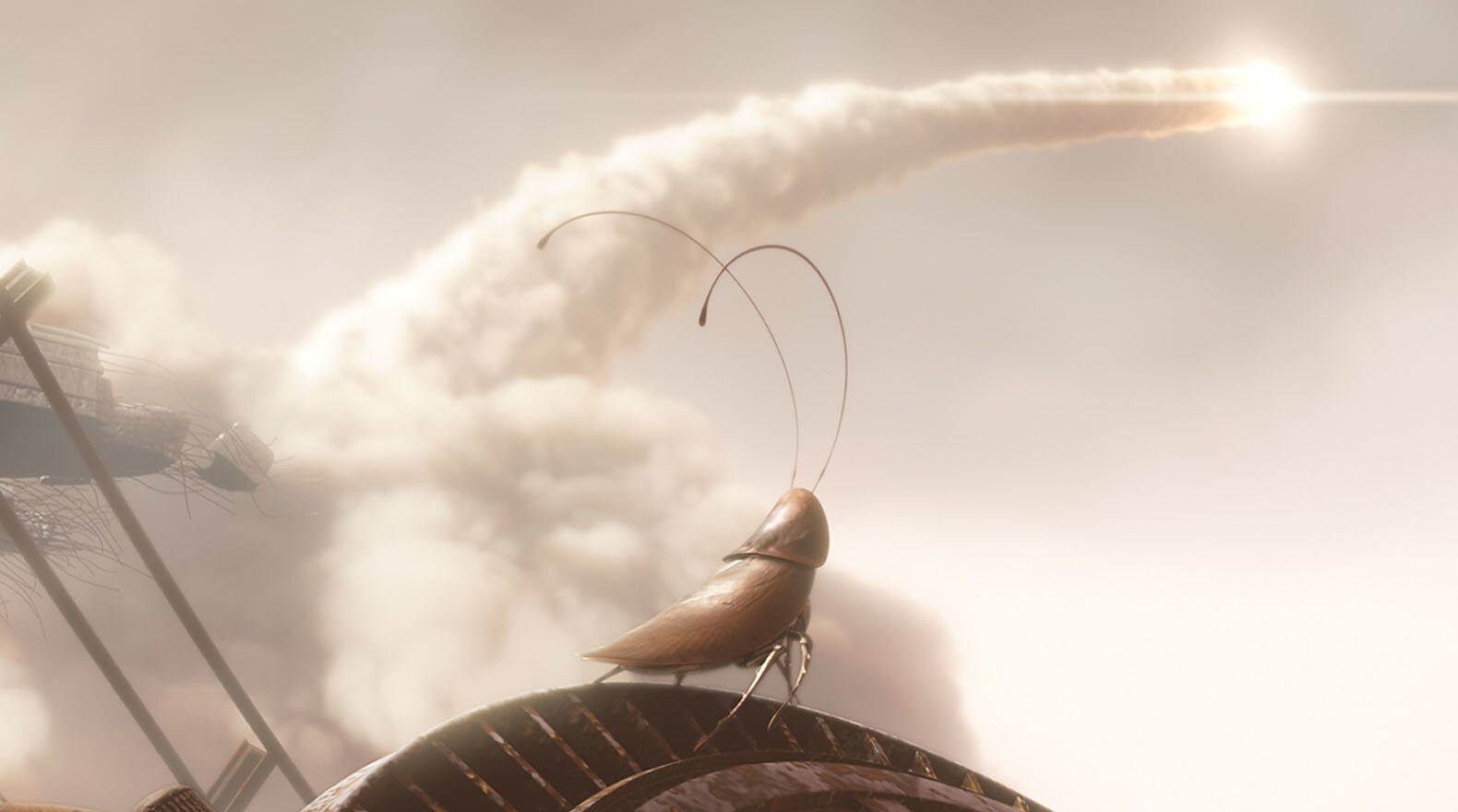
Hal watches as WALL•E goes on his first adventure.
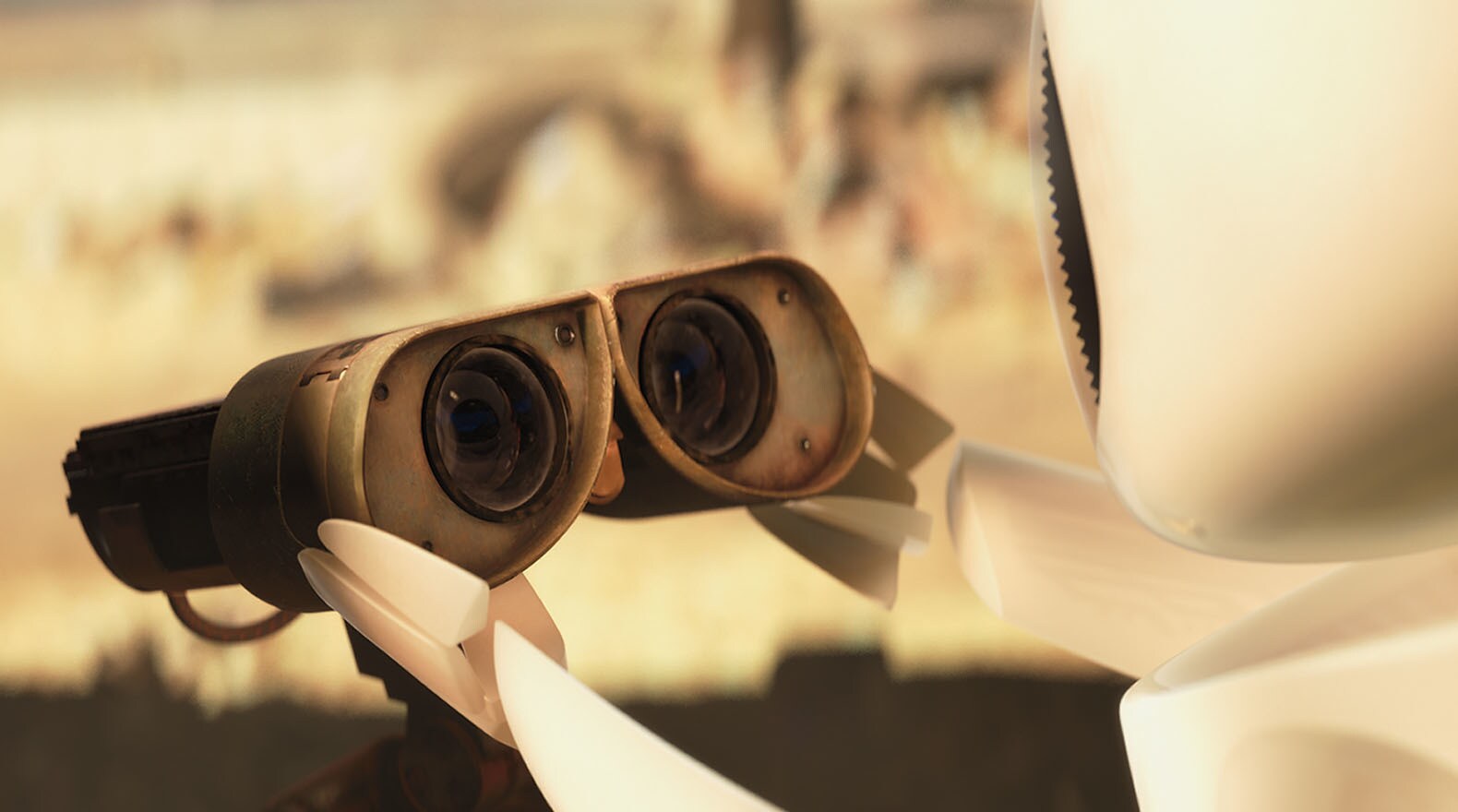
EVE is excited that WALL•E is himself again.
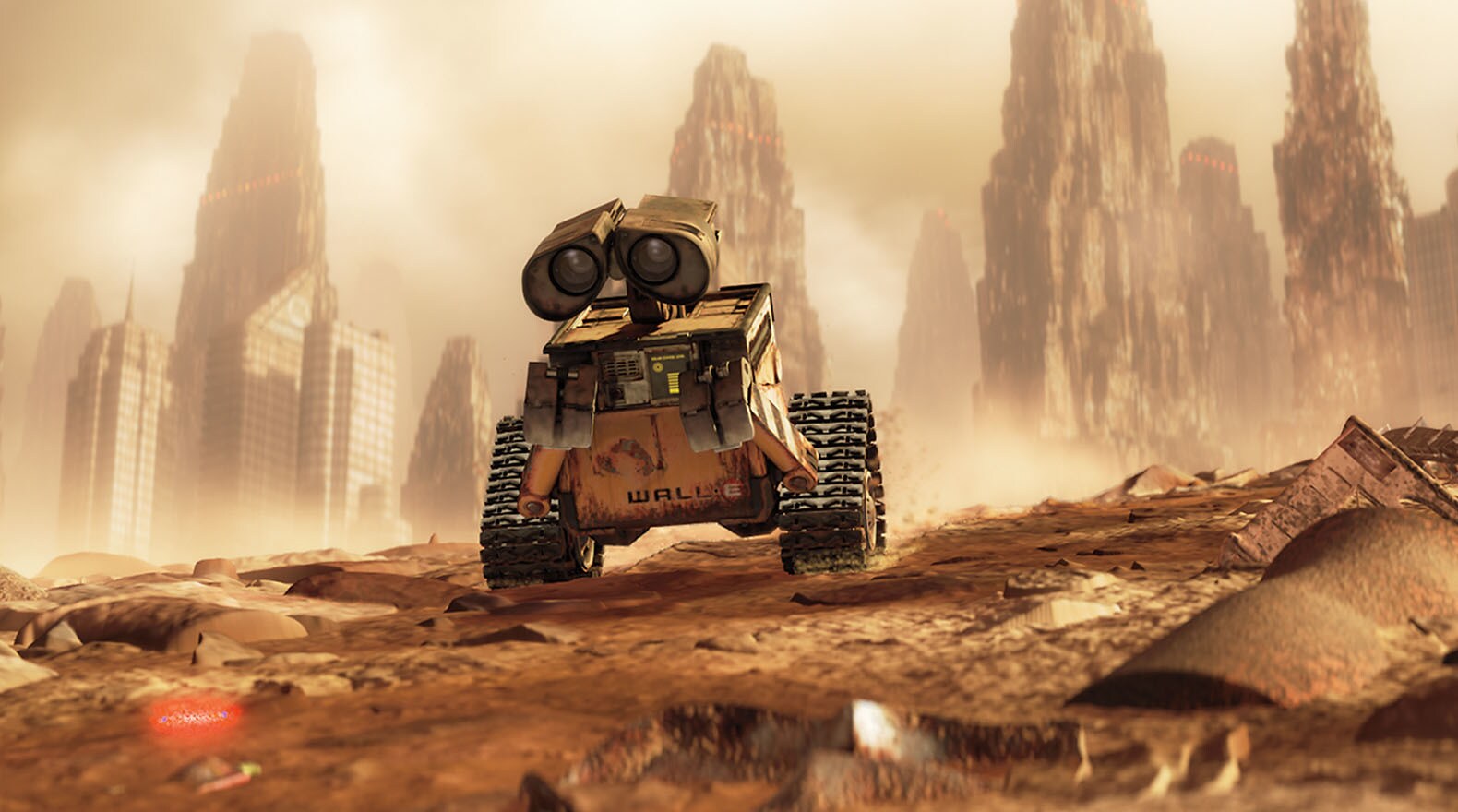
The first time WALL•E meets EVE, she’s all business.
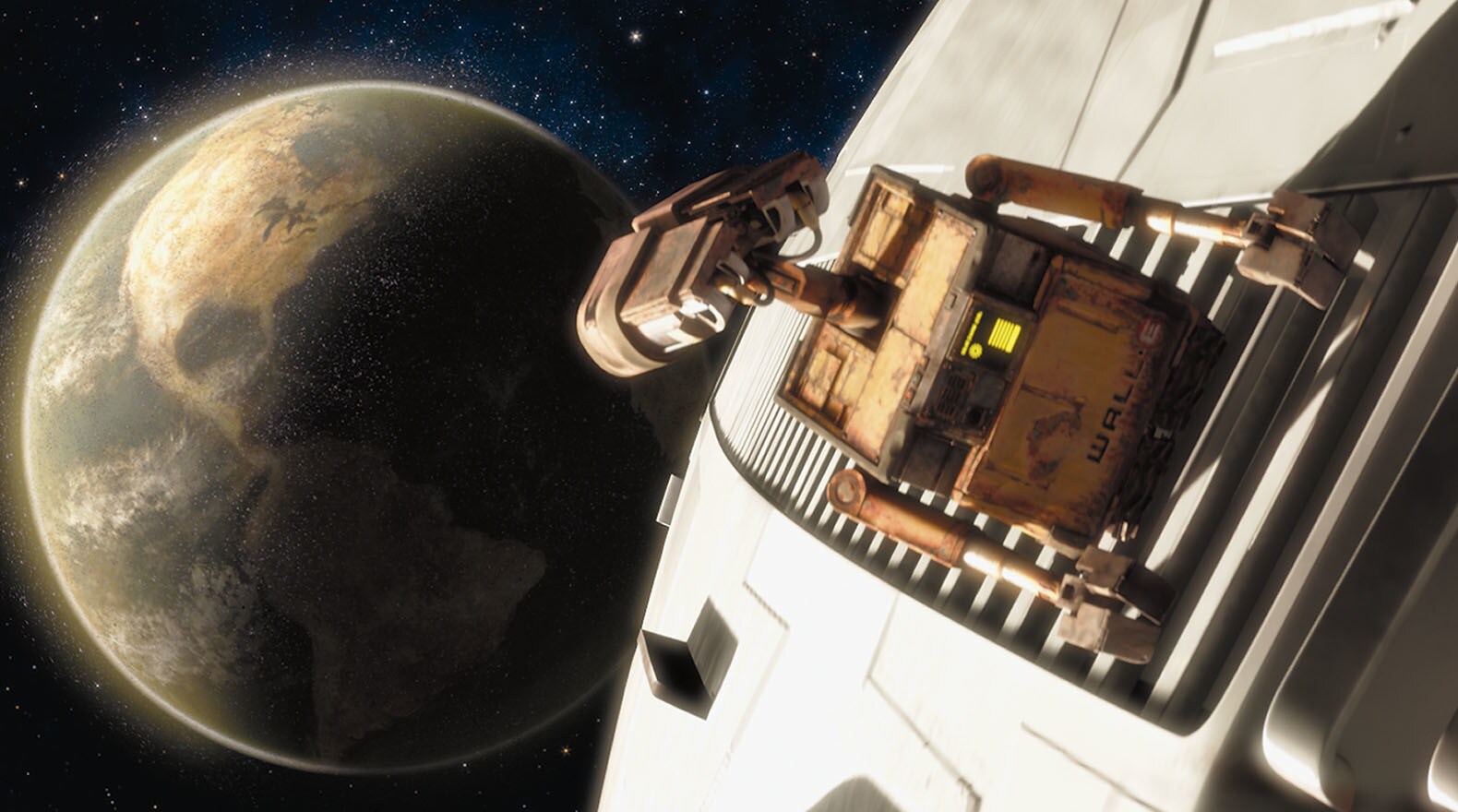
Hello outer space.
Discover WALL-E Products at DisneyStore.com
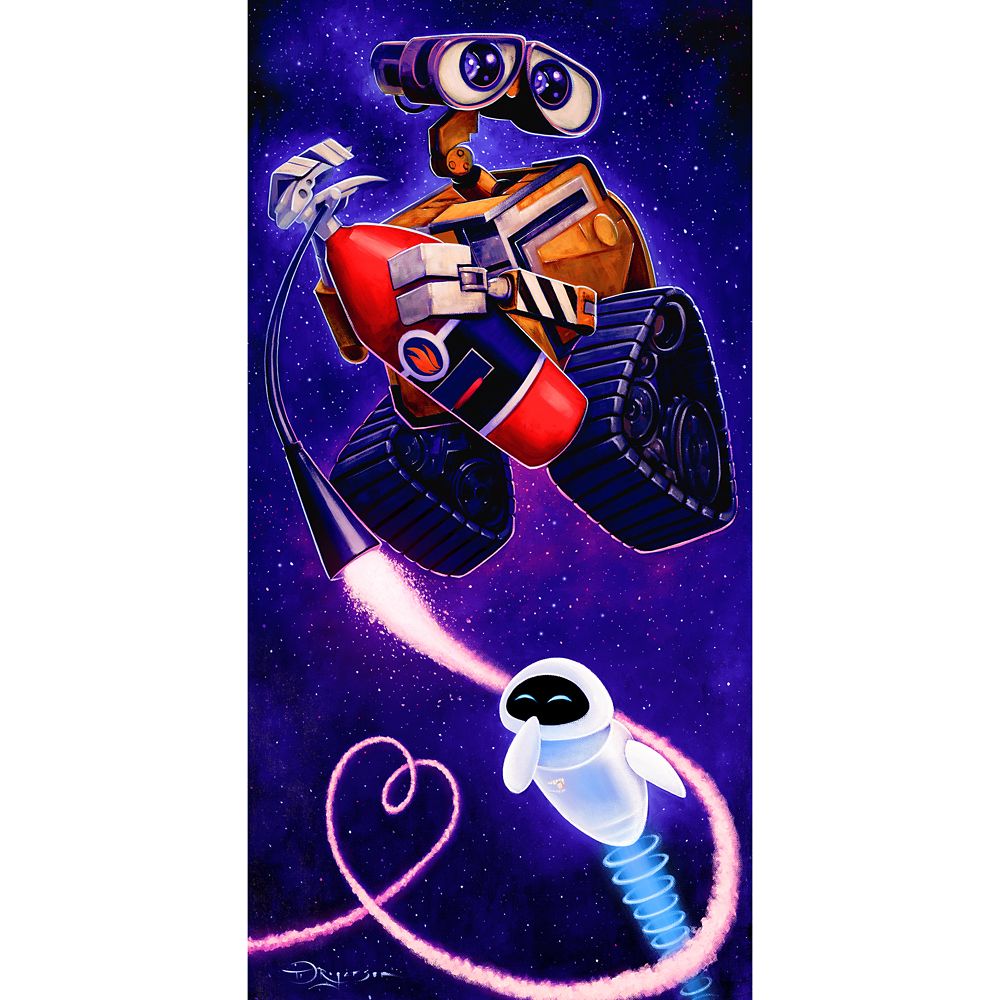
WALL•E ''WALL•E and EVE'' Canvas Artwork by Tim Rogerson – Limited Edition

WALL•E Cooler Tote

WALL•E Fashion T-Shirt for Kids

WALL•E ''WALL•E's Wish'' Giclée by Tom Matousek – Limited Edition

WALL•E ''WALL•E and E.V.E.'' Signed Giclée by Tim Rogerson – Limited Edition

WALL•E ''WALL•E's Wish'' Signed Giclée by Tom Matousek – Limited Edition
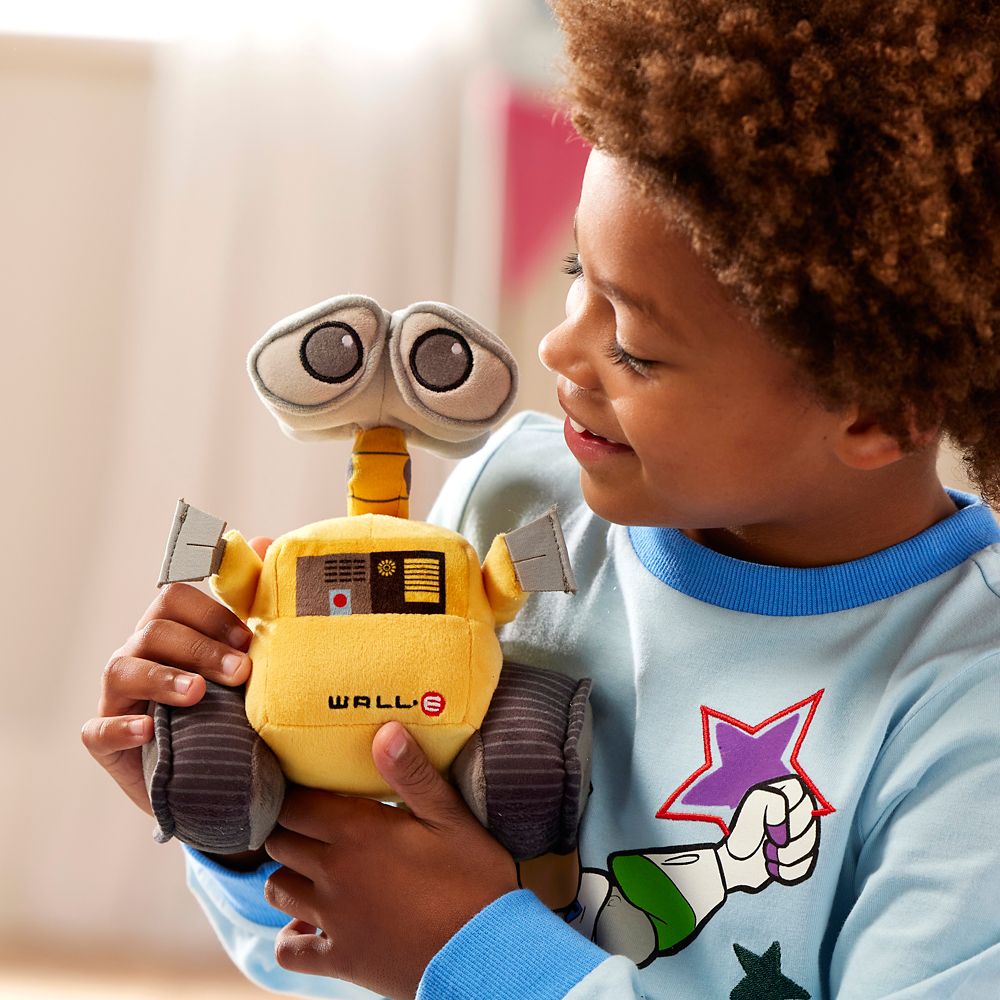
WALL•E Plush – Small 8''

EVE Plush – WALL•E – Small 7 1/2''

WALL•E and E.V.E Tie-Dye T-Shirt for Adults
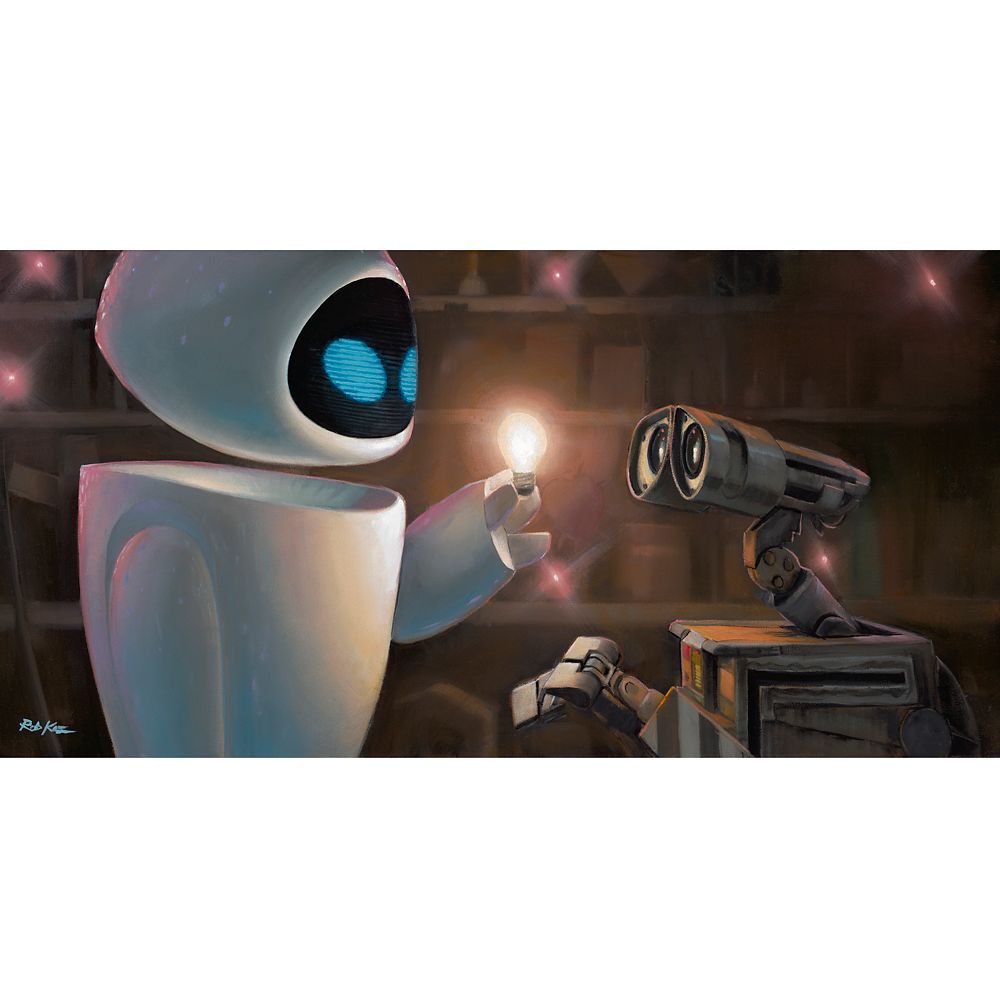
WALL•E ''Electrifying'' Canvas Artwork by Rob Kaz – 15'' x 30'' – Limited Edition
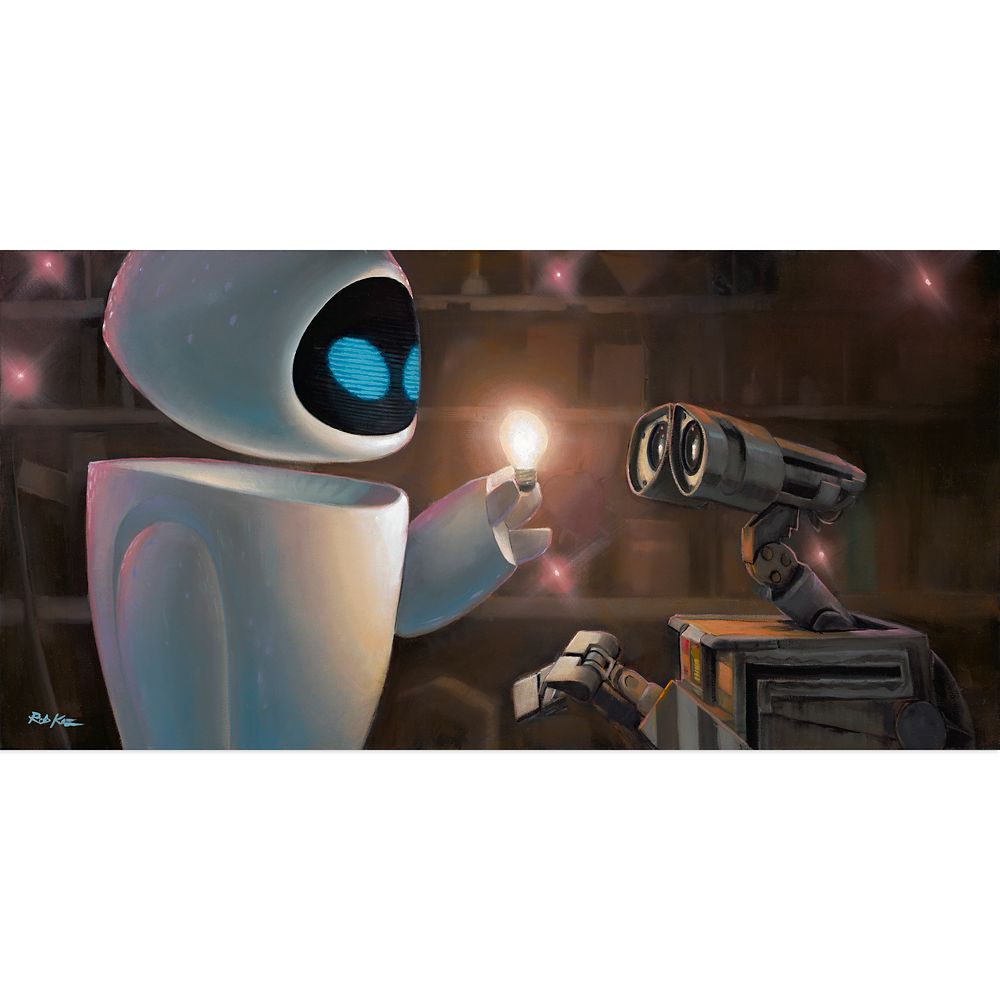
WALL•E ''Electrifying'' Canvas Artwork by Rob Kaz – 10'' x 20'' – Limited Edition

WALL•E and E.V.E. Earring Set

WALL•E Emoji Tee for Kids – Customizable

WALL-E Mug – Customizable

WALL-E Tee for Kids – Customizable

WALL-E Tee for Adults – Customizable

PIXAR Collection 7-Quart Slow Cooker

PIXAR Glass Top Serving Tray and Knife Set
Recommended movies.

Inside Out 2

Turning Red

Toy Story 4

Incredibles 2

Pixar Short Films Collection, Vol. 3

Finding Dory
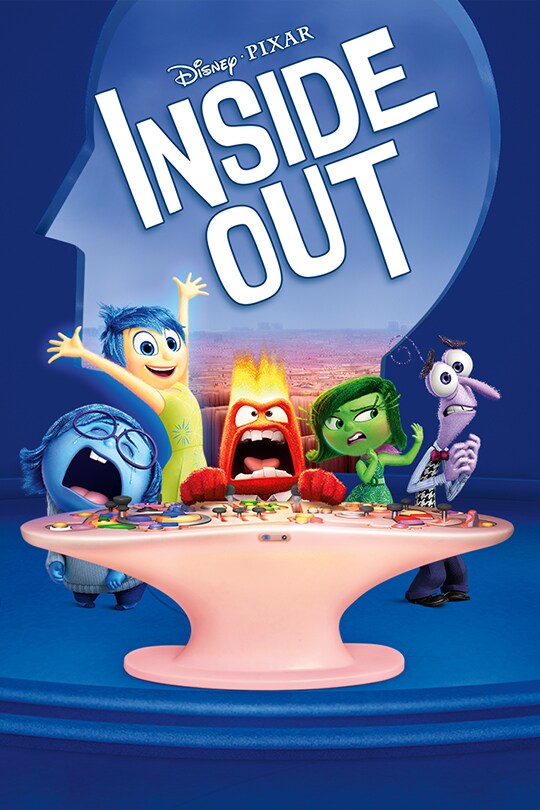
The Good Dinosaur

Party Central

Monsters University
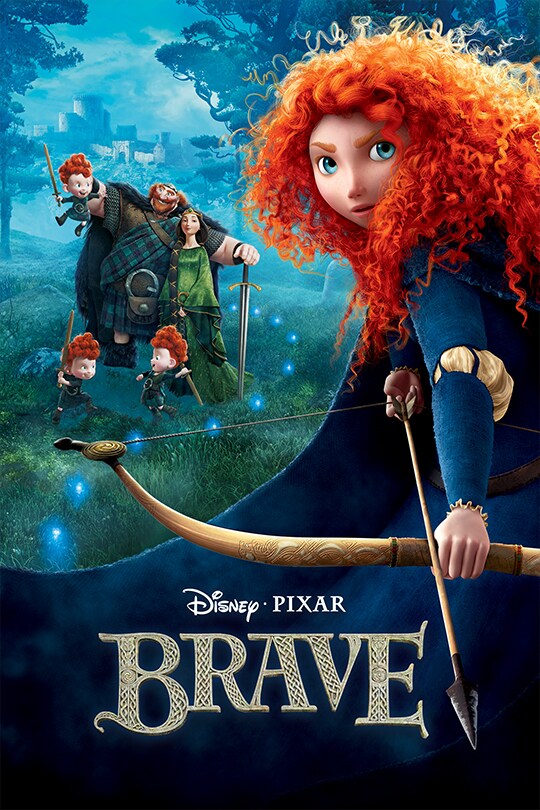
Pixar Short Films Collection, Vol. 2

- Entertainment
- Rex Reed Reviews
- Awards Shows
- Climate Change
- Restaurants
- Gift Guides
- Business of Art
- Nightlife & Dining
- About Observer
- Advertise With Us
WALL-E’s 15th Anniversary: What the Movie Got Right (and Wrong)
We look back at the beloved animated movie to see whether the future it predicted was right or not..

Fifteen years ago today, a little rust-bucket robot named WALL-E ambled his way into theaters, touting a story of hope in a world desiccated with man-made debris. The movie’s concern for consumerism, technological takeovers and environmental crises rang true as future worries back then, but they’re all the more salient now.
Sign Up For Our Daily Newsletter
Thank you for signing up!
By clicking submit, you agree to our <a rel="nofollow noreferer" href="http://observermedia.com/terms">terms of service</a> and acknowledge we may use your information to send you emails, product samples, and promotions on this website and other properties. You can opt out anytime.
Last month, many parts of the US experienced the kind of dusty haze of WALL-E ’s world due to Canadian wildfires. Drought and extreme heat is the new global normal . Twitter co-founder and former CEO Jack Dorsey recently commented on how the movie nails concerns over AI and evolving technology, saying that the film’s “out of touch” human characters represent “the future we’re driving towards.” It’s a film that has gotten a surprising amount of things right in its futuristic, sci-fi musings, so on its 15th anniversary, we’re looking back on what WALL-E got right and the things that it may have missed.

RIGHT: a failing (and aging) infrastructure
WALL-E, much like the planet he occupies, is rusted, dusted and just about busted, long in need of a refurbishment that no one ever made a plan for. Rather than take care of the growing waste problems, the powers that be declared it better to bail. They left robots out to roam the Earth, their purpose merely to condense trash rather than dispose of it. That blasé approach to waste management mimics our own reality of recyclables —or rather, how un recyclable most things are.
WALL-E’s aged body reflects the kind of wear and tear allowed on some of our most valuable and necessary modes of infrastructure. Between bridges and ramps collapsing, as well as train derailments and chemical spills, we’re in a moment that sees the consequences of long-term inaction. The lovable robot may be sturdy, but the things he represents are increasingly fragile.

WRONG: a dry, dead planet
WALL-E ’s characterization of Earth is as a deserted planet; not only is it free of people, but it lacks any sign of life. In one scene, the film shows a dock completely dried up, a massive boat still standing in the sandy wreck. Though extreme drought is becoming common throughout the world, one of the biggest threats of the climate crisis is a rising sea level. WALL-E’s home seems fairly New York adjacent (he passes a Times Square-style quarter of the run-down city, decked out with “Buy ‘n Large” digital ads), appearing as a formerly densely populated coastal city. As any New Yorker who’s been in the city during hurricane season should know, that kind of locale is more at risk for intense flooding than rapid drying.

RIGHT: the proliferation of virtual experiences
Between the Metaverse and the ubiquity of devices like Amazon (AMZN) ’s Alexa and Google Home, people are in tune with the virtual world now more than ever. On board WALL-E ’s Axiom, a luxury spaceliner-turned-permanent residency, community members can change their outfits with the tap of a screen, receive on-demand food and drink, and stay connected to whatever the ship has to offer 24/7. Whether that means people are streaming movies and shows, playing virtual reality games, or shopping with a rapid delivery service, life on the Axiom shares lots of similarities with our own contemporary consumer experiences.

WRONG: physical media
WALL-E charms as a character thanks to his affinity for nostalgia. He watches Hello Dolly on cassette and records songs with a few old-fashioned buttons on his cubic torso. He’s a collector, one who’s curiously drawn to outdated physical media—all of which miraculously works. The interest in the oldies isn’t what the movie gets wrong here (physical media is the last line of defense from oblivion, after all), but that detail of everything working just fine is. Take it from a writer who rewatched the film on a scratched DVD recently; if these things get damaged sitting on a shelf, how can we expect them to be okay after a near apocalypse?
(Plus, WALL-E plugs in an old, old iPod at one point, and we all know how reliable Apple products are after only a few years . . . )

RIGHT: self-driving cars need some work
There are plenty of gags that WALL-E pulls off concerning robots who can’t fathom straying from their pre-programmed paths—a la self-driving cars. Several times, WALL-E and EVE pull off tight merges onto a robo-highway on the Axiom, only for every other robot to miss that cue to brake, causing multiple major pile ups. That reaction time (or lack thereof) has long been an issue for self-driving cars, machines that can’t fully register the presence of emergencies and pull over accordingly. The stakes are clearly different between the movie and our reality, but the machine responses are largely the same.

WRONG: space travel timeline
WALL-E establishes a fairly vague timeline for the Earth’s destruction and the rapid innovation of space travel, aside from two major years. The events of the film take place in 2805, and the planet is abandoned in favor of the Axiom ship in 2110—less than 100 years from now. While there have certainly been great strides in space exploration in shorter periods of time, we still seem far, far away from having a massive, population-carrying spaceship, lido deck and all. Tourist trips around the moon are only in development, and those are meant to be round-trip, rather than the Axiom’s one-way. We’re in a new, privatized space race, but it’s one that hasn’t yielded the most promising results .

RIGHT: stopping the climate crisis takes all of us
The movie ends in a righteous human victory, as the largely disempowered captain of the Axiom wrests control from his 2001: A Space Odyssey -coded autopilot. He uses his authority to turn the ship towards Earth, a place where virtual worldly comforts don’t exist. The people on the ship are happy to return to their planet, to put in the hard work, and to get a little dirty to make things right again (even though the fabled “pizza plant” doesn’t exist). It’s a call to action, for those in positions of power to make difficult decisions that will ultimately benefit us all, and for the rest of us who are caught in a cycle of consumerism. Helping the Earth is not an easy task, but it’s something we need to prioritize. WALL-E was right about it then, and it still is now.

- SEE ALSO : Was ‘Poolman’ Written With Crayons? Chris Pine Is a Hunk, Not a Director
We noticed you're using an ad blocker.
We get it: you like to have control of your own internet experience. But advertising revenue helps support our journalism. To read our full stories, please turn off your ad blocker. We'd really appreciate it.
How Do I Whitelist Observer?
Below are steps you can take in order to whitelist Observer.com on your browser:
For Adblock:
Click the AdBlock button on your browser and select Don't run on pages on this domain .

For Adblock Plus on Google Chrome:
Click the AdBlock Plus button on your browser and select Enabled on this site.
For Adblock Plus on Firefox:
Click the AdBlock Plus button on your browser and select Disable on Observer.com.
You are using an outdated browser. Please upgrade your browser to improve your experience.
Science on Screen
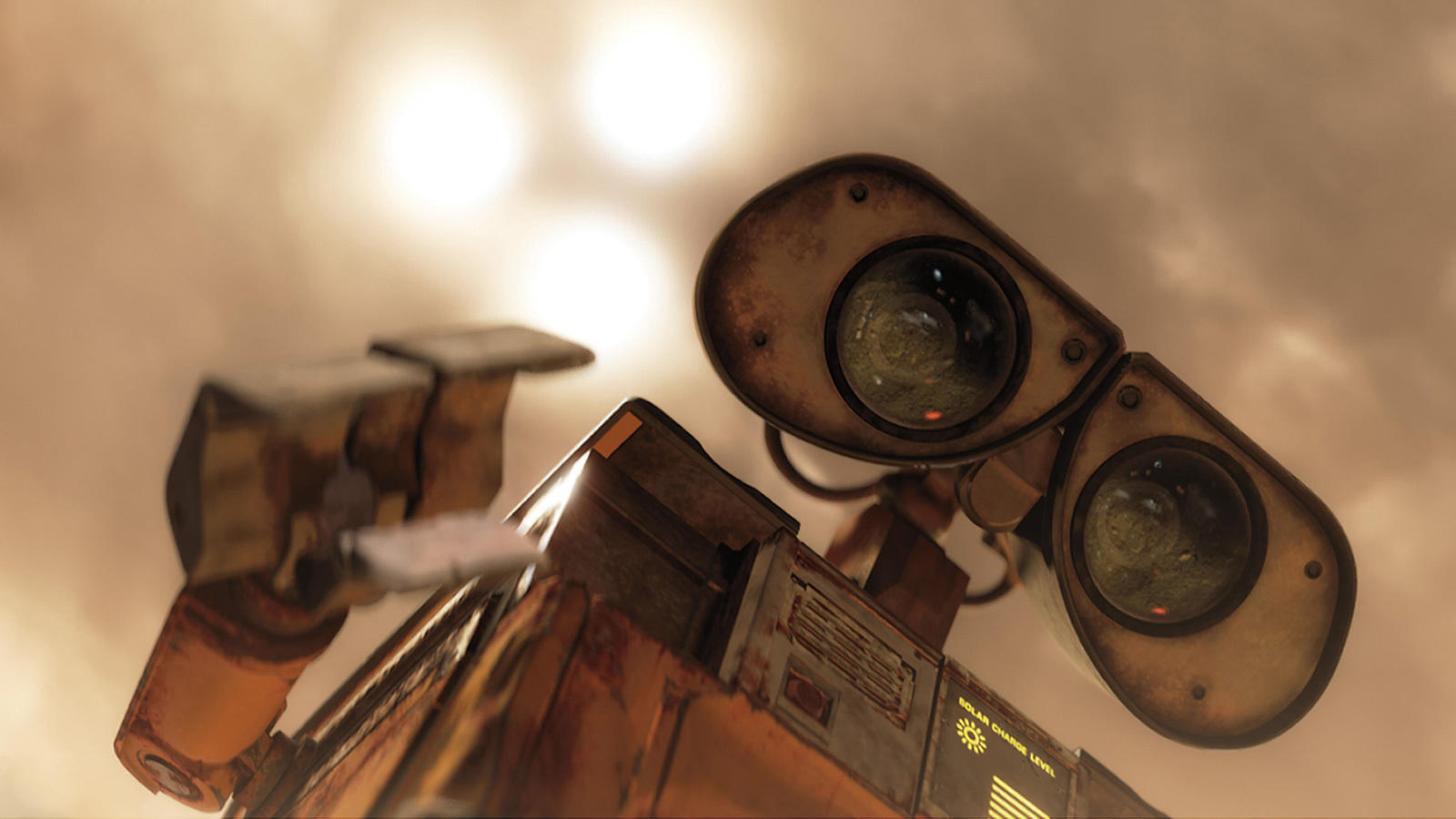
Release Date
- Andrew Stanton
- Elissa Knight
- Jeff Garlin
Film Synopsis
In the distant future, a small waste-collecting robot inadvertently embarks on a space journey that will ultimately decide the fate of mankind.
In the distant future, Earth is overrun with garbage and devoid of plant and animal life. The surviving humans live on the spaceship Axiom after vacating the planet hundreds of years earlier. The original plan was for humans to live in outer space for five years while waste-cleaning robots ("WALL-Es") prepared Earth for re-colonization. However, centuries later, just one WALL-E (voiced by Ben Burtt) remains. Lonely, with only a pet cockroach to keep him company, WALL-E discovers a new purpose in life when he meets a sleek search probe named EVE (Elissa Knight). EVE comes to realize that WALL-E has inadvertently stumbled upon the key to the planet's future, and races back to space to report her findings to the humans. Meanwhile, WALL-E chases EVE across the galaxy on a journey that will ultimately decide the fate of mankind. Produced by Pixar and released by Walt Disney Pictures, WALL-E won the Academy Award for Best Animated feature.
Credit: Disney
Past Programs
Belcourt Theatre, Nashville, TN
Varsity Cinema, Des Moines, IA
Heartland Film, Indianapolis, IN
Sorry, Disney+ is not available in your region.

The Axiom’s Pivotal Role in WALL-E’s Journey
Welcome to the world of Axiom, the futuristic spaceship from the beloved Pixar movie, Wall-E! Axiom is a cruise ship that has been in space for 700 years, hosting a population of 600,000 humans and 500,000 robots. In this post we will explore the ship’s fascinating history and design.
Axiom was built by Buy N Large (BnL), a powerful corporation that had taken over the world’s economic system. To escape Earth’s pollution, BnL launched the Axiom into space to provide a home for its citizens.
The design of the Axiom is truly remarkable; it features an enormous engine nacelle large enough to accommodate 5,000 passengers and the largest supertanker ever built. Inside, there are five decks populated with humans and robots; each deck has its own distinct purpose. From the Lido Deck to Auto-Pilot Central Command, each area of Axiom has something unique to offer.
The interior of Axiom is also equipped with incredible technology. It runs on autopilot and can be controlled remotely from Earth by BnL officials. Additionally, it is designed with advanced safety protocols so that no human or robot can be sucked out into space should an airlock open unexpectedly.
One of the most memorable moments in Wall-E occurs when EVE and WALL-E take refuge in an airlock chamber during their pursuit by reject bots; EVE manages to close the airlock door just in time before they are sucked into space!
So there you have it – a comprehensive overview of Axiom, one of Pixar’s coolest creations! We hope you enjoyed learning aout this amazing spaceship, because it certainly plays an important role in Wall-E’s story!
The Representation of the Axiom in WALL-E
The Axiom represents a warning of what Earth could become if we do not take care of it. The Axiom is a huge spaceship filled with humans who have been forced to flee the polluted and dystopian world they have left behind on Earth. The ship is a literal representation of how far humanity has come in its pursuit of overconsumption and technological advancement, as well as its neglect of the environment and its consequences. The Axiom is filled with robots who cater to the humans’ every need, allowing them to float around in luxurious pods while their environment slowly deteriorates. This serves as a cautionary tale for viewers, demonstrating what could happen if mankind continues to ignore the consequences of their actions. WALL-E, an autonomous robot from Earth, serves as a reminder of hope, showing that even when all seems lost there is stll hope for a brighter future if we act responsibly.

Number of People Aboard the Axiom in WALL-E
The Axiom, the passenger spaceship featured in the animated science fiction movie WALL-E, was carrying a total of 600,000 passengers as well as 500,000 robots. This impressive figure is made up of 5,000 human passengers and 595,000 robots. It is the largest supertanker ever built and is capable of holding an incredible amount of people. These passengers were aboard the Axiom when it was launched from Earth to find a new home for humanity after the planet had become uninhabitable. The Axiom was powered by a large engine nacelle that enabled it to travel across space with its cargo of people and robots.
The Fate of the Axiom After WALL-E
After WALL•E and EVE, along with the plant, were almost sucked out into space, they were rescued and returned to the Axiom. On their return, the captain of the Axiom was informed of the plant’s discovery and ordered a search for a suitable settlement on Earth. After travelling through space for several weeks, the Axiom located an area on Earth that matched their criteria and landed there.
Once on Earth, WALL•E was repaired with help from EVE and the WALL•As, while all other robots worked together to build a human city and prepare it for colonization. Eventually, when all preparations were complete, humans began arriving and settling in the new city.
With ther mission accomplished and humans now living safely on Earth, the Axiom departed and returned to its original mission: searching deep space for any signs of life or civilization.
How Long Did Humans Spend on the Axiom in WALL-E?
In the Pixar movie WALL-E, humans are shown to have been on the Axiom for approximately 700 years. After a period of extreme consumerism and environmental pollution, humanity had to evacuate Earth in order to survive. The space-faring vessel called the Axiom was sent out carrying the last remaining population of humans, who were put in suspended animation until they could find a suitable planet to colonize. However, due to an autopilot malfunction, they remained in space for 700 years before being awoken by an automated probe sent from Earth. During this time, WALL-E, a robot left behnd on Earth, made his way onto the Axiom and helped EVE find evidence of plant life that could potentially help restore the planet.
The Significance of the Cockroach in WALL-E
The cockroach is a significant character in the movie WALL-E because it serves as a symbol of hope and resilience in the face of environmental destruction. The cockroach is the only creature aside from WALL-E that is able to survive in the toxic wasteland that Earth has become due to humanity’s neglect and abuse of their planet. It provides a reminder that, despite all the damage done, life still manages to thrive and survive in even the most desperate of circumstances. The presence of this resilient insect serves as a reminder that thee is still hope for humanity and our planet, if we can learn from our mistakes and take action.
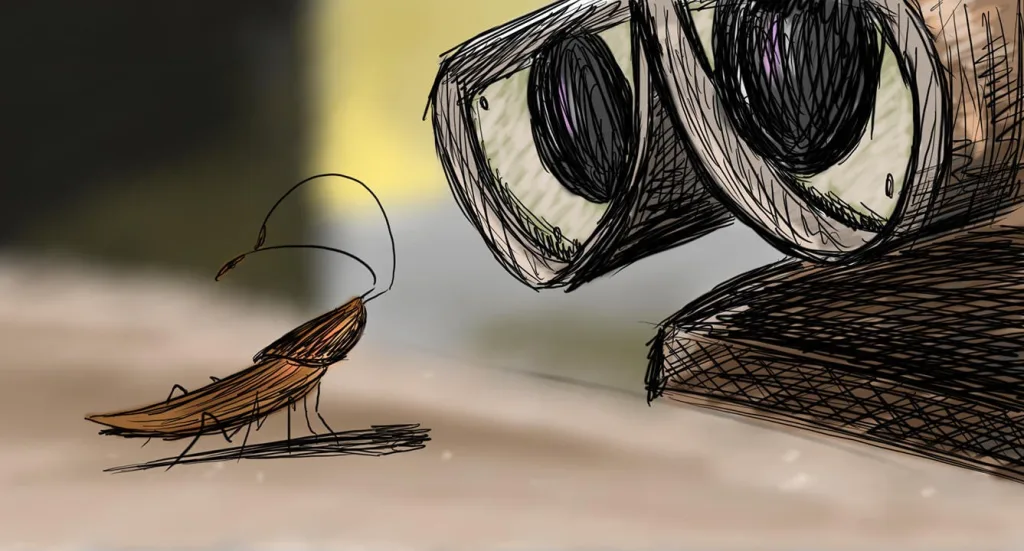
The Symbolism of Buy N Large
Buy n Large is a fictional megacorporation featured in the 2008 Disney/Pixar film WALL•E. The company symbolizes the over-consumption and wastefulness of modern consumer culture. Through its logo, slogan (“Bigger Is Better”) and omnipresence in the movie, Buy n Large represents how people often become so obsessed with buying more and more products that they forget teir own values and sense of responsibility. In the movie, the corporation is responsible for polluting Earth with their garbage until it can no longer sustain human life, leading to humanity’s evacuation to space. The company’s products are seen as a symbol of excess and disposability, with characters throwing away items after only a single use. Buy n Large’s message is clear: our reliance on consumerism has caused us to overlook our environment and forget our responsibility to protect it.
How Long Did Humans Spend on the Axiom?
The humans on the Axiom were initially intended to live in outer space for five years while robots prepared Earth for recolonization. The plan was orchestrated by Buy N Large, a large corporation that had its logo visible from the ship’s main concourse. Professor Simon was in charge of inventing the robots, commonly referred to as WALL-Es, which were designed to clean up Earth and make it suitable for human inhabitation again. Ultimately, however, the humans ended up staying on the Axiom much longer than anticipated due to an unexpected malfunction of the autopilot system.
Distance of the Axiom From Earth
The Axiom was designed to hover approximately 250 miles above the Earth, making it far enough away for its passengers to experience the thrill of space travel without venturing too far from home. The Axiom offers a unique and exciting experience, allowing people to experience the wonders of space at a safe distance. At this altitude, passengers can sill see the curvature of Earth’s horizon and observe details on its surface, as well as witness amazing cosmic phenomena like sunrises and sunsets in rapid succession. Additionally, Axiom’s commercial space station will provide unprecedented access to research opportunities in areas such as astronomy and astrophysics.
Is WALL-E the Final Remaining Robot?
No, WALL-E is not the last robot. While he is the last active robot left from the original clean-up mission, there are still many robots and machines in use across the world today. In fact, automation has become increasingly prevalent and many robots can be seen in factories, hospitals, warehouses and even homes. Although WALL-E may be the last of his kind, he certainly isn’t alone in a world that relies ever more on robotics and automation.

Where Did the Humans in WALL-E Go?
The humans in WALL•E have left Earth on a giant ship called the Axiom. This is because of all the garbage they had created while living on the planet, leaving it uninhabitable. The Axiom is an intergalactic cruise liner that was sent out to search for a new home for humanity and can travel btween galaxies. The ship was designed with a fully automated system and enough supplies to last hundreds of years, so the humans were able to make the long journey without ever having to stop. Unfortunately, when they reached their destination, they found that it was already filled with humans and so they had to stay on the ship, unable to return home.
The Impact of Memory Loss on WALL-E
Yes, WALL-E did lose his memory after being zapped by AUTO. After EVE brought him home, she replaced his circuit board, which in turn restored his memories. Although it was a traumatic experience for WALL-E, he eventually regained his memories and is now back to normal.
The Presence of Humans on Earth in WALL-E
No, there are no humans on Earth in WALL-E. In the beginning of the movie, it is revealed that humans have abandoned Earth, leaving only a few robots behind to clean up their mess. These robots, such as WALL-E and EVE, have been left behind to continue their task, whle the humans cruise in space aboard a massive space liner. As the movie progresses, it becomes clear that the human race has been absent from earth for hundreds of years, with no intention of returning.
The Emergence of Sentience in WALL-E
WALL•E became sentient when he was left alone to fulfill his directive of collecting and compacting the garbage for 700 years. Over that time, WALL•E developed a “glitch” that enabled him to become self-aware and develop a personality. His curiosity led him to collect various objects istead of just compacting them, furthering his development. As a result, WALL•E was able to form relationships with other robots, think independently and form his own ideas and values.
What Does Earth Look Like in Pixar’s WALL-E?
In the movie WALL-E, Earth is depicted as a world in a state of decay. Human civilization has long since left, leaving behind a planet covered in an immense amount of trash and pollution. The sky is perpetually murky and grey, with smog clogging the air. Ruins of cities are all that remain of humanity’s former presence, along with towering piles of garbage reaching miles into the sky. Buildings are overgrown with vegetation, while the ground is littered with discarded packaging and waste. All in all, it paints a starkly realistic picture of what Earth culd look like if we continue to overuse resources and pollute our environment.
The Axiom in Wall-E serves as a warning to us of the destruction we could cause if we do not take care of our planet. It holds 600,000 passengers and 500,000 robots, and is the largest supertanker ever built. The Axiom’s inhabitants have been living in space for 700 years, only returning to Earth when WALL-E and EVE’s brave actions manage to bring them back. This serves as a reminder that even with technology and scientific advances, there is still a need for human connection and compassion in order to help sustain the world around us.
William Armstrong
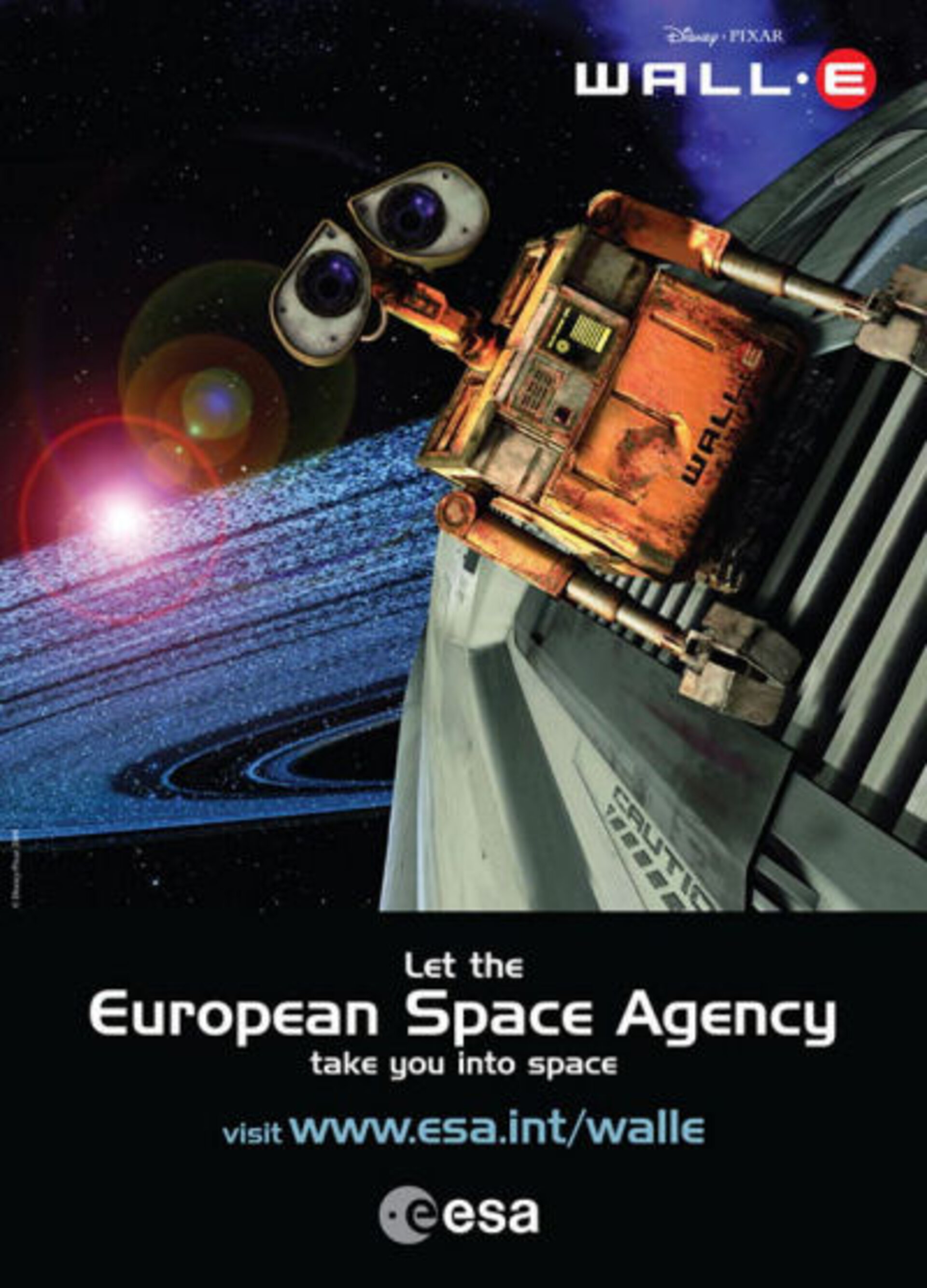
Explore space with Disney/Pixar’s WALL-E (and Friends)
To mark the European launch of WALL-E, Disney/Pixar's exciting smash hit movie, ESA is launching a new website which highlights the multitude of educational resources and fun activities that are available on the Agency's Internet pages.
In the blockbuster movie, a lonely little robot named WALL-E develops a deep curiosity that eventually inspires it to set off on a fantastic voyage across the galaxy in search of a probe-droid called EVE.
As is often the case, science fiction is some years ahead of science fact. Although ESA is currently developing “semi-intelligent” robots that can explore other planets and assist astronauts in space, relatively few Europeans have so far been lucky enough to leave planet Earth.
Fortunately, there are much easier ways for people - young and old - to follow in WALL-E's footsteps. In order to explore space from the comfort of your own home or classroom, all you have to do is log onto the WALL-E portal to enter a world of fascinating facts, animations, pop-ups, educational DVDs, DIY experiments, games, competitions and puzzles.
“As an extension to its existing outreach activities, ESA has developed this website in collaboration with Disney/Pixar,” said Francesco Emma, Head of ESA's Education Office. “We see this as an exciting new way to introduce young people to the wonders of space exploration.”
On the WALL-E web site, the robotic characters are on hand as guides to ESA missions and educational material that can be linked to the movie. The content is organised under 4 themes: Our Place in the Universe, Caring for the Earth, Life in Space, and Exploration and Robotics.
Each of these themes can be used to find educational information that will be of value for teachers, learn about the Universe, our planet, Astronauts and Robots and link to the ESA Kids website, where you can find material that will inspire and entertain everyone who is young at heart.
Our Place in the Universe
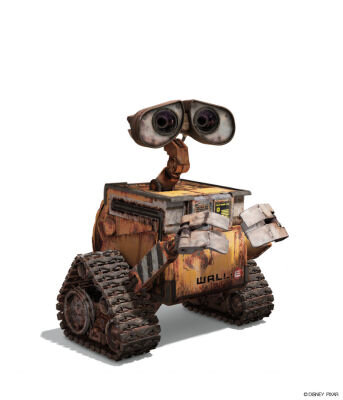
Through ESA’s WALL-E web site you can find out about the wonders of the Universe, as well as exciting missions such as SOHO, which stares continuously at the Sun, and the Huygens probe which made an historic landing on Saturn’s giant moon, Titan.
Caring for the Earth
By clicking on the Media Gallery you can admire images of the beautiful blue Earth and learn about remote sensing from space. The site also helps you to find out about ESA’s satellites, including Envisat, the largest Earth observation satellite ever launched, the Earth Explorer missions and the Meteosats which monitor our changing weather.
Life in Space

The WALL-E portal provides links to the ISS Education Kit for primary (8-10 year-olds) and secondary schools (12-14 year-olds) and various web lessons on line. You can also learn how to survive in space, and find out about ESA’s Columbus laboratory and the Automated Transfer Vehicle which is now delivering tonnes of supplies to the ISS.
Exploration and Robotics
Like WALL-E, humans have always been driven by curiosity to discover more about our world and the Universe that surrounds us. Today, the exploration of space remains one of the most stimulating and exciting areas of scientific research. Visit the WALL-E portal to find out about ESA’s Aurora programme of Solar System exploration, the Lunar Robotic Challenge, the ExoMars rover and the search for life on other planets.
Thank you for liking
You have already liked this page, you can only like it once!
Related Links
ESA WALL-E website
Wall-e website.

ESA Education
WALL-E: Tackling Space Debris for a Cleaner Orbital Future
- February 29th, 2024
- No Comments
Table Of Contents
The Oscar-winning animated film “WALL-E” introduced many to a vision of Earth’s orbit crowded with space debris, a portrayal that resonates with current concerns among scientists and space agencies. This floating detritus consists of defunct satellites, spent rocket stages, and fragments from disintegrations, collisions, or other related incidents. As these objects travel at high speeds, they pose a risk to operational spacecraft, including satellites and manned missions, leading to potential damage or catastrophic collisions.

Understanding the characteristics, origins, and potential impacts of space debris is essential for the future of space exploration and the protection of our orbital environment. With efforts to manage and mitigate debris, there are strategies being developed to track and remove objects from orbit. However, ensuring the long-term sustainability of Earth’s critical orbital layers requires international cooperation and innovative technological solutions. Surveillance of space debris involves tracking thousands of pieces to predict possible collisions, while mitigation strategies include designing spacecraft that minimize debris generation.
Key Takeaways
- “WALL-E” reflects real concerns regarding space debris and the overcrowding of Earth’s orbit.
- Space debris poses a collision risk to active spacecraft and requires consistent tracking and management.
- Sustaining a safe orbital environment necessitates international collaboration and advanced mitigation strategies.
Understanding Space Debris
When discussing the sustainability of space exploration and the protection of Earth’s orbit, it is essential to have a comprehensive understanding of space debris. This section explores the characteristics, origins, and potential future implications of the debris that surrounds our planet.
The Nature of Orbital Debris
Orbital debris, commonly referred to as space junk, consists of objects in Earth’s orbit that no longer serve any useful purpose. This includes everything from decommissioned satellites to fragments resulting from collisions or disintegration. Such debris travels at speeds up to 7.5 kilometers per second ( approximately 17,500 mph ), posing a significant threat to operational spacecraft, including the International Space Station (ISS), satellites in low earth orbit, and future manned missions.
Sources and Types of Space Junk
Space junk originates from various human activities in space. Man-made debris includes:
- Nonfunctional Satellites : Satellites that have completed their mission or malfunctioned remain in orbit.
- Launch Vehicle Stages : Rocket stages used to propel payloads into space may be left adrift.
- Mission-Related Debris : Objects ranging from lens caps to astronaut tools can escape and remain in orbit.
Fragmentation Debris : This category consists of smaller pieces generated by accidental explosions or high-speed collisions. These remnants pose an escalated risk due to their sheer numbers and difficulty to track.
The Kessler Syndrome and Its Implications
Proposed by NASA scientist Donald J. Kessler in 1978, the Kessler Syndrome describes a scenario in which the density of objects in low earth orbit is high enough that collisions between objects could cause a cascade of collisions. Each collision generates more debris, further increasing the likelihood of subsequent collisions. This self-perpetuating cycle could exacerbate the space debris problem and potentially render some orbital regions inhospitable for decades, complicating future missions and satellite deployments.
Historical Context and Current Challenges
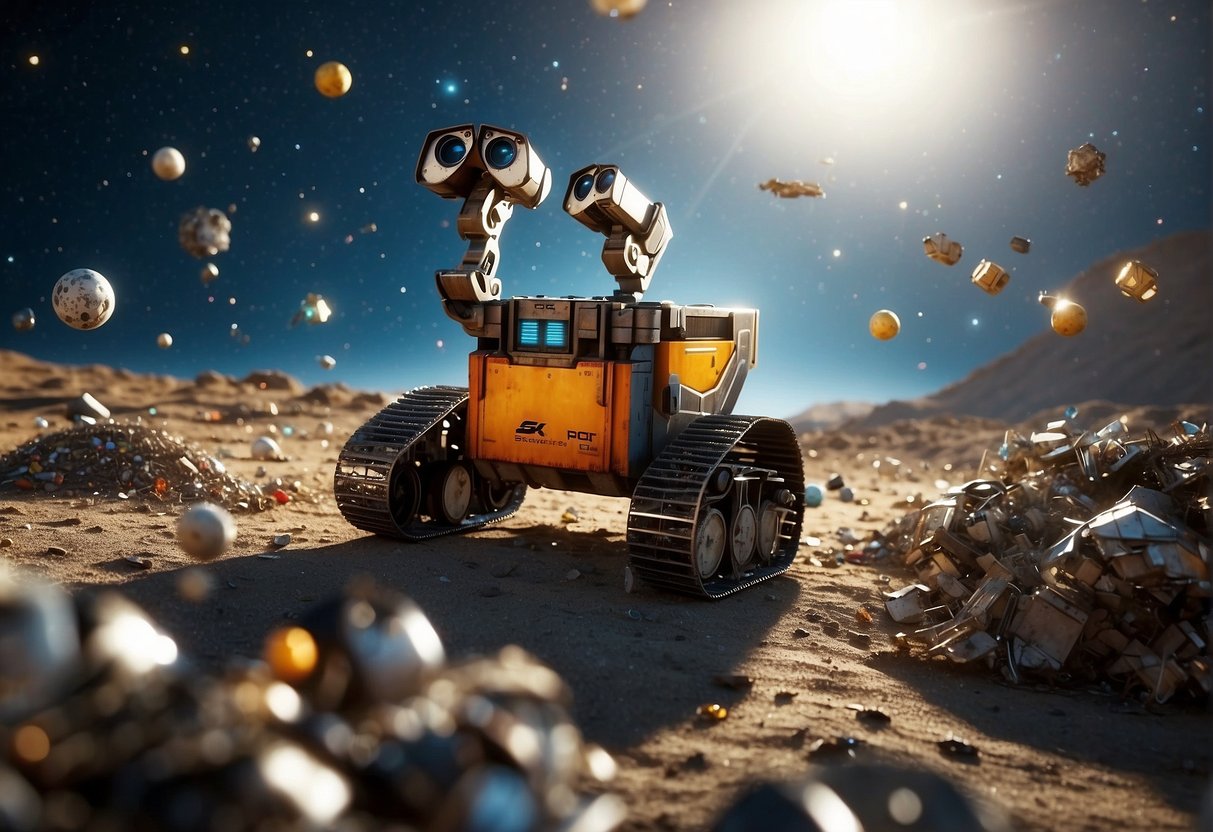
To understand the future of Earth’s orbit, it’s crucial to examine the evolution of space debris, notable incidents, and the mounting risk of collisions.
The Evolution of Space Debris
Space debris has been accumulating since the dawn of the Space Age with the launch of Sputnik in 1957. Over time, the number of debris objects—from defunct satellites to spent rocket stages and even tools dropped during spacewalks—has increased significantly. ASAT tests , or anti-satellite weapon tests, have further contributed to this clutter, leaving a trail of fragments in orbit.
High-Profile Incidents and Accidents
One such incident is the 2009 collision between the defunct Russian satellite Cosmos 2251 and the operational Iridium communications satellite, which resulted in thousands of pieces of debris. High-profile accidents of this sort underscore the challenges posed by space debris.
The Increasing Risk of Collisions
As more nations and private entities send satellites into orbit, the risk of collisions in space grows. Such events can lead to a cascade effect known as Kessler Syndrome, where debris generates more debris, potentially limiting the use of specific orbital paths. It’s a challenge that continues to compound as Earth’s orbits become increasingly populated with satellites for communication, navigation, and observation.
Earth’s Orbit and Its Critical Layers
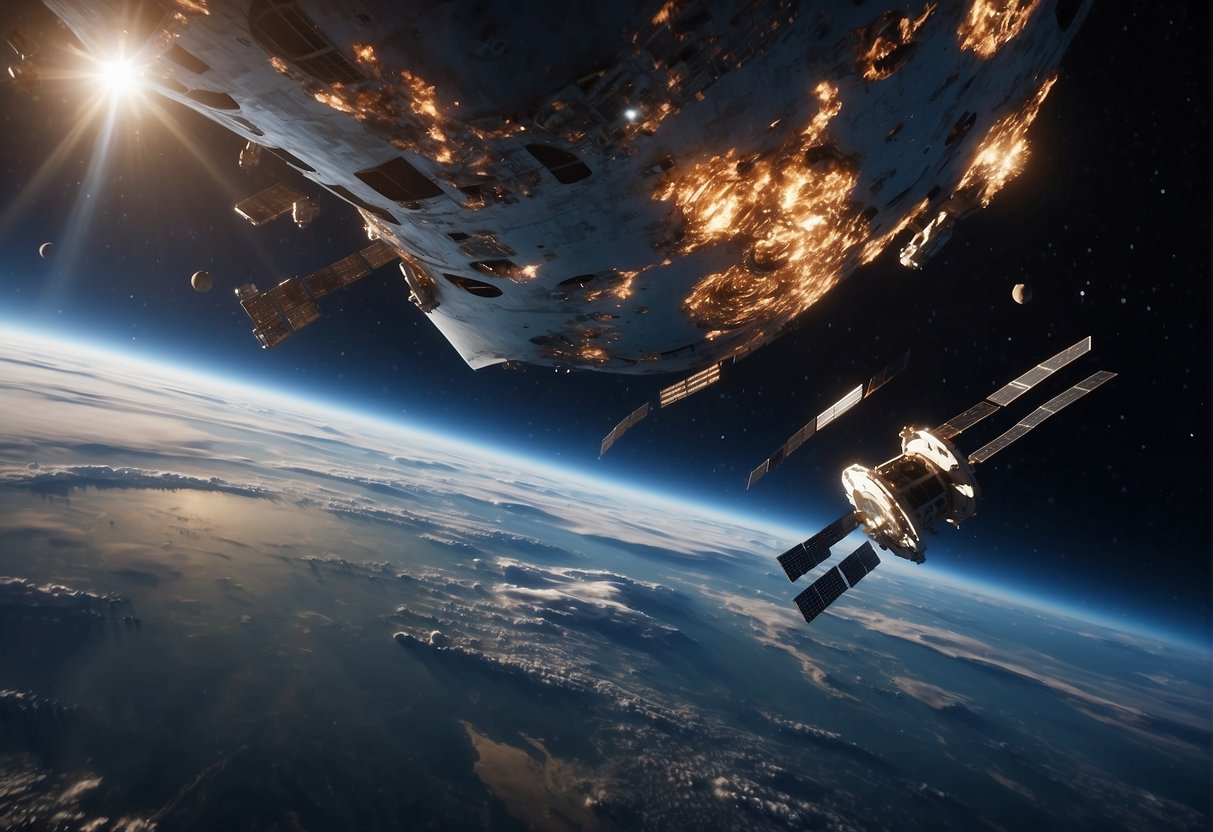
The various layers of Earth’s orbit are essential for different types of space operations, with specific altitudes and density conditions determining their suitability for different purposes.
Low Earth Orbit and Its Importance
Low Earth Orbit (LEO) is the region of space within 2,000 kilometers above the planet’s surface. It’s the busiest area of Earth’s orbit, characterized by its high density of satellites. Notably, LEO is critical for many modern conveniences such as satellite television, weather forecasting, and Earth observation, allowing for real-time communication and data collection.
- Altitude : Ranges from about 160 kilometers to 2,000 kilometers above Earth’s surface.
- Density : Higher density of satellites compared to higher orbits.
- Importance : Ideal for many types of Earth-observing satellites, the International Space Station, and is the primary destination for most human spaceflights.
Geostationary Orbit and Its Vulnerabilities
Geostationary Orbit (GEO) lies approximately 35,786 kilometers above Earth’s equator. Satellites here maintain a constant position relative to the Earth’s surface, making it a prime location for communications and weather satellites. However, the GEO belt is becoming increasingly populated, leading to concerns over space debris and the potential for collisions, which could damage vital infrastructure.
- Altitude : Approximately 35,786 kilometers.
- Density : Lower satellite density than LEO, but growing concerns over space debris.
- Vulnerabilities : Risk of space debris causing collisions; the geostationary ring has limited space, necessitating careful management to prevent overcrowding.
Impact of Space Debris on Earth and Spacecraft
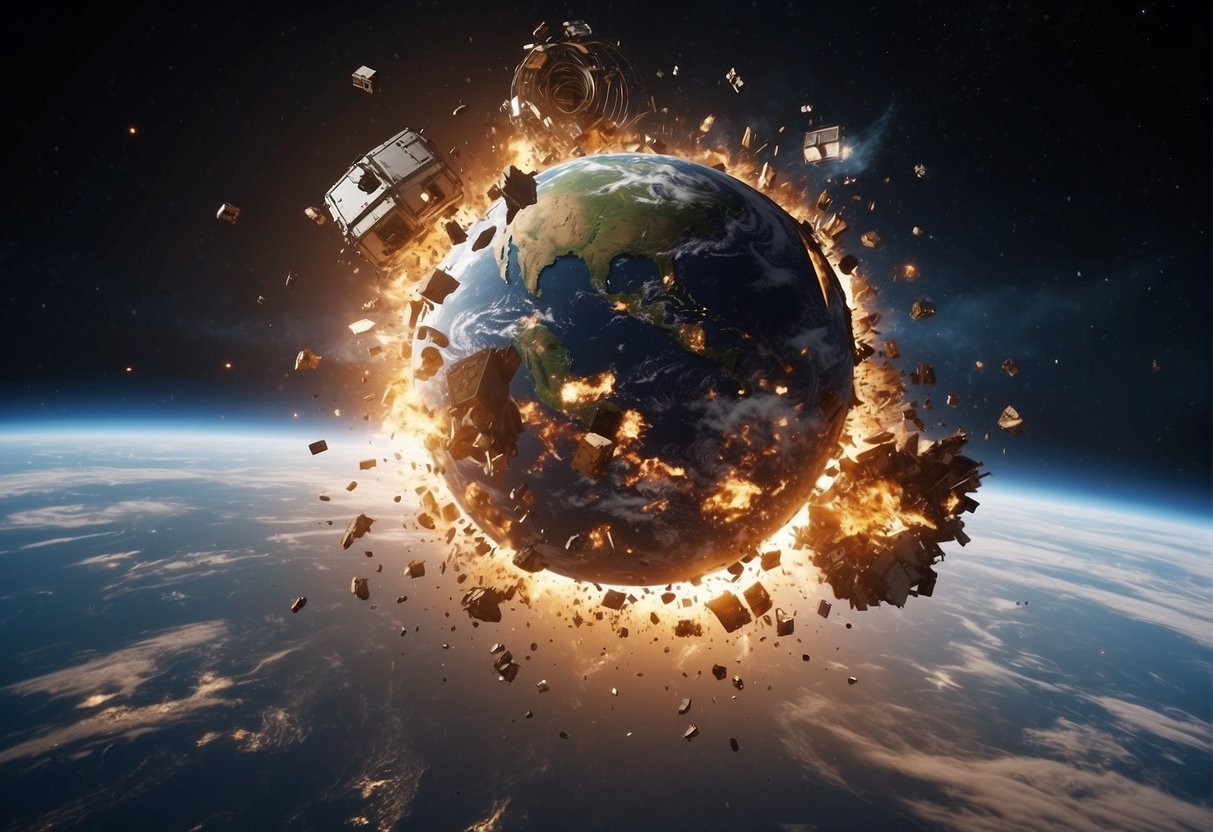
Space debris presents significant risks to satellites, space missions, and safety upon reentry to Earth’s atmosphere. The increasing amount of debris can result in damage and has potential long-term implications for spacecraft operation in Earth’s orbit.
Consequences of Space Debris for Satellites
Satellites are integral to modern communication, navigation, and observation. However, they operate in an environment increasingly populated by space debris . A collision with even a small piece of debris can cause critical damage to a satellite’s operational capabilities, leading to a loss of services such as GPS, weather forecasting, and telecommunications. Satellites must often perform collision avoidance maneuvers to mitigate these risks, which can reduce their operational lifespan.
Hazards Posed to Space Missions and Astronauts
For astronauts aboard the International Space Station (ISS) and other future space missions, space debris poses a dire hazard. Travelling at speeds over 17,500 mph, even a small fragment can penetrate the protective shielding of spacecraft and habitats. This risk necessitates rigorous monitoring and protective measures to ensure the safety of astronauts and the success of missions.
Reentry Dangers and Protection Measures
Space debris that falls back to Earth, undergoing reentry, can endure extreme heat and mechanical stress. Most debris burns up in the atmosphere, but larger objects may reach the surface, potentially endangering populated areas. Agencies actively track and predict reentry paths, and spacecraft designed for return to Earth are equipped with heat shields to withstand the intense heat generated during reentry, ensuring both vehicle integrity and ground safety.
Mitigation and Management Strategies
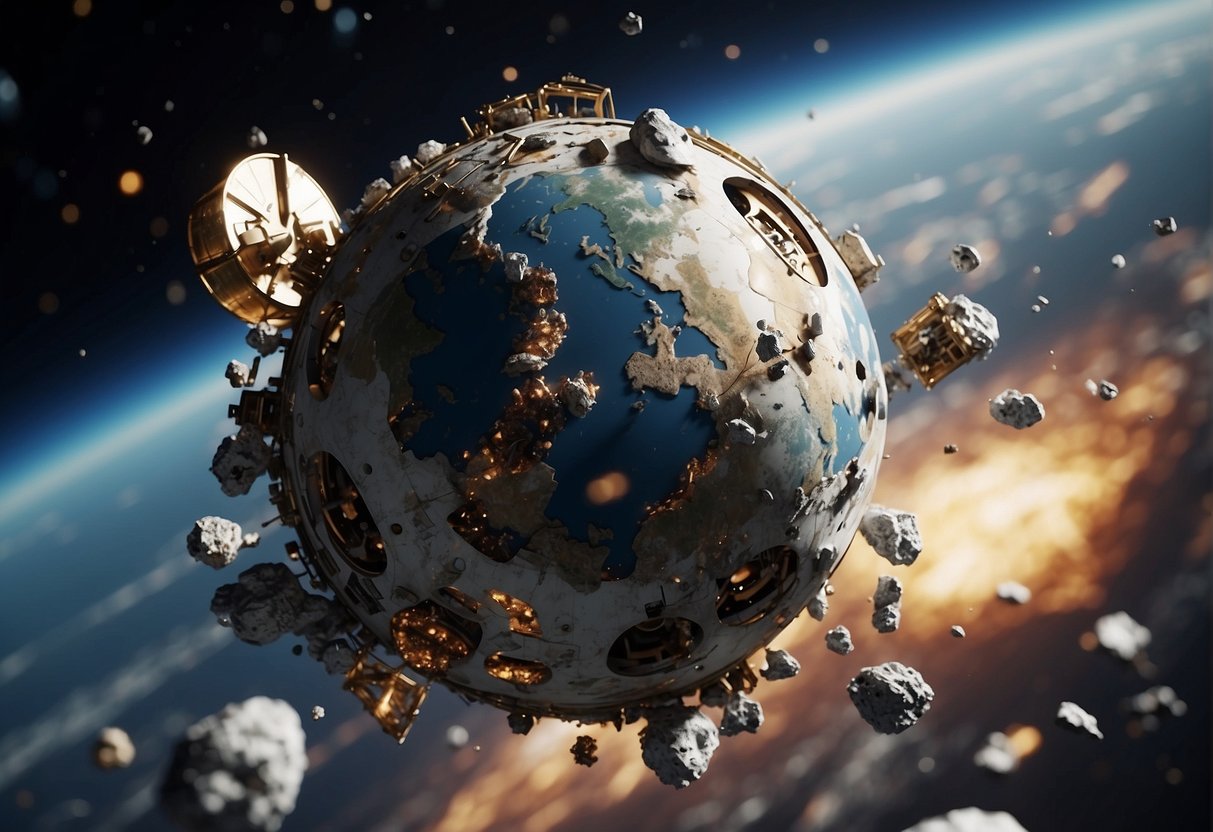
Strategies to deal with space debris encompass technological, regulatory, and collaborative efforts to protect the long-term usability of Earth’s orbit.
Debris Avoidance and Protection Techniques
Space agencies routinely execute debris avoidance maneuvers to safeguard operational spacecraft from potential collisions. These maneuvers, carefully planned based on predictions of debris paths, involve slight adjustments in the spacecraft’s orbit. In addition to active avoidance, spacecraft are designed with shielding to withstand impacts from smaller debris, ensuring functionality despite the harsh space environment.
Legal Frameworks and International Cooperation
The United Nations Office for Outer Space Affairs (UNOOSA) oversees international efforts to address space debris, fostering cooperation among nations. Through the United Nations , guidelines and best practices have been established, encouraging member states to minimize debris generation. This includes the design of spacecraft and launch vehicles to avoid inadvertent debris release and the passivation of spacecraft at the end of their service life to prevent explosions.
Innovative Solutions for Debris Removal
Removing existing debris is a challenge that has prompted innovative solutions. Proposals for cleanup include various technologies, such as nets, harpoons, and lasers to either capture or alter the trajectory of debris. Some space agencies and private entities are also exploring spacecraft that can rendezvous with and de-orbit large debris items, effectively reducing the possibility of future collisions and the resultant debris proliferation.
Cultural Impact and Public Awareness
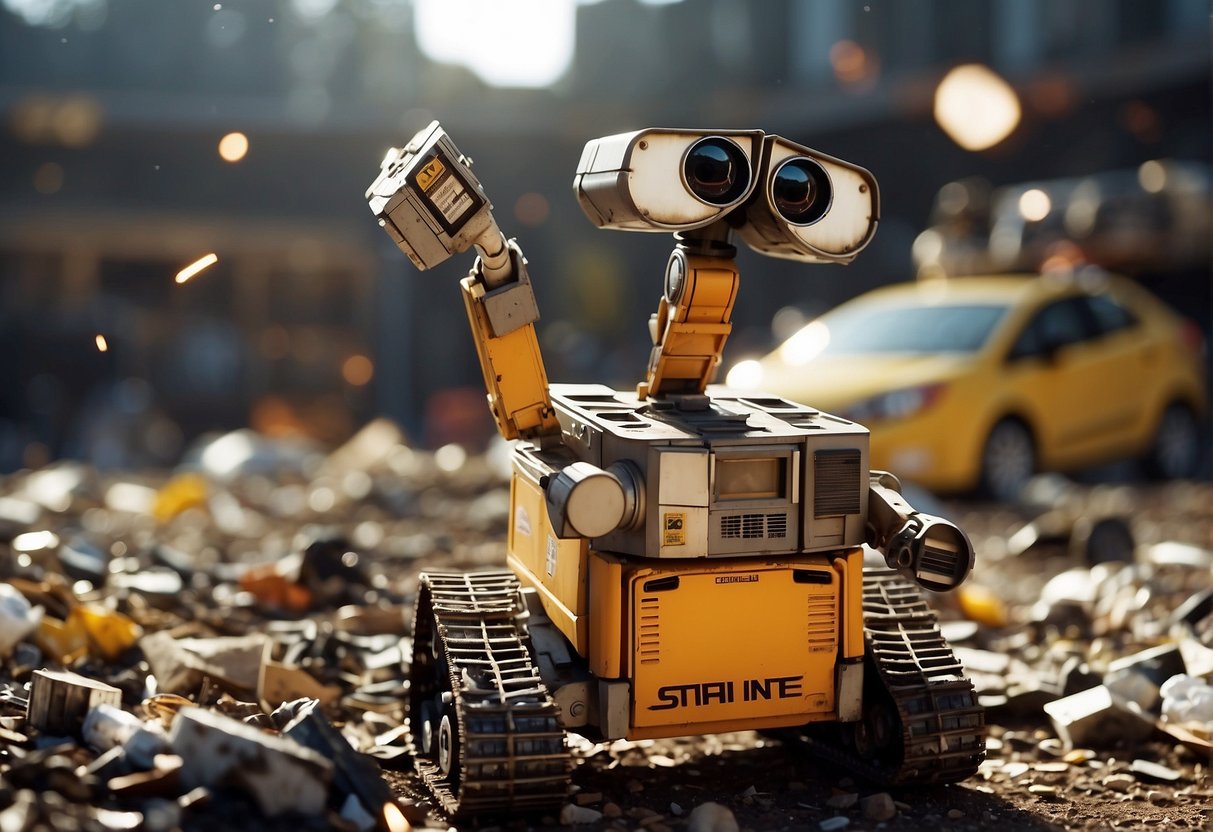
The 2008 animated film WALL-E, produced by PIXAR, stands out as a significant cultural touchstone, having sparked widespread conversation about environmental and space sustainability. Its characters, including the titular WALL-E and his companion EVE, bring to life the urgency of addressing space debris, a reality that parallels our vision for the future of Earth’s orbit.
The Significance of WALL-E and Popular Media
WALL-E struck a chord with audiences by personifying the consequences of environmental neglect in the setting of space. The film’s portrayal of an Earth littered with waste and a lone robot’s journey to clean up has elevated public consciousness about the care needed for our planet and its surroundings. Similarly, WALL-E’s encounters with space debris highlight a very real problem that affects satellites and vehicles that humans send into orbit. PIXAR’s storytelling prowess exemplified by this film conveys complex issues through a simple, yet profound narrative that resonates with people of all ages, encouraging them to think critically about our impact on the environment both on Earth and in space.
Educating People on Space Sustainability
Through the lens of EVE and WALL-E’s explorations, audiences are invited to consider the long-term implications of orbital debris on space operations and safety. The fascination with these characters extends beyond entertainment, sparking an interest in real-world space sustainability efforts. Educational initiatives, often inspired by such media representations, play a crucial role in informing the public about the challenges of space debris management and the importance of responsible conduct in space activities. They empower global citizens with knowledge and inspire the next generation of scientists and engineers to continue advancing the vision for a sustainable space environment, bridging the gap between cinematic reality and human responsibility.
The Future Outlook of Earth’s Orbit

The space around our planet, specifically low Earth orbit, faces growing concerns over congestion and debris, which are becoming pertinent issues for agencies like NASA. The following subsections explore the dynamics of space debris, monitoring advancements, and preventative strategies in detail.
Predictions for Low Earth Orbit Dynamics
Low Earth Orbit (LEO) is becoming increasingly trafficked, with satellites and space debris creating a congested environment. NASA, among other space agencies, is collecting data that suggests future LEO scenarios will require enhanced collision avoidance measures. Predictive models are crucial for maintaining safe satellite operations, and the increasing number of miniaturized satellites known as CubeSats poses new challenges in tracking and management.
Advancements in Space Debris Monitoring
Technological evolution has led to significant advancements in space debris monitoring . The implementation of more sophisticated data systems has improved the tracking of objects in low and elliptical orbits. New sensors and algorithms have emerged, providing a clearer vision of the debris landscape. The continuous upgrade of these systems is critical to maintaining the integrity of space assets and ensuring the safety of future space operations.
Preventing Future Accumulation of Debris
To prevent future space debris accumulation, agencies and organizations propose a two-pronged approach:
- Mitigate debris production by following guidelines like the 25-year de-orbit policy and implementing new spacecraft designs that minimize the potential for in-orbit breakups.
- Remove existing debris through proposed missions to capture and de-orbit large defunct objects.
Together, these strategies aim to safeguard the orbital neighborhoods for a sustainable future in space exploration and travel.
Frequently Asked Questions
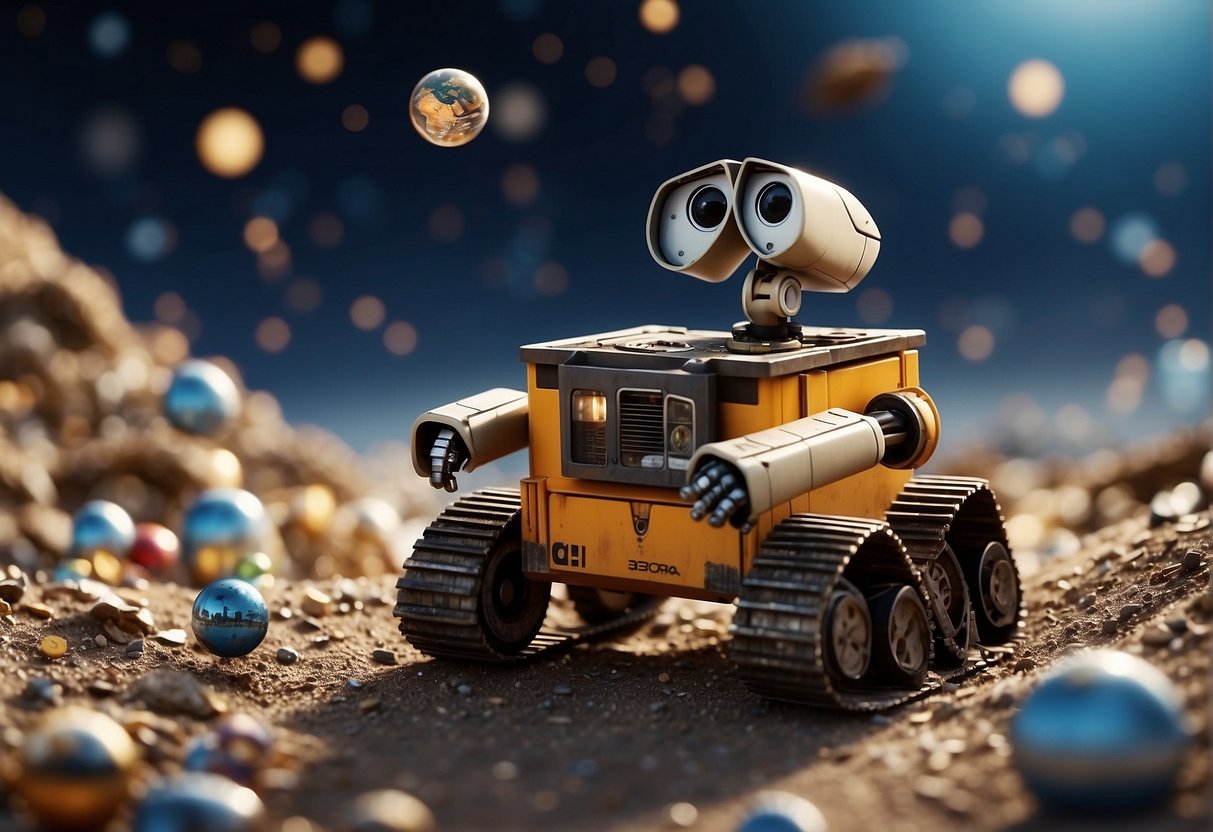
In this section, the most common inquiries regarding ‘WALL-E,’ space debris, and orbital sustainability are addressed.
How can the depiction of space debris in ‘WALL-E’ influence our understanding of environmental issues?
The animated film ‘WALL-E’ serves as a poignant portrayal of space debris’ effects, emphasizing the need for environmental stewardship not only on Earth but also in outer space. This depiction raises awareness about the concept of Kessler Syndrome , a potential scenario where space around Earth could become too littered with debris to safely navigate, complicating future space endeavors.
What measures are being implemented to control the quantity of space debris?
There are ongoing initiatives to mitigate space debris, such as those aimed at improving satellite design for end-of-life deorbiting, and adherence to international guidelines that require the removal of satellites from valuable orbital regions post-mission. These measures are critical to managing debris and ensuring the long-term usability of Earth’s orbits.
What are the potential consequences for satellite operations due to the increase in orbital debris?
Increasing amounts of orbital debris pose significant risks to satellite operations , as collisions with even small particles can cause substantial damage due to high-velocity impacts. This growing threat necessitates improved tracking of space debris and the development of more robust satellite shields.
How do changes in Earth’s appearance from space, such as the browning of land, inform our study of environmental conditions?
Observations from space, such as the browning of land, can provide valuable data for analyzing changes in Earth’s environmental conditions. These visuals help researchers monitor phenomena like deforestation, desertification, and the health of vegetation on a global scale, deepening our understanding of Earth’s ecosystems.
What technological advancements are being made to mitigate the risks posed by space junk to future space missions?
To mitigate the risks of space junk, new technologies are being developed including robotic arms to remove debris , harpoons, and nets for capturing and maneuvering objects out of critical orbits. Such innovations are essential for ensuring the safety of astronauts and the integrity of satellites.
In what ways are international space agencies collaborating to address the challenges of orbital debris?
International space agencies are collaborating by sharing data on space debris, standardizing satellite disposal practices, and conducting joint operations for debris monitoring and removal. This global cooperation is paramount to effectively managing the risks associated with orbital debris and securing a sustainable environment in space for future generations.
Leave a Reply Cancel reply
Your email address will not be published. Required fields are marked *
Ad Astra: Exploring the Psychological Impact of Space Travel and Isolation
Contact: seti’s pioneering quest for alien life, the psychological effects of space travel on tourists: insights into the astronaut experience, the evolution of space tourism: how cosmic travel became attainable, the role of private companies in advancing space exploration initiatives, spaceports around the world: unveiling global launch sites.
- Share full article
Advertisement
Supported by
Movie Review | ‘Wall-E’
In a World Left Silent, One Heart Beeps

By A.O. Scott
- June 27, 2008
The first 40 minutes or so of “Wall-E” in which barely any dialogue is spoken, and almost no human figures appear on screen is a cinematic poem of such wit and beauty that its darker implications may take a while to sink in. The scene is an intricately rendered city, bristling with skyscrapers but bereft of any inhabitants apart from a battered, industrious robot and his loyal cockroach sidekick. Hazy, dust-filtered sunlight illuminates a landscape of eerie, post-apocalyptic silence. This is a world without people, you might say without animation, though it teems with evidence of past life.
We’ve grown accustomed to expecting surprises from Pixar, but “Wall-E” surely breaks new ground. It gives us a G-rated, computer-generated cartoon vision of our own potential extinction. It’s not the only film lately to engage this somber theme. As the earth heats up, the vanishing of humanity has become something of a hot topic, a preoccupation shared by directors like Steven Spielberg (“A.I.”), Francis Lawrence (“I Am Legend”), M. Night Shyamalan (“The Happening”) and Werner Herzog. In his recent documentary “Encounters at the End of the World” Mr. Herzog muses that “the human presence on this planet is not really sustainable,” a sentiment that is voiced, almost verbatim, in the second half of “Wall-E.” When the whimsical techies at Pixar and a moody German auteur are sending out the same message, it may be time to pay attention.
Not that “Wall-E” is all gloom and doom. It is, undoubtedly, an earnest (though far from simplistic) ecological parable, but it is also a disarmingly sweet and simple love story, Chaplinesque in its emotional purity. On another level entirely it’s a bit of a sci-fi geek-fest, alluding to everything from “2001” and the “Alien” pictures (via a Sigourney Weaver voice cameo) to “Wallace and Gromit: A Grand Day Out.” But the movie it refers to most insistently and overtly is, of all things, “Hello, Dolly!,” a worn videotape that serves as the title character’s instruction manual in matters of choreography and romance.
That old, half-forgotten musical, with its Jerry Herman lyrics crooned by, among others, Louis Armstrong, is also among Wall-E’s mementos of, well, us. He is a dented little workhorse who, having outlasted his planned obsolescence, spends his days in the Sisyphean, mechanical labor of gathering and compacting garbage. His name is an acronym for Waste Allocation Load Lifter- Earth Class. But not everything he finds is trash to Wall-E. In the rusty metal hulk where he and the cockroach take shelter from dust storms, he keeps a carefully sorted collection of treasures, including Zippo lighters, nuts and bolts, and a Rubik’s Cube.
Wall-E’s tender regard for the material artifacts of a lost civilization is understandable. After all, he too is a product of human ingenuity. And the genius of “Wall-E,” which was directed by the Pixar mainstay Andrew Stanton, who wrote the screenplay with Jim Reardon, lies in its notion that creativity and self-destruction are sides of the same coin. The human species was driven off its home planet Wall-E eventually learns that we did not die out by an economy consecrated to the manufacture and consumption of ever more stuff. But some of that stuff turned out to be useful, interesting, and precious. And some of it may even possess something like a soul.
Observing Wall-E’s surroundings, the audience gleans that, in some bygone time, a conglomerate called BnL (for “Buy N Large”) filled the earth with megastores and tons of garbage. Eventually the corporation loaded its valued customers onto a space station (captained by Jeff Garlin), where they have evolved into fat, lazy leisure addicts serviced by a new generation of specialized machines. One of these, a research probe named Eve (all of the robot names are acronyms as well as indicators of theoretical gender) drops to Earth and wins Wall-E’s heart.
Their courtship follows some familiar patterns. If “Wall-E” were a romantic comedy, it would be about a humble garbageman who falls for a supermodel who also happens to be a top scientist with a knack for marksmanship. (I’m pretty sure I reviewed that a while back, but the title escapes me.) Wall-E is a boxy machine of the old school, with creaks and clanks and visible rivets, his surface pocked with dents and patches of rust. He is steadfast, but not always clever or cool. Eve, shaped like an elongated egg, is as cool as the next iPhone and whisper quiet, unless she’s excited, in which case she has a tendency to blow things up. She and Wall-E communicate in chirps and beeps that occasionally coalesce into words. Somehow their expressions of desire, irritation, indifference, devotion and anxiety, all arranged in delicate counterpoint achieve an otherworldly eloquence.
That they are endowed with such rich humanity is as much a Pixar trademark as the painstakingly modeled surfaces or the classical virtual camerawork and editing. The technical resourcefulness that allows “Wall-E” to leap effortlessly from the derelict Earth to the pristine atmosphere of the space station is matched by the rigorous integrity the filmmakers bring to the characters and the themes.
Rather than turn a tale of environmental cataclysm into a scolding, self-satisfied lecture, Mr. Stanton shows his awareness of the contradictions inherent in using the medium of popular cinema to advance a critique of corporate consumer culture. The residents of the space station, accustomed to being tended by industrious robots, have grown to resemble giant babies, with soft faces, rounded torsos and stubby, weak limbs. Consumer capitalism, anticipating every possible need and swaddling its subjects in convenience, is an infantilizing force. But as they cruise around on reclining chairs, eyes fixed on video screens, taking in calories from straws sticking out of giant cups, these overgrown space babies also look like moviegoers at a multiplex.
They’re us, in other words. And like us, they’re not all bad. The paradox at the heart of “Wall-E” is that the drive to invent new things and improve the old ones to buy and sell and make and collect creates the potential for disaster and also the possible path away from it. Or, put another way, some of the same impulses that fill the world of “Wall-E” our world with junk can also fill it with art.
Opens on Friday nationwide.
Directed by Andrew Stanton; written by Mr. Stanton and Jim Reardon, based on a story by Mr. Stanton and Pete Docter; director of photography, camera, Jeremy Lasky; director of photography, lighting, Danielle Feinberg; edited by Stephen Schaffer; music by Thomas Newman; production designer, Ralph Eggleston; produced by Jim Morris; released by Walt Disney Pictures and Pixar Animation Studios. Running time: 1 hour 37 minutes. This film is rated G.
WITH THE VOICES OF: Ben Burtt (Wall-E/M-O), Elissa Knight (Eve), Jeff Garlin (Captain), Fred Willard (Shelby Forthright/BnL C.E.O.), Macintalk (Auto), John Ratzenberger (John), Kathy Najimy (Mary) and Sigourney Weaver (Ship’s Computer).
Review: Out of this world: Pixar’s ‘Wall-E’ is sweetly wonderful and full of wonder
- Show more sharing options
- Copy Link URL Copied!
IF Pixar Animation Studios has an enviable record of consistent success -- and with a worldwide box-office gross of $4.3 billion from its eight films, it certainly does -- it’s because the company has an uncanny gift for pushing things further without pushing too far. Pixar’s adventurous new film, the one-of-a-kind “Wall-E,” shows how it’s done.
Daring and traditional, groundbreaking and familiar, apocalyptic and sentimental, “Wall-E” gains strength from embracing contradictions that would destroy other films. Directed by Pixar stalwart Andrew Stanton, who co-wrote and directed the Oscar-winning “Finding Nemo,” “Wall-E” is the latest Pixar film to manage what’s become next door to impossible for anyone else: appealing to the broadest possible audience without insulting anyone’s intelligence.
Part robot romance between two mismatched mechanized marvels, part science fiction saga with deliberate echoes of Stanley Kubrick’s “2001,” this may be the first animated feature to pivot around novelist E.M. Forster’s famous imperative, “Only connect.”
The origins of “Wall-E’s” story, as related in the film’s teaser trailer, go back to 1994, when Pixar honchos held a now-celebrated lunch to spitball story ideas, which became “A Bug’s Life,” “Monsters, Inc.” and “Finding Nemo.” “Wall-E” is the last of that group to get made, in part because elements of it are so unconventional.
For one thing, the film’s exceptional first half hour or so lives and breathes on screen with just about zero human dialogue. But with the storied Ben Burtt, who did the job on “Star Wars,” creating all kinds of noise as the film’s sound and character voice designer, as well as music by Thomas Newman, you won’t miss those words at all.
You also won’t miss them because the world of “Wall-E,” created by production designer Ralph Eggleston and his team, with the advice of high-powered cinematography consultants Roger Deakins and Dennis Murren, is so remarkable. The time is 800 years in the future and the setting is our own Earth, but it’s not an Earth anyone would want to recognize.
Not to put too fine a point on it, our planet is a disaster, a bleak and disheartening ruin where every available surface is covered by towering skyscrapers of trash. It got so bad that Buy n’ Large, the conglomerate that has somehow taken charge of the planet, leaned on the entire human population to leave with a “space is the final fun-tier” campaign that featured slogans such as, “Too much garbage in your face? There’s plenty of space out in space.”
Though not likely the main reason the film was made, “Wall-E” can’t help but send out a powerful and even frightening environmental message. Though G-rated, its dystopian vision (shot by Jeremy Lasky and Danielle Feinberg) of what the perils of consumer excess have in store for the planet is unnerving without trying too hard, bringing to mind the old truism that Walt Disney and his company (Pixar’s parent) have scared more people than Alfred Hitchcock.
One reason “Wall-E” is as audience-friendly as it finally is is the presence of the endearing title character, whose name is an acronym for Waste Allocation Load Lifter -- Earth Class. What that means in practical terms is that Wall-E is a robotic trash compactor who has been quietly doing his job attacking Earth’s endless mountains of refuse for 700 years. Unless you count his pal, a nameless but convivial roach, Wall-E is the only thing still moving on the entire planet.
Given all that, it’s to be expected that Wall-E, whose large binocular eyes and narrow neck turn him into a squat, mechanical E.T., has developed a few personal eccentricities over the years. For one thing, he’s quite the collector, squirreling away everything from old Rubrik’s Cubes to light bulbs to an actual living plant.
More than that, this set-in-his-ways old bachelor robot has developed a fixation with the movies. Not really the movies, but one movie in particular, the only video he’s got. It is, of all things, “Hello, Dolly!” and screenwriters Stanton and Jim Reardon had the shrewd idea of opening the film with the jaunty lyric, “Out there is a world outside of Yonkers,” as the camera somberly pans both the universe and the ruins of Earth.
What really entrances “Wall-E” about “Hello, Dolly!” is the spectacle of people expressing emotion and connection by holding hands. Not a word is spoken, but we understand that this lonely Robinson Crusoe, like so many movie creatures before him, would like nothing better than to hold hands with another entity. And then it happens.
A spaceship lands in Wall-E’s neighborhood and leaves behind a sleek white oval-shaped probe-droid with bewitching blue eyes named Eve (for Extra-terrestrial Vegetation Evaluator), sent to Earth to find signs of life. High tech and armed with a laser weapon that pulverizes anything in sight, Eve fascinates Wall-E and he nervously scuttles around after her, fearful but intoxicated by her every move.
Though this wordless section of the film, punctuated only by Wall-E’s frequent and idiosyncratic croak of “Eve,” is in some ways merely a set up for the second half, it is easily the most memorable and distinctive part of the film. This segment, a kind of song without words, is a world-creating work of pure imagination that has been thought out to the nth degree.
“Wall-E’s” second half involves the dauntingly overweight humans who have sent the probe (and who are shrewdly not pictured in any publicity material.) They’ve lived for centuries on a cruise liner-type spaceship called the Axiom run by a barely functional captain ( Jeff Garlin) in thrall to a Hal-type eminence called Auto, voiced, in a nod to “Alien,” by Sigourney Weaver.
This part of the story gets increasingly familiar and sometimes borders on the predictably sentimental. But along with these inevitable elements of calculation, “Wall-E” never loses its sense of wonder: wonder at life, wonder at the universe, and even wonder at the power of computer animation to create worlds unlike any we’ve seen before. How often do we get to say that in these dispiriting times?
“Wall-E.” MPAA rating: G. Running time: 1 hour, 37 minutes. In general release.
More to Read

Emotionally complex and visually distinctive styles mark the animated shorts contenders
Feb. 19, 2024
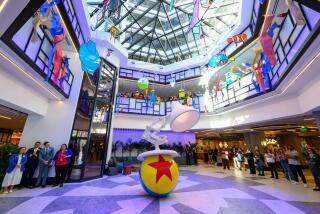
At Disneyland’s Pixar Place Hotel, hang out with Bing Bong and fall in love with animation
Feb. 2, 2024

How IHeartComix’s super creativity took the event company from the L.A. music scene to Marvel
Jan. 19, 2024
Only good movies
Get the Indie Focus newsletter, Mark Olsen's weekly guide to the world of cinema.
You may occasionally receive promotional content from the Los Angeles Times.

Kenneth Turan is the former film critic for the Los Angeles Times.
More From the Los Angeles Times

Entertainment & Arts
What’s the deal with Jerry Seinfeld? His Duke University address sparks student walkout
May 13, 2024

Roger Corman, independent cinema pioneer and king of B movies, dead at 98
May 11, 2024

Company Town
Shari Redstone was poised to make Paramount a Hollywood comeback story. What happened?

Review: ‘Catching Fire: The Story of Anita Pallenberg’ supplies belated respect for a rock muse
May 10, 2024

Entertainment
‘Wall-E’ Is The Best Disney Movie Warning Us About Billionaires And Space Travel
Elon Musk makes much more sense now
When Wall-E came out 10 years ago, it was met with some of the best reviews in Pixar history. The Los Angeles Times called it “daring and traditional, groundbreaking and familiar, apocalyptic and sentimental.” Rolling Stone referred to it as an “enduring classic,” while Time Out described it as “wonderfully imagined” and “lovingly presented.” And I agree: The film is an example of the Disney animation studio at its most creative. But, even if everyone could agree that the film was visually stunning, not everyone loved the eco-conscious message it doled out (cough, right-wing conservatives, cough).
The film follows a robot, the eponymous Wall-E, who has been stranded on Earth, eternally cleaning up all the garbage left behind by the humans who had to abandon their planet because they'd ruined it. The year is 2700, every remaining human lives in space, and they travel, sleep, and exist on hoverboards and are told what to do by a conglomerate called Buy ’N’ Large. And while the movie was promoted as being a love story between two robots, the narrative also offers an unflinching look at the downside of consumerism, the risks of apathy toward our environment, and humanity's inclination toward sloth.
And yet, Wall-E wasn’t intended as a political statement, according to its director Andrew Stanton. In fact, it was described as a “parable for environmentalists” so often that he felt the need to disavow the label. “I don’t have a political bent or ecological message to push,” Stanton said in 2008 . “I don't mind that it supports that kind of view—it’s certainly a good-citizen kind of way to be—but everything I wanted to do was based on the film’s love story, the last robot on Earth, the sentence that we first came up with in 1994.”
This isn't hard to believe, though, not least because it would take an overwhelming level of disingenuousness for Pixar/Disney to promote an anti-consumerist message when they would proceed to capitalize like crazy off Wall-E merchandise. As writer Shannen W. Coffin wrote (sarcastically) about the movie: It’s “nice to see that Disney and Pixar can make mega-millions off of telling us just how greedy, lazy, and destructive we all are.” And, yes, the messenger is ironic, but the message is still an important one: We as a society can be greedy and lazy and destructive. We’re the biggest contributors to climate change , we’re victims of consumerism, and we rely on technology more than we should.
There is, though, another criticism of the film , which is that it's prejudiced against fat people, and it is true that all the humans we see in the film are overweight, and that fact is implicitly connected to their other traits of laziness and apathy. It's an unfortunate visual shorthand for the very real problems that do face people who live their lives in front of screens, and it's not great, but it does speak to real problems that can result in technology-caused stagnation.
But what Wall-E really serves to remind us of is that the scariest depictions of dystopian societies aren’t necessarily the ones that paint the future as being full of handmaids or kids forced to fight to the death for the entertainment of the elite. Sometimes the scariest versions of our futures are the ones that we already see glimpses of in our present reality. Though Wall-E was released 10 years ago, our society’s need to consume and corporations' relentless drive for profit have only increased. Is it any coincidence that so many billionaires, aware of how they've contributed to our planet's decline, are focused on space travel? Now is the time to rewatch Wall-E and appreciate the love story, but pay close attention to the message about greed and apathy, and figure out a way to prevent this future from becoming our present.

Best science fiction films about space, according to an astrophysicist
By Erika Nesvold
I’m an astronomer who writes about the ethics of human space settlement, most recently in Off-Earth: Ethical questions and quandaries for living in outer space . My road to this particular career was paved with science fiction, a genre filled with murky ethical questions in addition to all the tentacled aliens and eye-catching explosions. For this list, I have focused on films about space exploration from the perspective of our society, or one very similar to it, leaving aside movies set in utopian federations or galaxies far, far away. I have also avoided stories in which space comes to us, which disqualifies the likes of the otherwise fantastic Arrival , E.T. and Close Encounters of the Third Kind . Given these constraints, here are my choices for the 10 best space movies, so far…
#1: Hidden Figures (2016)
Based on the excellent (and more true-to-life) non-fiction book by Margot Lee Shetterly, Hidden Figures focuses on the contributions of three brilliant Black women in the early US space programme of the 1960s. The film illustrates space exploration as a team sport, as we see John Glenn ride to space (and return safely to Earth) on the shoulders of engineers, mathematicians and programmers. But it also demonstrates that space exploration isn’t automatically free of the ills of the society it exists within; barriers to participation by marginalised space workers have existed in the space programme since the beginning.
#2: Apollo 13 (1995)
Speaking of space as a team sport, Apollo 13 dramatises the events of the ill-fated mission to the moon and the extraordinary efforts to bring its three astronauts home safely. The script emphasises the dedication and ingenuity of the ground crew as well as the perseverance of the astronauts, and director Ron Howard’s decision to film realistic weightless scenes using an aircraft performing zero-g manoeuvres, rather than 1990s CGI, leaves the movie as visually engrossing today as it was nearly 30 years ago.
#3: Gravity (2013)
Stunningly gorgeous and unbelievably stressful, Gravity shows us a fictional accident in space where our protagonist must manage her own rescue and survival. No shoulders to stand on, here: it’s a woman-against-nature story where nature is a cold, airless void. With one egregious exception, the physics is incredibly realistic, making it a brutal and unforgiving antagonist. It is the only film on this list that I couldn’t bear to rewatch while writing this piece; the edge of my seat couldn’t take it.
#4: The Martian (2015)
The botanist hero of The Martian - one of several plant-obsessed protagonists on this list, alongside characters in Silent Running and WALL-E - keeps himself alive alone on Mars using potatoes, fertiliser and a positive attitude. The story is a pleasant mix of Gravity’s “alone in the wilderness” adventure and Apollo 13 ’s “everyone rallies to come up with a clever solution to bring home an astronaut” charm, while the reasonably realistic Martian survival techniques portrayed provide a glimpse at how humans might one day build a more intentional home away from Earth.
#5: Moon (2009)
Many space movies throw in a few extra sci-fi concepts to spice up all the dry orbital mechanics. In the case of Moon , a lone miner wrapping up a lunar tour-of-duty uncovers a plot by his employer to staff the outpost with clones to avoid the cost of shipping replacements from Earth. Space mining and human cloning are still on the drawing board in real life, but unscrupulous companies cutting costs by exploiting workers? All too chillingly real.
#6: Sunshine (2007)
A rarity among space movies, Sunshine turns its gaze away from the shadowy depths of the empty void towards the fiery monster at the centre of our solar system: our life-giving yet unimaginably powerful star. It is a story of sacrifice, beauty, spirituality, the love that scientists have for the natural world and the dangers of twisting that love into obsession. It is also a story about flying a giant bomb into the dying sun to save the world, so there is something here for everyone.
#7: Silent Running (1972)
In this sparse, melancholy story, humans use space to preserve the last of Earth’s forests after the plants and wildlife on our planet are destroyed by disaster or negligence. A difficult film (the only likeable characters are the proto-R2-D2 robots), Silent Running is a cautionary tale portraying a commercialised space future where Earth is comfortable for humans but entirely technologised, and space is merely used as a sanctuary - and then dumping ground - for the biosphere humans no longer feel they need.
#8: WALL-E (2008)
Like Silent Running , this animated film asks whether space could be used for environmental protection - in this case, by relocating humanity to an air-conditioned spaceliner while robots clean up the trash they have left behind. The humans are more likeable in this one - in their 700 years in space, they have simply forgotten the value and beauty of non-human life. Fortunately, they have adorable robot friends to remind them to look up from their screens and learn how to take care of Earth again.
#9: Contact (1997)
A radio astronomer discovers a message of extraterrestrial origin that turns out to be a set of blueprints for a single-occupancy spacecraft. Contact is a classic for many reasons: its exploration of scientific versus religious faith, its sense of wonder and awe at the beauty of the universe (immortalised in the oft-quoted line, “They should have sent a poet”) and its flawed but determined main character, scientist Ellie Arroway, who inspired the career choice of a significant number of today’s astronomers , including myself.
#10: 2001: A Space Odyssey (1968)
It is difficult to overstate the influence of 2001: A Space Odyssey on the decades of space movies that followed it. Of the films in this list alone, Sunshine and WALL-E included visual and musical references to it, respectively, and the real-life Apollo 13’s command module, Odyssey , was named after the movie. Film history aside, 2001 would still make this list for its fascinating presentation of our future in space as both a mundane workplace filled with videoconferencing and boardrooms, and the home of mind-bending new phenomena that could change our species forever.

NASA's Mars Cubesats 'Wall-E' and 'Eva' Will Be First at Another Planet
When NASA's InSight Mars lander launches for the Red Planet on Saturday (May 5), it won't be traveling alone. Two small spacecraft, nicknamed "Wall-E" and "Eva," are hitching a ride as the first cubesats to visit another planet.
The twin cubesats are tiny spacecraft of a type whose design became popular in the 2000s as miniaturized computers increased the craft's capabilities. While they don't have all the backup systems and capabilities of bigger spacecraft, cubesats are useful for applications such as communications, tracking shipping or performing Earth observation. Until now, all of them stayed close to our home planet.
So, Mars InSight's twin cubesats, officially called Mars Cube One (MarCO), will be pioneering Red Planet spacecraft. They will fly on the same Atlas V rocket that will heft InSight into space from Vandenberg Air Force Base in California during the first interplanetary launch from the West Coast. [ Where to Watch InSight's Mars Launch from the California's Coast ]
"These are our scouts," said Andy Klesh of NASA's Jet Propulsion Laboratory (JPL), who is also MarCO's chief engineer, in a NASA statement . "Cubesats haven't had to survive the intense radiation of a trip to deep space before or use propulsion to point their way towards Mars. We hope to blaze that trail."
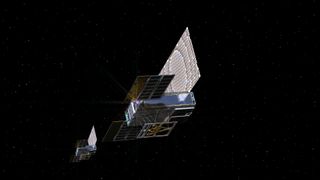
The MarCOs will follow InSight all the way to Mars , then (as long as the craft make it safely) the cubesats will send data about InSight back to Earth as the spacecraft lands. Their fanciful "Wall-E" and "Eva" names come from the main characters in a 2008 Pixar film about space robots, called "Wall-E."
"Both MarCOs use a compressed gas commonly found in fire extinguishers to push themselves through space, the same way Wall-E did," JPL said.
"The MarCOs won't produce any science of their own and aren't required for InSight to send its data back home. The lander will rely on NASA's Mars orbiters for that, in addition to communicating directly with antennas on Earth," JPL added. "But the twins will be a crucial first test of cubesat technology beyond Earth orbit, demonstrating how they could be used to further explore the solar system."
Get the Space.com Newsletter
Breaking space news, the latest updates on rocket launches, skywatching events and more!

Of course, there's no guarantee the MarCOs will get there. First, there needs to be enough battery power available to not only unfurl their solar arrays, but also to communicate with Earth. (If NASA initially hears silence, it will assume that the spacecraft are just charging up a little before sending communications.) The cubesats' delicate electronics also need to withstand bursts of radiation on their way to Mars, just like the humans eventually voyaging there will have to do.
But if the cubesats do make it, they will provide a welcome set of extra eyes as InSight tries to stick its landing. Mars is a difficult planet for spacecraft , and so many machines never touch down safely on the surface and call back home. For future Mars missions, cubesats could provide another means of examining the surface if a spacecraft falls silent during landing.
Follow us @Spacedotcom , Facebook and Google+ . Original article on Space.com .
Join our Space Forums to keep talking space on the latest missions, night sky and more! And if you have a news tip, correction or comment, let us know at: [email protected].

Elizabeth Howell (she/her), Ph.D., is a staff writer in the spaceflight channel since 2022 covering diversity, education and gaming as well. She was contributing writer for Space.com for 10 years before joining full-time. Elizabeth's reporting includes multiple exclusives with the White House and Office of the Vice-President of the United States, an exclusive conversation with aspiring space tourist (and NSYNC bassist) Lance Bass, speaking several times with the International Space Station, witnessing five human spaceflight launches on two continents, flying parabolic, working inside a spacesuit, and participating in a simulated Mars mission. Her latest book, " Why Am I Taller ?", is co-written with astronaut Dave Williams. Elizabeth holds a Ph.D. and M.Sc. in Space Studies from the University of North Dakota, a Bachelor of Journalism from Canada's Carleton University and a Bachelor of History from Canada's Athabasca University. Elizabeth is also a post-secondary instructor in communications and science at several institutions since 2015; her experience includes developing and teaching an astronomy course at Canada's Algonquin College (with Indigenous content as well) to more than 1,000 students since 2020. Elizabeth first got interested in space after watching the movie Apollo 13 in 1996, and still wants to be an astronaut someday. Mastodon: https://qoto.org/@howellspace
'Warp drives' may actually be possible someday, new study suggests
Lego Marvel The Amazing Spider-Man review
The stormy sun erupts with its biggest solar flare yet from a massive sunspot — and it's still crackling (video)
Most Popular
- 2 Houston, we have an encore: ISS virtual reality experience 'The Infinite' returns
- 3 Total solar eclipse 2027: A complete guide to the 'eclipse of the century'
- 4 This Week In Space podcast: Episode 110 — Voyager 1's Brush with Silence
- 5 DARPA's autonomous 'Manta Ray' drone can glide through ocean depths undetected

IMAGES
VIDEO
COMMENTS
WALL-E is enjoying his flight into space.
The Axiom orbiting the Horsehead Nebula. WALL•E hitched a ride on one of the EVE probe transport ships that was returning to the Axiom.. At the time when he arrives at the Axiom, it as well as the other Starliners have been in space for hundreds of years because the cleaning operation had failed.The BNL CEO Shelby Forthright had ordered all Autopilots to follow Directive A-113 which was to ...
WALL·E: Directed by Andrew Stanton. With Ben Burtt, Elissa Knight, Jeff Garlin, Fred Willard. In the distant future, a small waste-collecting robot inadvertently embarks on a space journey that will ultimately decide the fate of mankind.
WALL-E (Soundtrack) - Space Travel / AxiomCOMPOSED BY :Thomas Newman(2008)
Wall-E found Eve being taken on a ship to the Axiom.
Travel to a galaxy not so far away with WALL-E, a lonely robot who discovers love on a fantastical journey across the universe. ... WALL·E (Waste Allocation Load Lifter Earth-Class) is programmed to clean up the planet, one trash cube at a time. ... The Axiom's autopilot for all of its 700 years in space, Auto is cold, mechanical, and a bit ...
WALL-E establishes a fairly vague timeline for the Earth's destruction and the rapid innovation of space travel, aside from two major years. The events of the film take place in 2805, and the ...
Written by CinemaSerf on May 16, 2023. In the distant future, Earth has become a desolate wasteland, abandoned by humanity and overrun by mountains of trash. Amidst the rubble, a small, lovable robot named WALL-E spends his days tirelessly cleaning up the mess. But when a sleek, high-tech robot named EVE arrives on a mission to search for signs ...
The original plan was for humans to live in outer space for five years while waste-cleaning robots ("WALL-Es") prepared Earth for re-colonization. However, centuries later, just one WALL-E (voiced by Ben Burtt) remains. Lonely, with only a pet cockroach to keep him company, WALL-E discovers a new purpose in life when he meets a sleek search ...
Watch WALL-E | Disney+. 20081h 39m. Science FictionFamilyAnimationAction-Adventure. GET DISNEY+. After hundreds of lonely years of doing what he was built for, the curious and lovable robot WALL-E discovers a new purpose in life when he meets a sleek robot named EVE. Join them and a hilarious cast of characters on a journey across the universe.
Welcome to the world of Axiom, the futuristic spaceship from the beloved Pixar movie, Wall-E! Axiom is a cruise ship that has been in space for 700 years, hosting a population of 600,000 humans and 500,000 robots. In this post we will explore the ship's fascinating history and design. Axiom was built by Buy N Large (BnL), a powerful ...
WALL-E. The WALL-E portal provides links to the ISS Education Kit for primary (8-10 year-olds) and secondary schools (12-14 year-olds) and various web lessons on line. You can also learn how to survive in space, and find out about ESA's Columbus laboratory and the Automated Transfer Vehicle which is now delivering tonnes of supplies to the ISS.
In WALL•E, it's established that the 5-year spaceship has been keeping people alive for 700 years. Also, it's clear that (at least before they all left the Earth), the garbage problem was never solved. We even see the Axiom itself keeps throwing garbage to outer space with the help of the WALL•As.
The Oscar-winning animated film "WALL-E" introduced many to a vision of Earth's orbit crowded with space debris, a portrayal that resonates with current ... and fragments from disintegrations, collisions, or other related incidents. As these objects travel at high speeds, they pose a risk to operational spacecraft, including satellites and ...
Is Not a Realistic Take on Space Travel. If we move to space, it probably won't be because we filled up Earth with trash. As the last solar robot on Earth, WALL-E spends his days compacting ...
Obviously, the writers played very fast and loose with the realities of space travel. I mean, WALL•E would have a very difficult time recharging with his solar panels while in interstellar space where the light from any single star would be so faint that he'd be lucky to get any of that energy into his batteries. Also, as stated above, unless ...
Directed by Andrew Stanton. Animation, Adventure, Family, Sci-Fi. G. 1h 38m. By A.O. Scott. June 27, 2008. The first 40 minutes or so of "Wall-E" in which barely any dialogue is spoken, and ...
As Wall-E leaves Earth, we see the same situation in space: debris choking out the sustainable use of Earth's orbits. That's called Kessler Syndrome, as more objects are in orbit and those objects collide a cascade of collisions ensues, potentially cutting off any use of orbit. In 2008 when Wall-E was released, there were 11,821 objects in ...
The origins of "Wall-E's" story, as related in the film's teaser trailer, go back to 1994, when Pixar honchos held a now-celebrated lunch to spitball story ideas, which became "A Bug's ...
WALL-E takes place in the year 2805 AD. Planet Earth is a desolate, trash-filled rock slowly being cleaned by a mini-robotic trash collector named WALL-E. Humans have been living in the "AXIOM Starliner," a luxury space-station light-years away from Earth, for some 700 years. In this new environment, humans have become globs of fatty-tissue ...
This scene is just plain adorabable!
When Wall-E came out 10 years ago, it was met with some of the best reviews in Pixar history. ... The year is 2700, every remaining human lives in space, and they travel, sleep, and exist on ...
We and our partners process data to: From 2001: A Space Odyssey to WALL-E, Erika Nesvold picks her favourite sci-fi films set in space (and explains why E.T. missed out)
published 1 May 2018. When NASA's InSight Mars lander launches for the Red Planet on Saturday (May 5), it won't be traveling alone. Two small spacecraft, nicknamed "Wall-E" and "Eva," are hitching ...